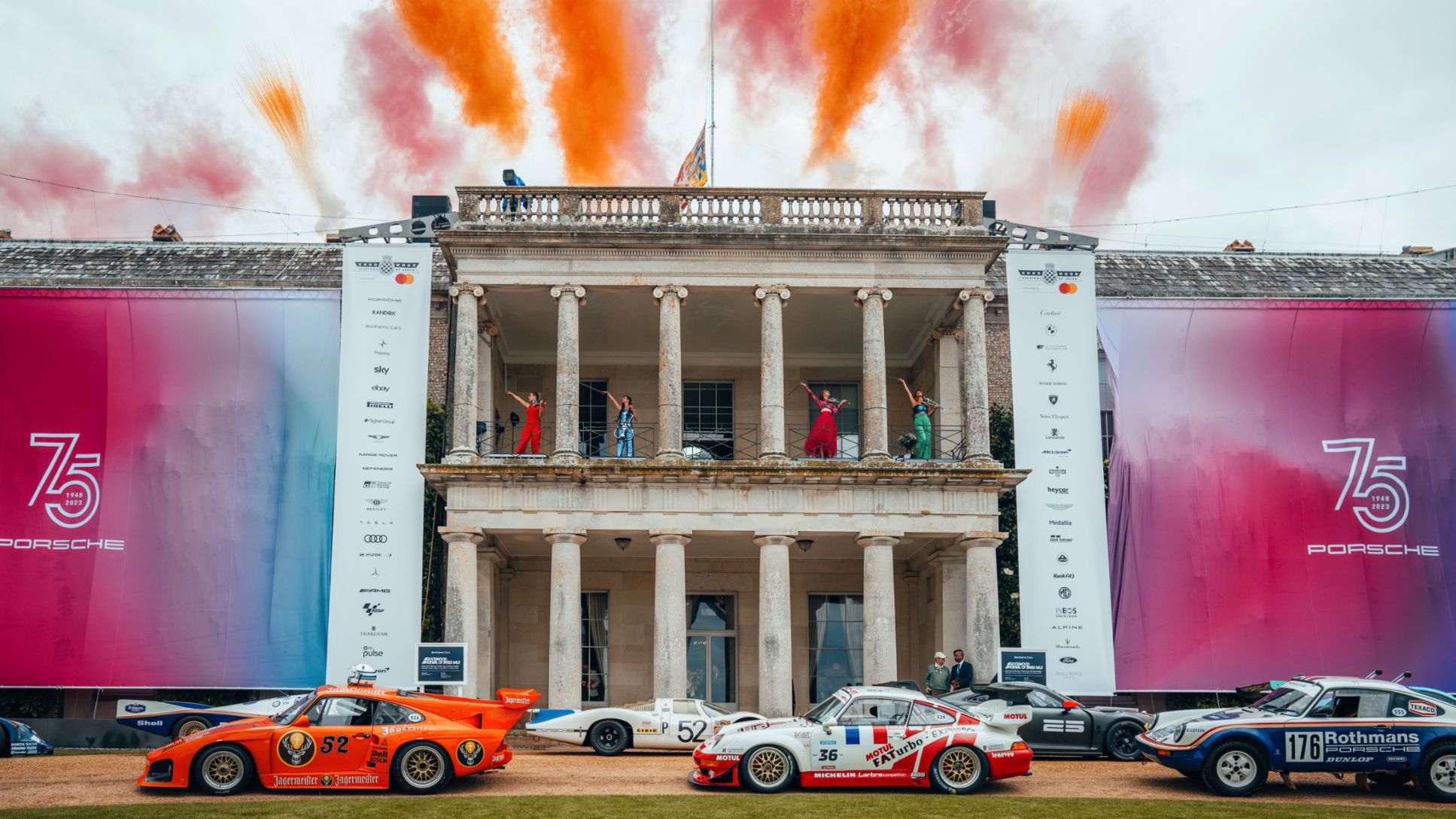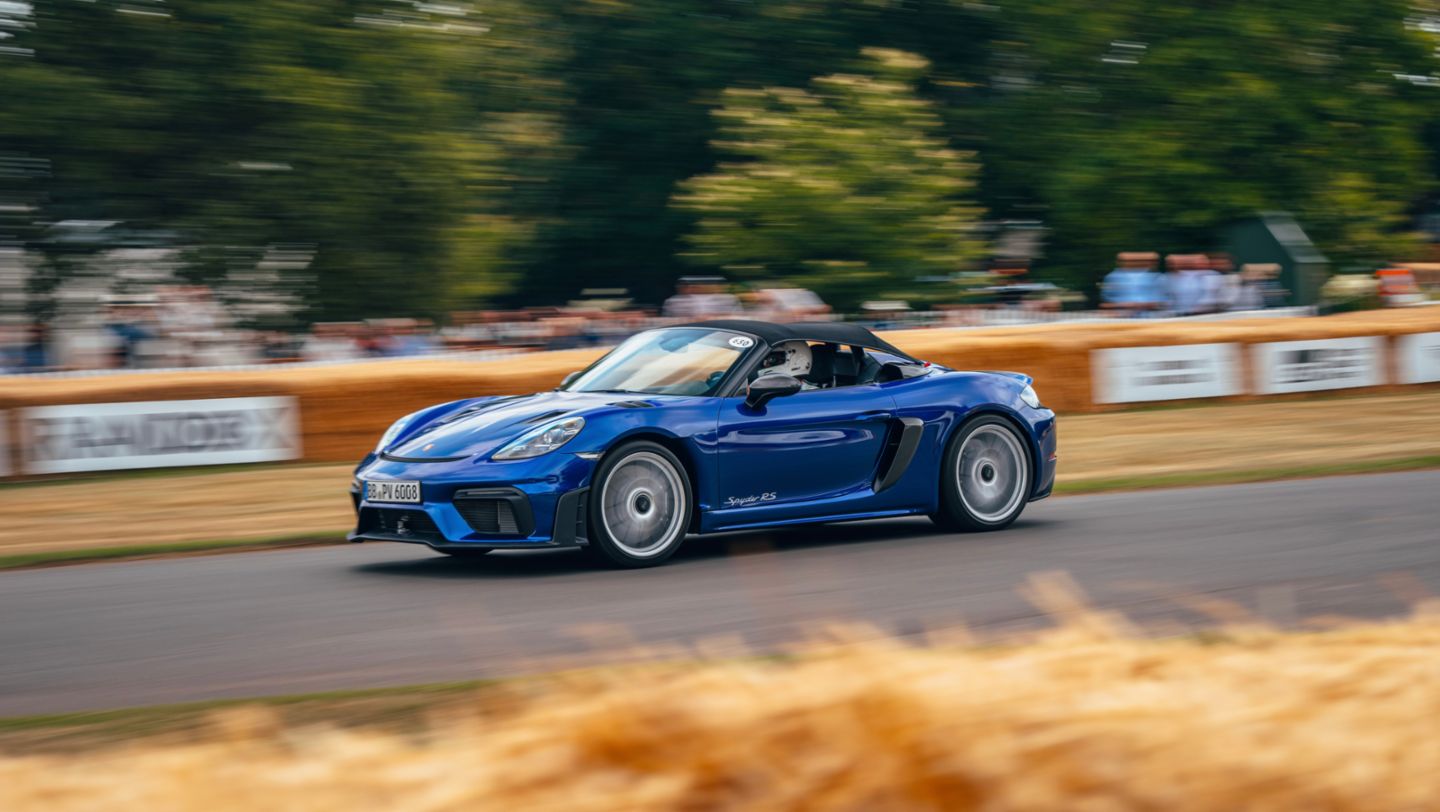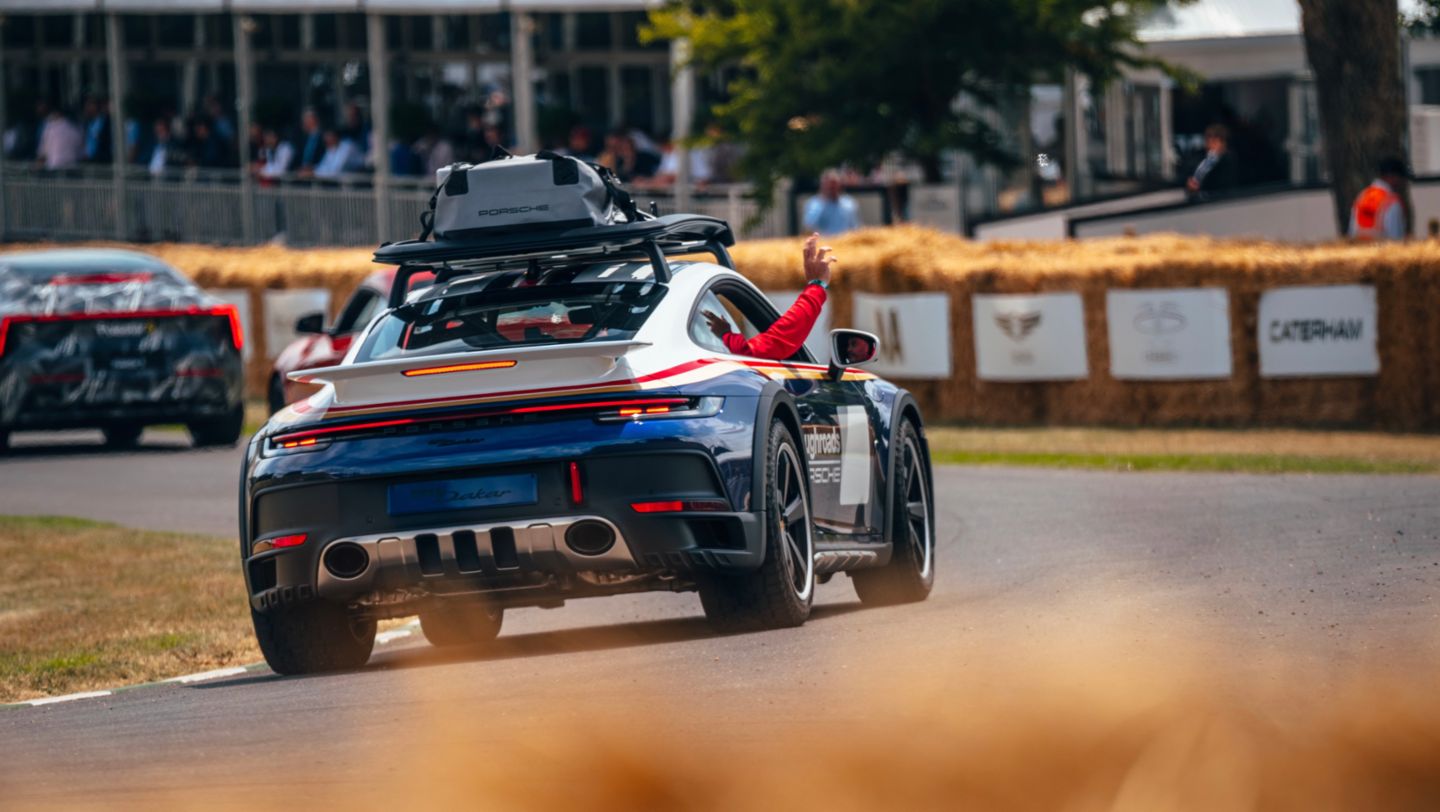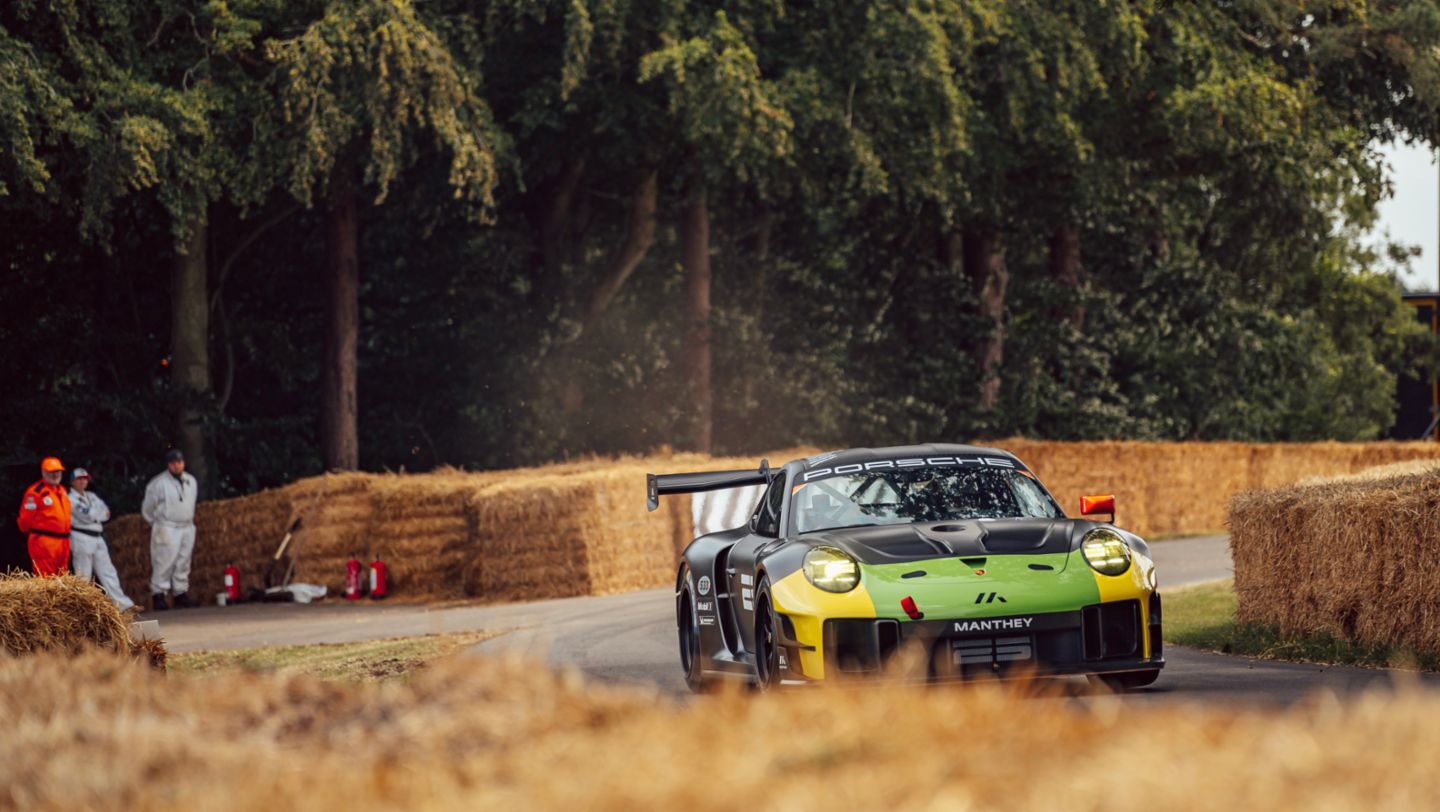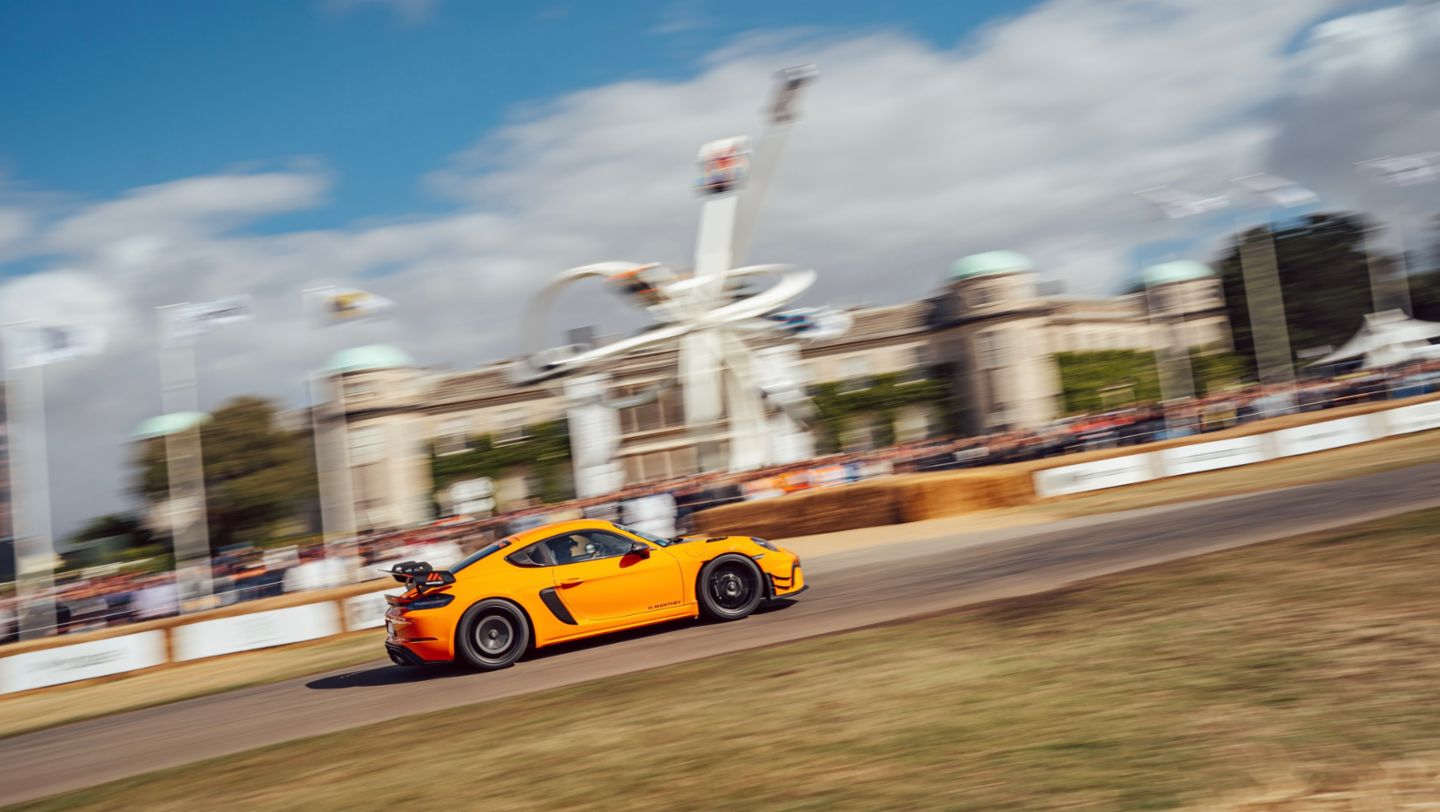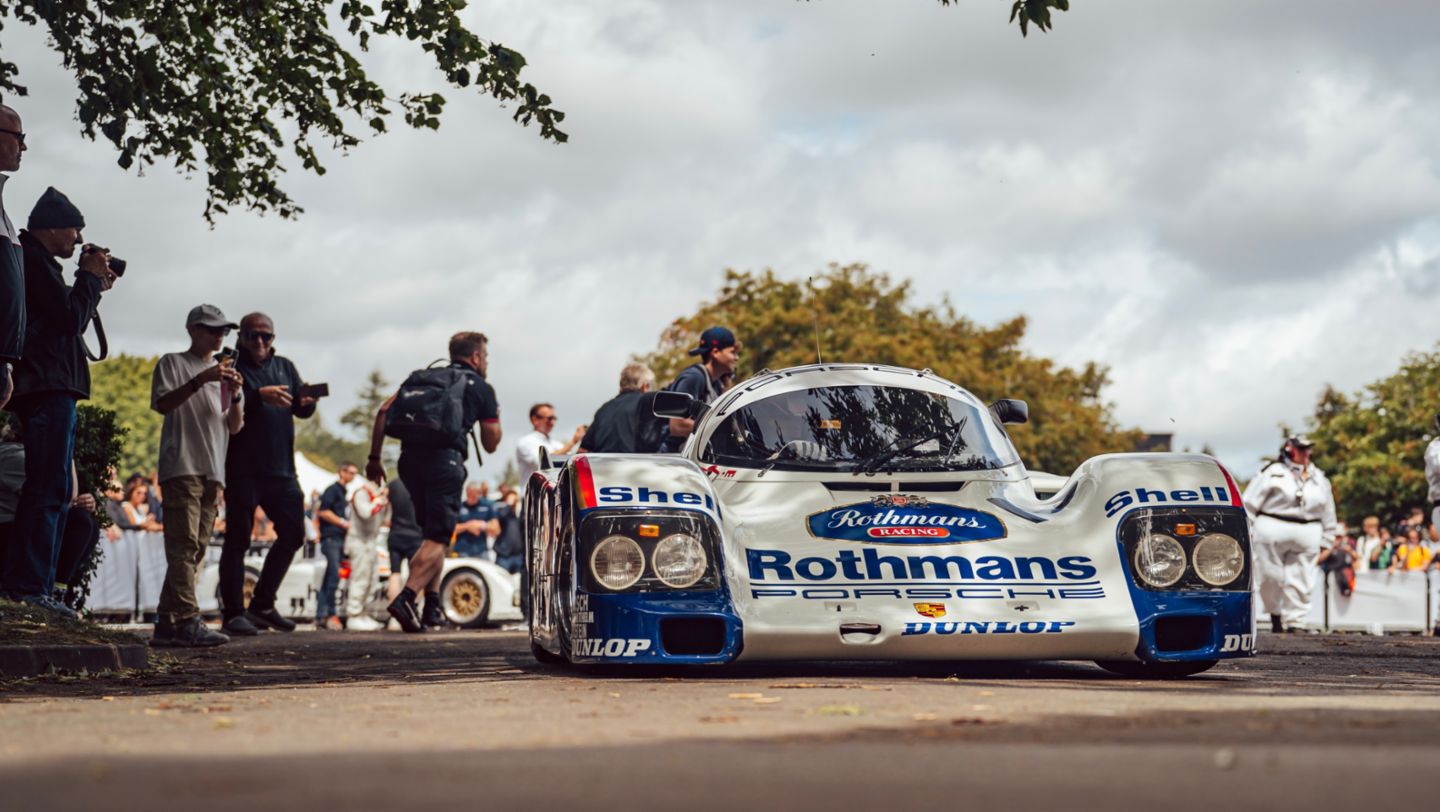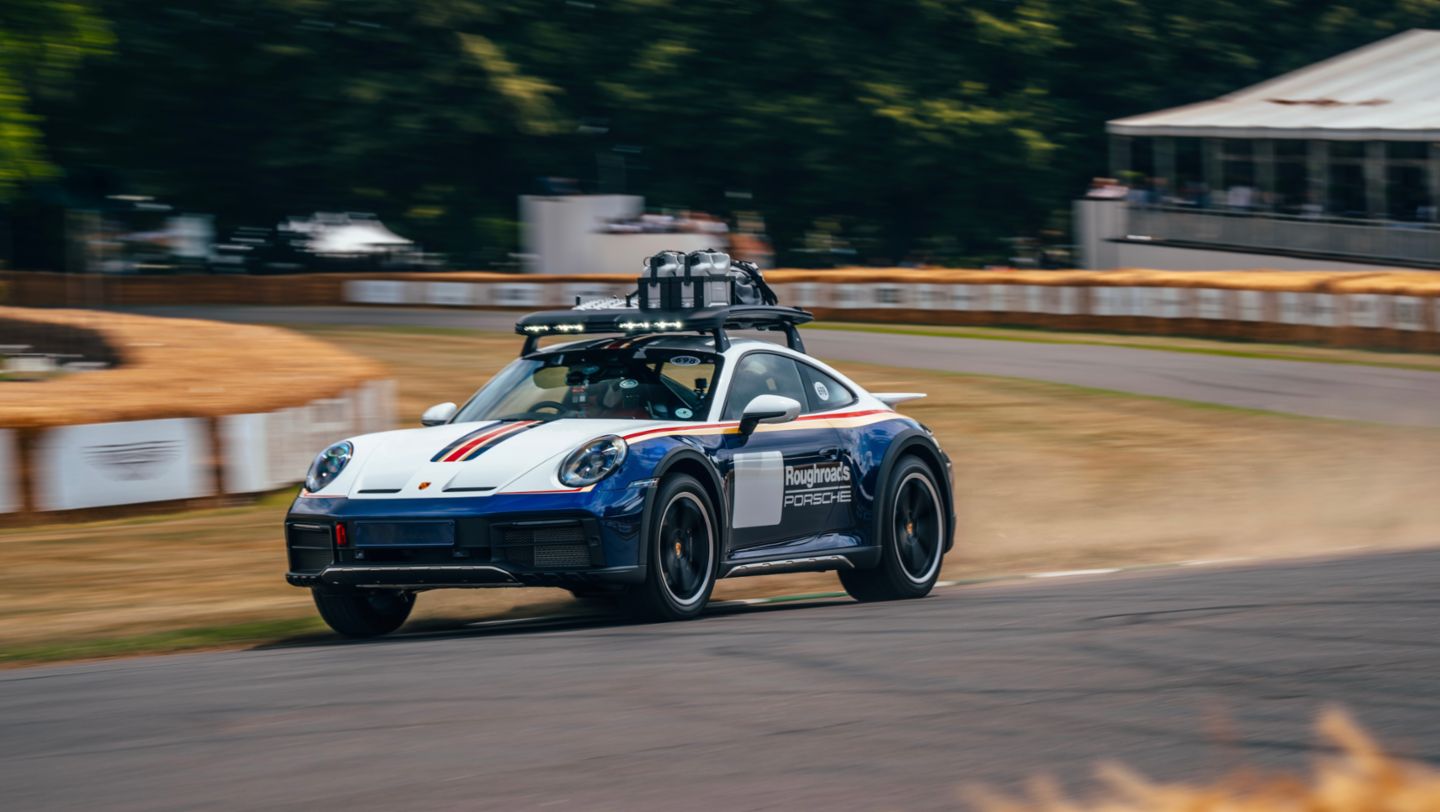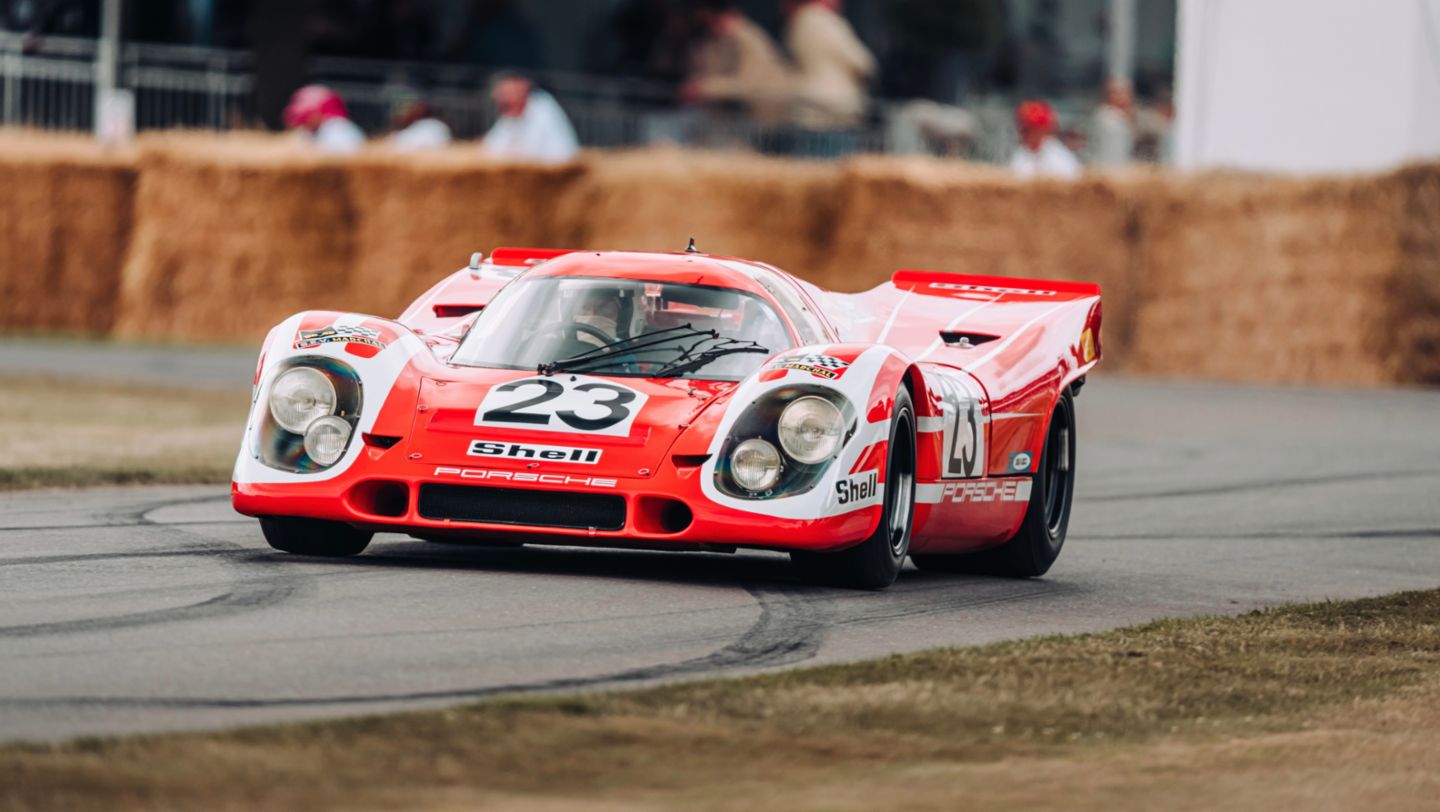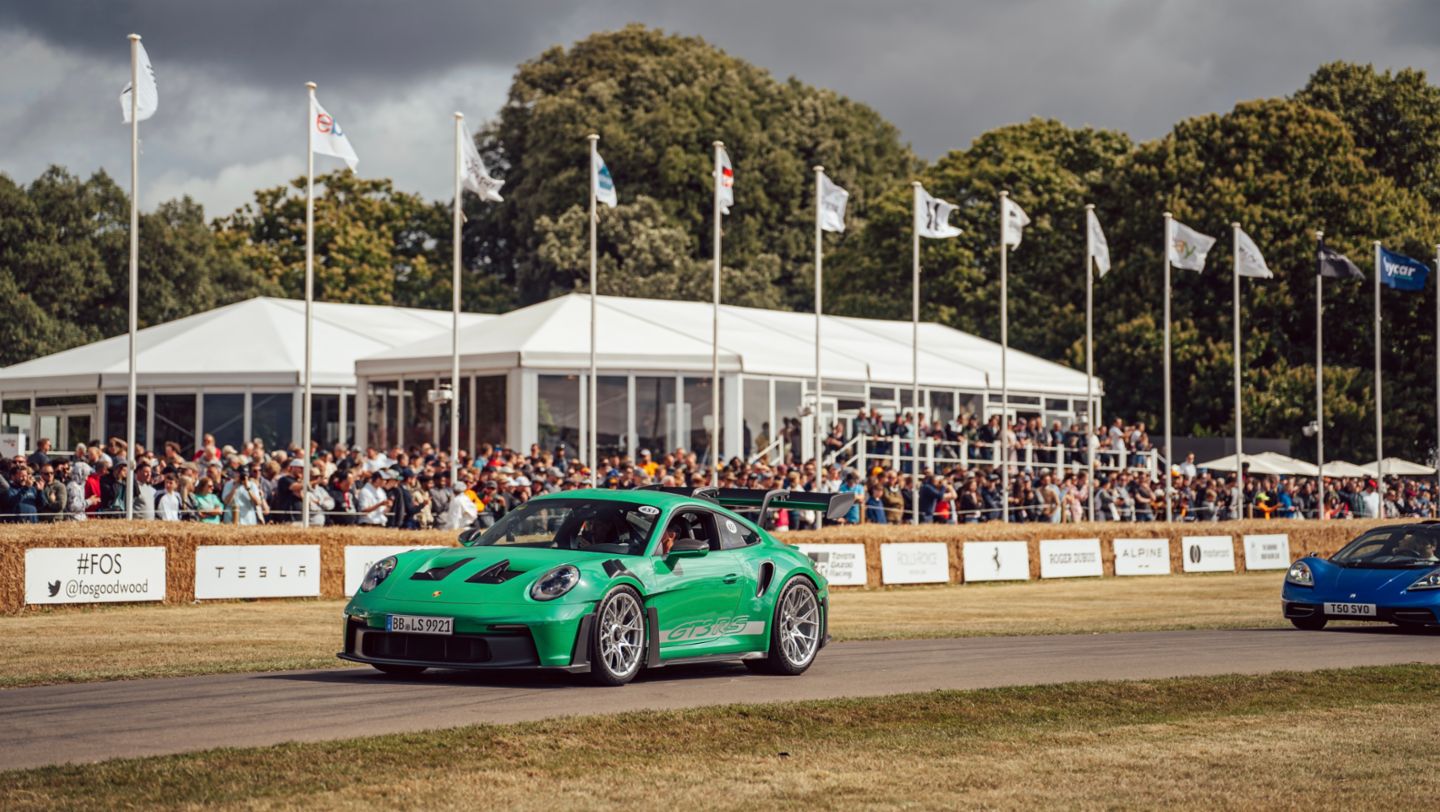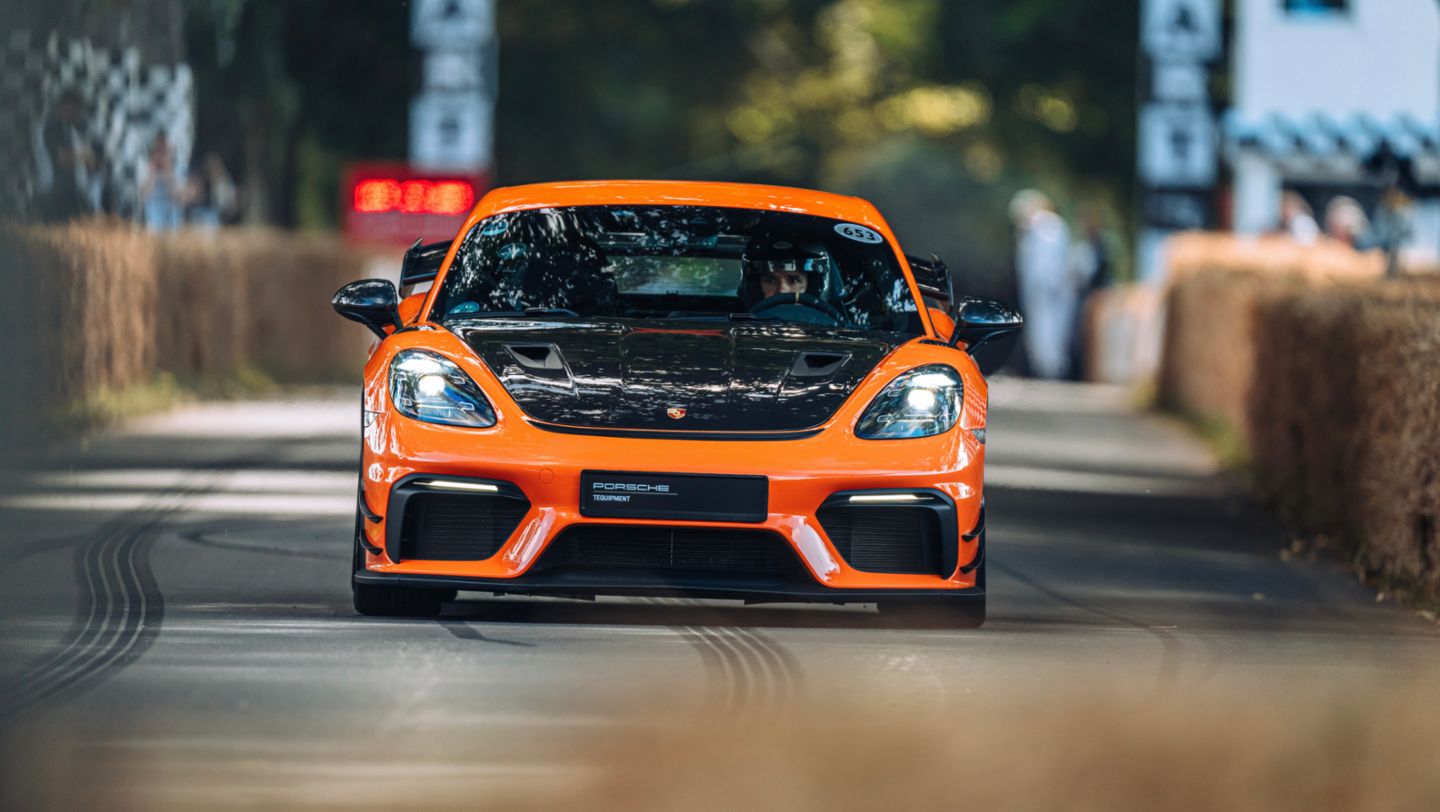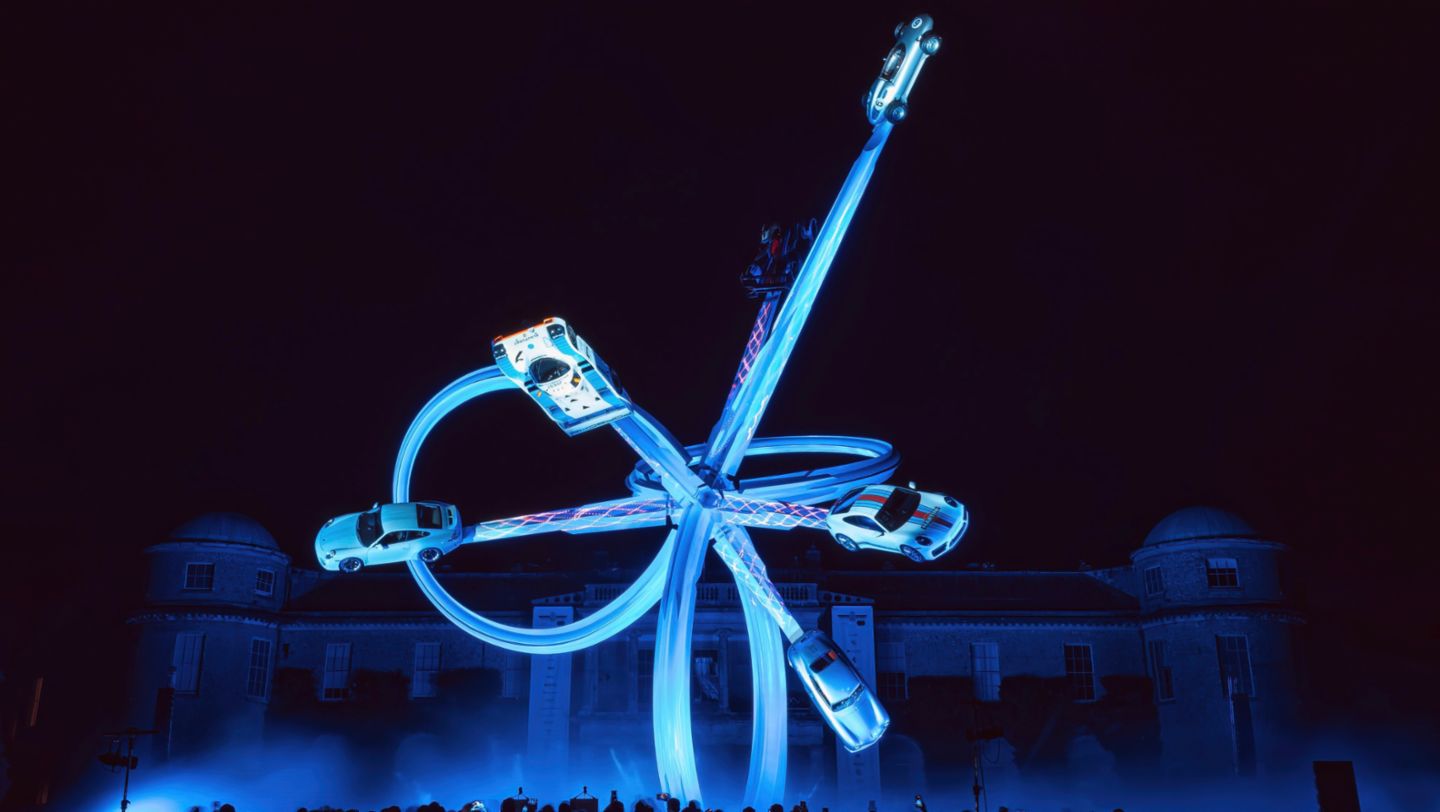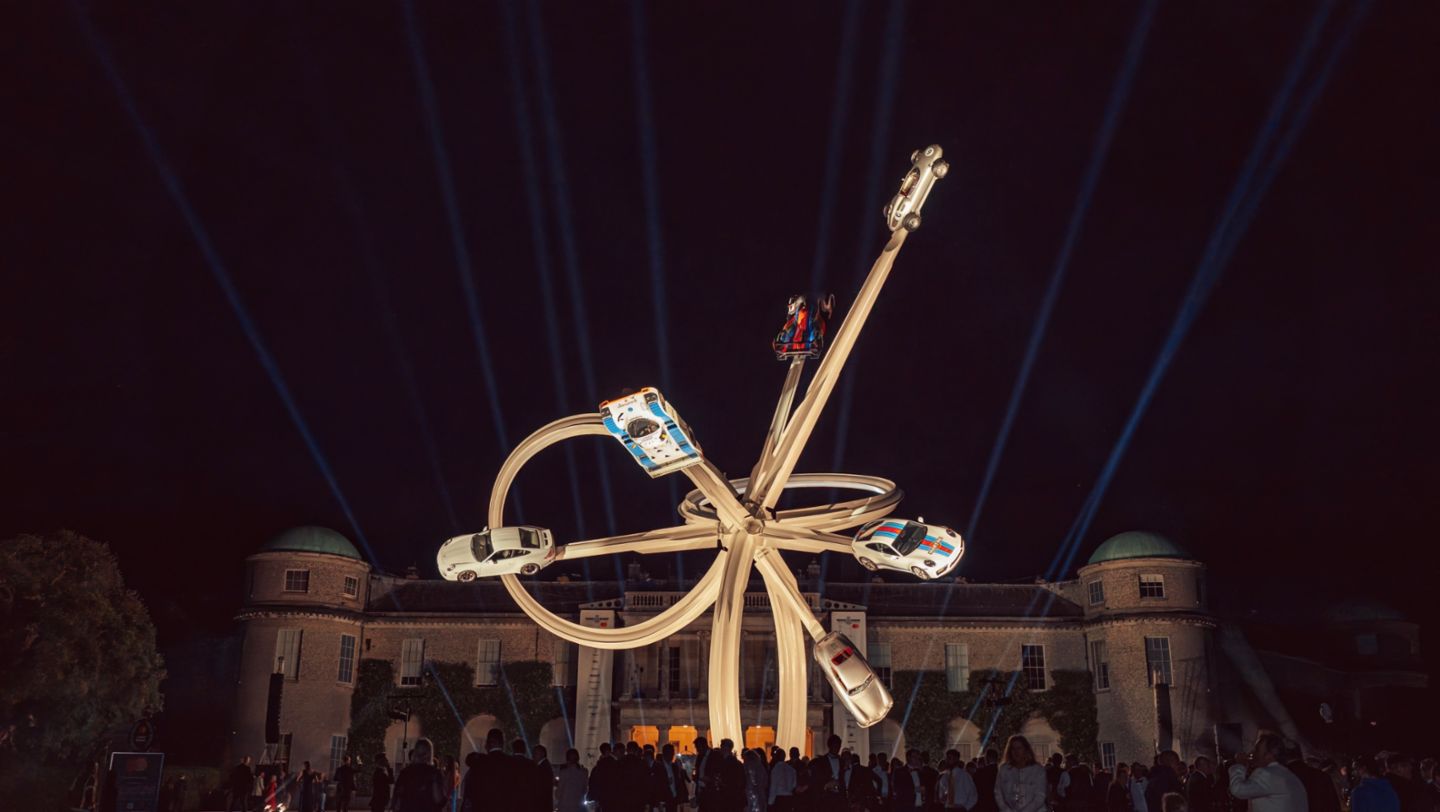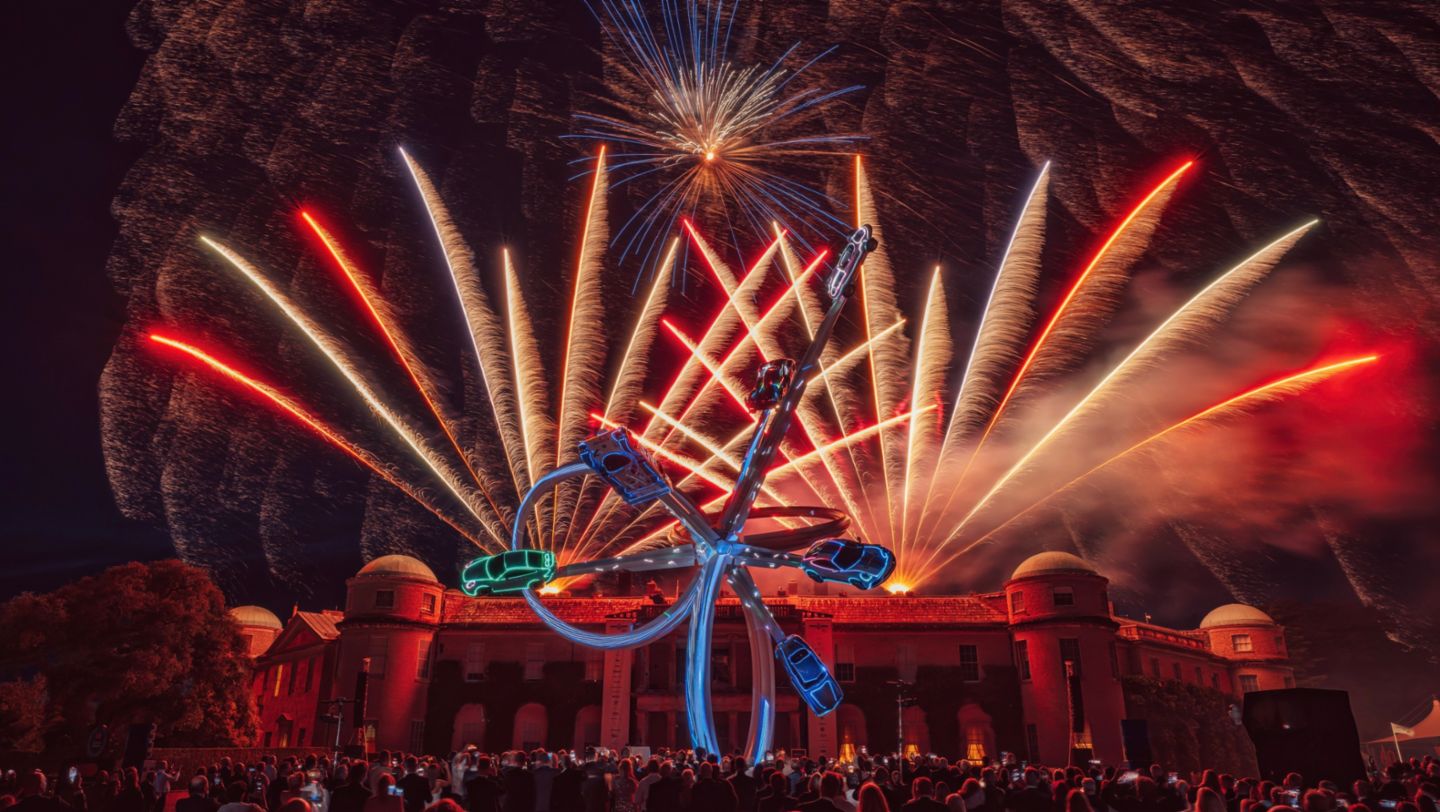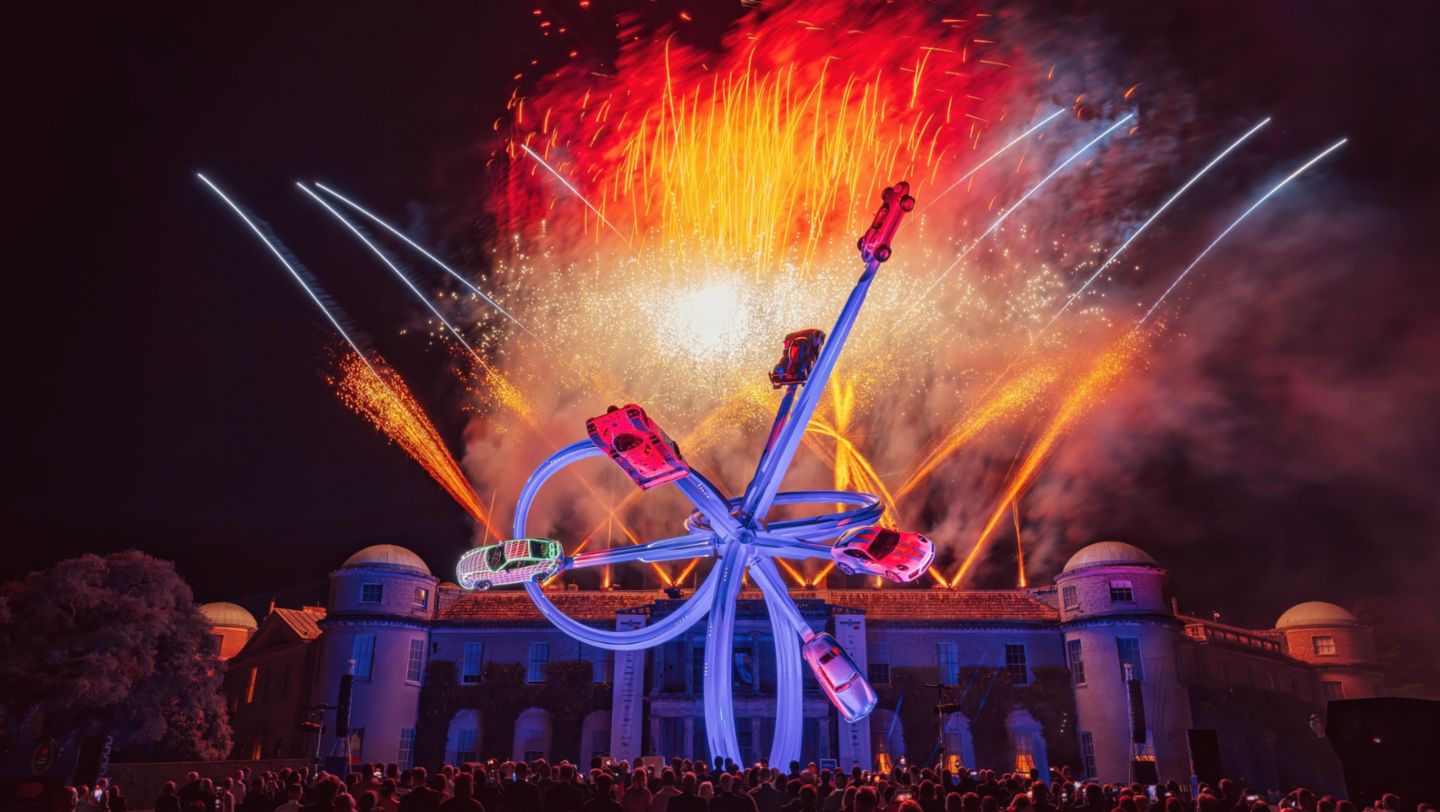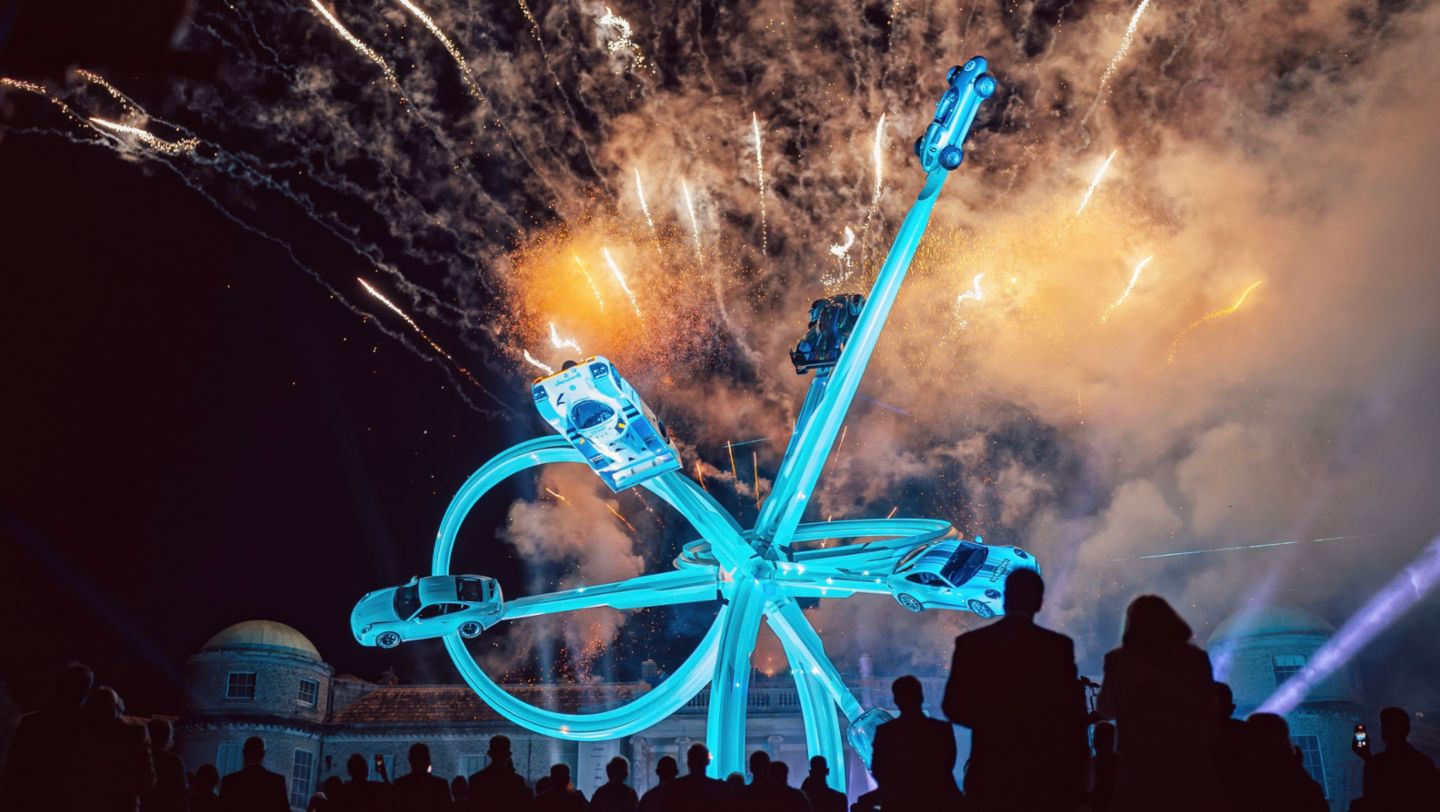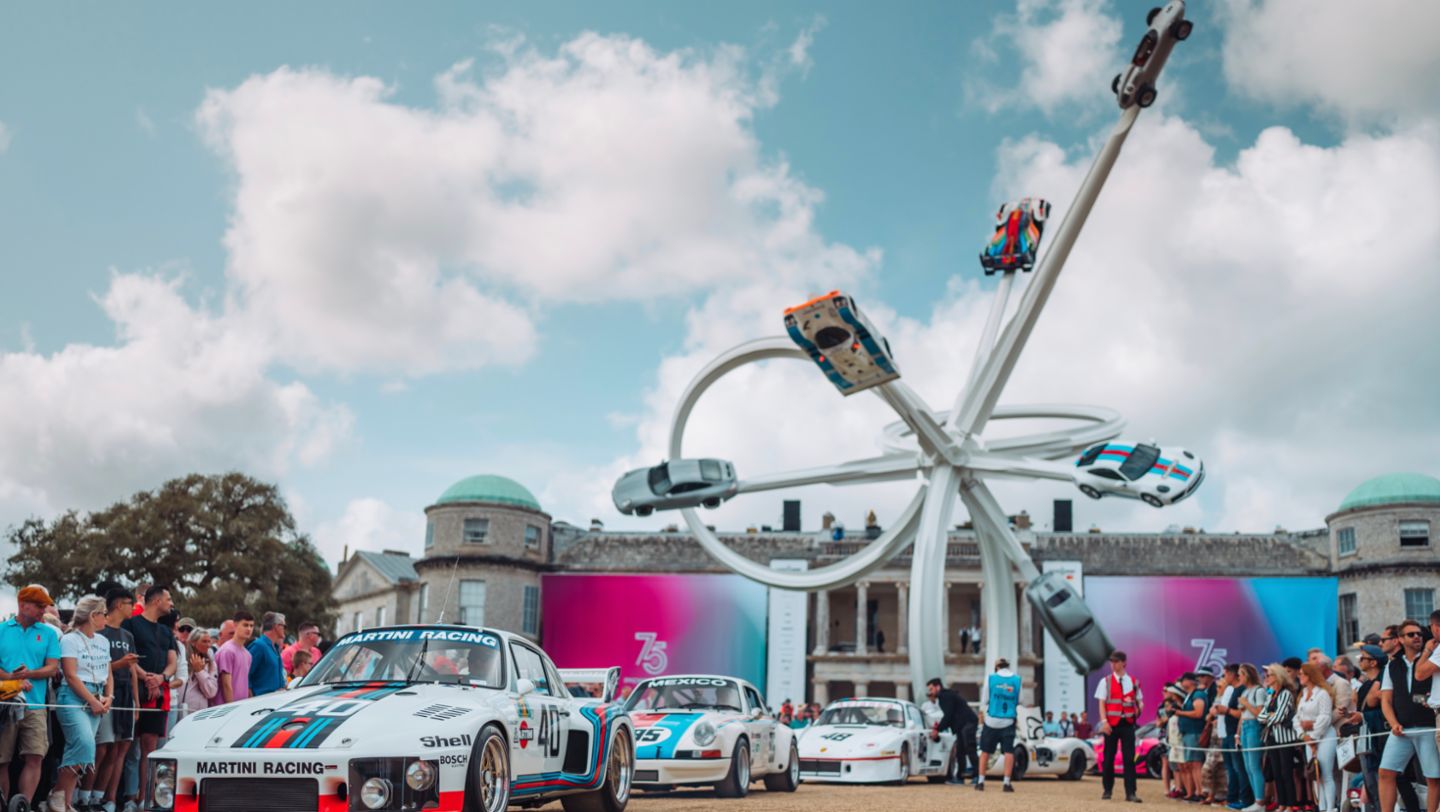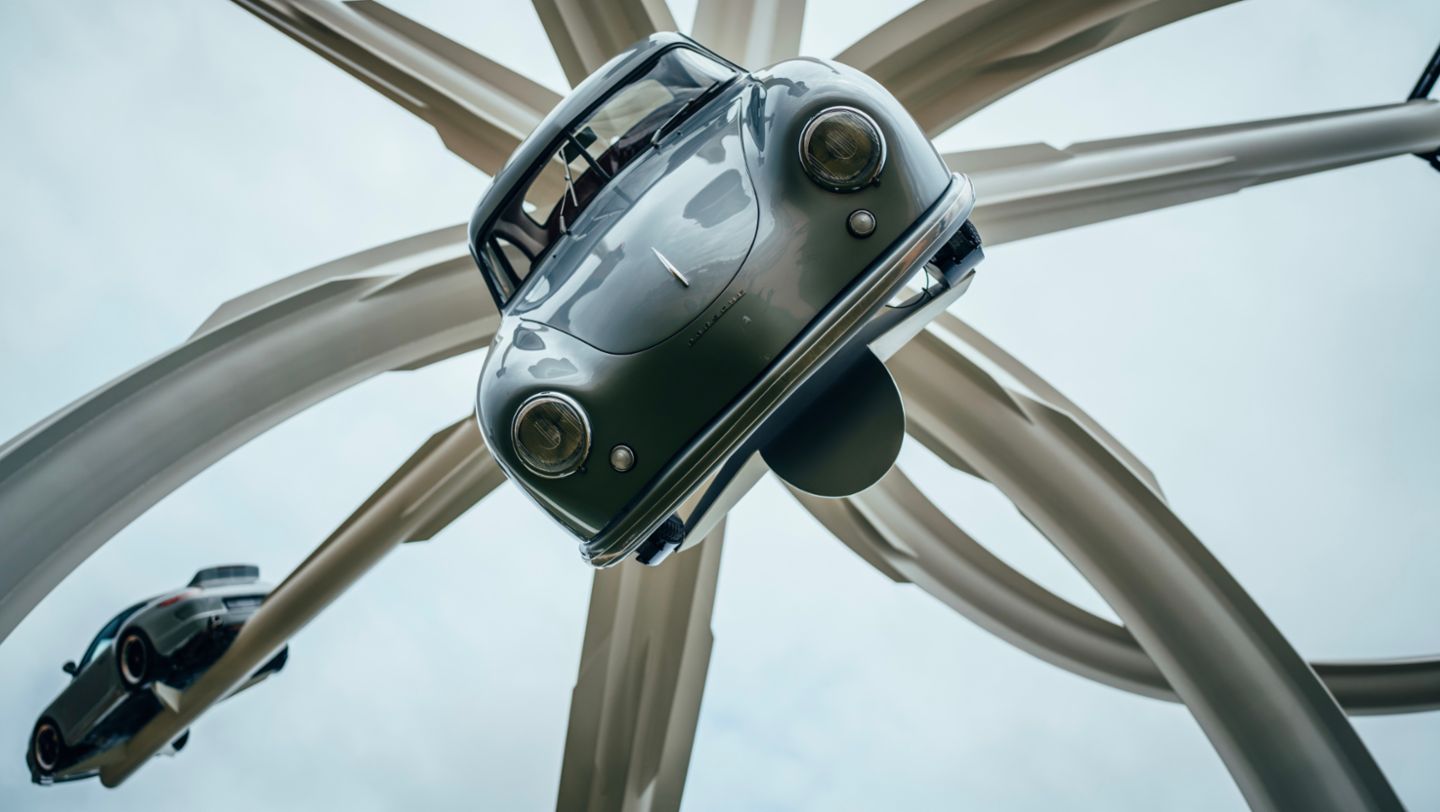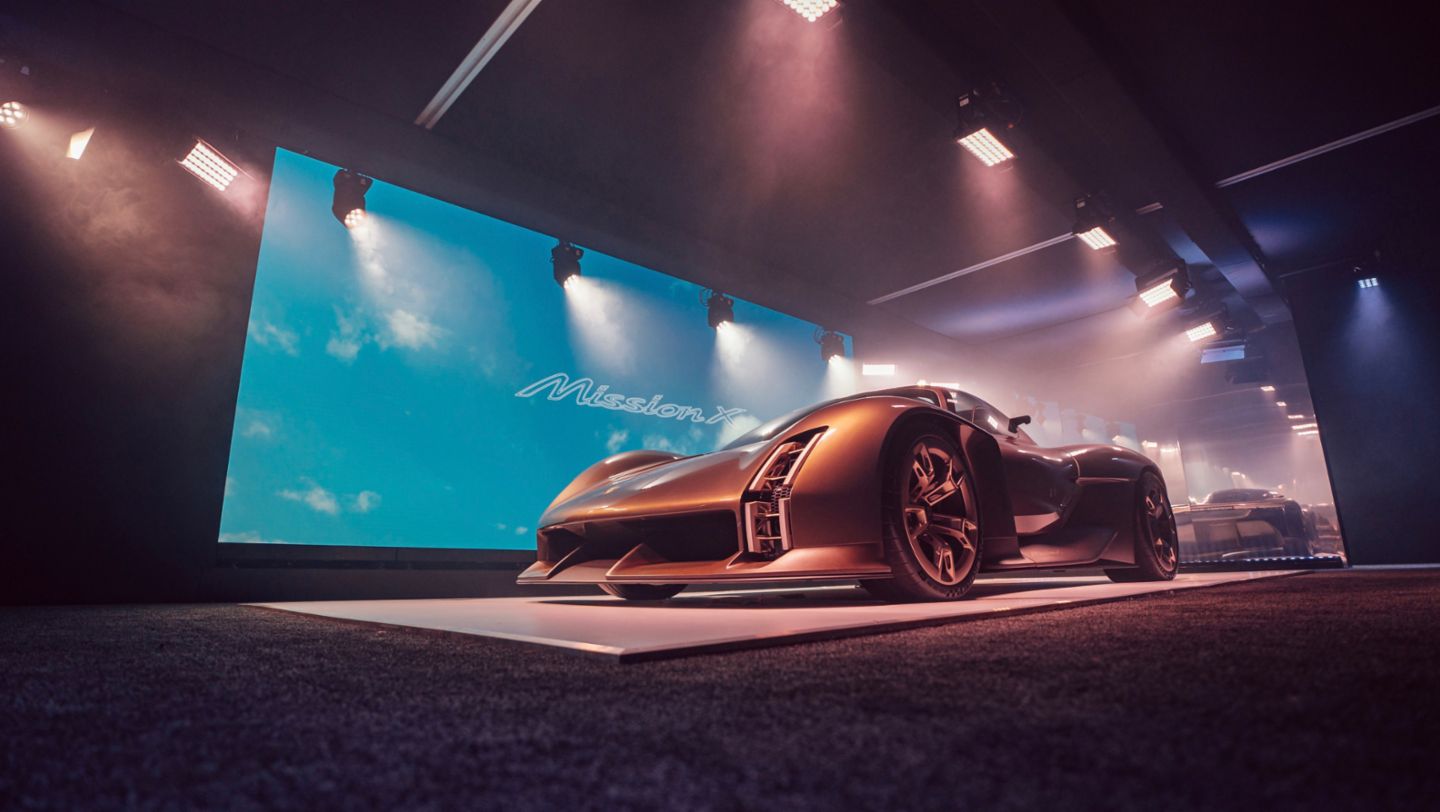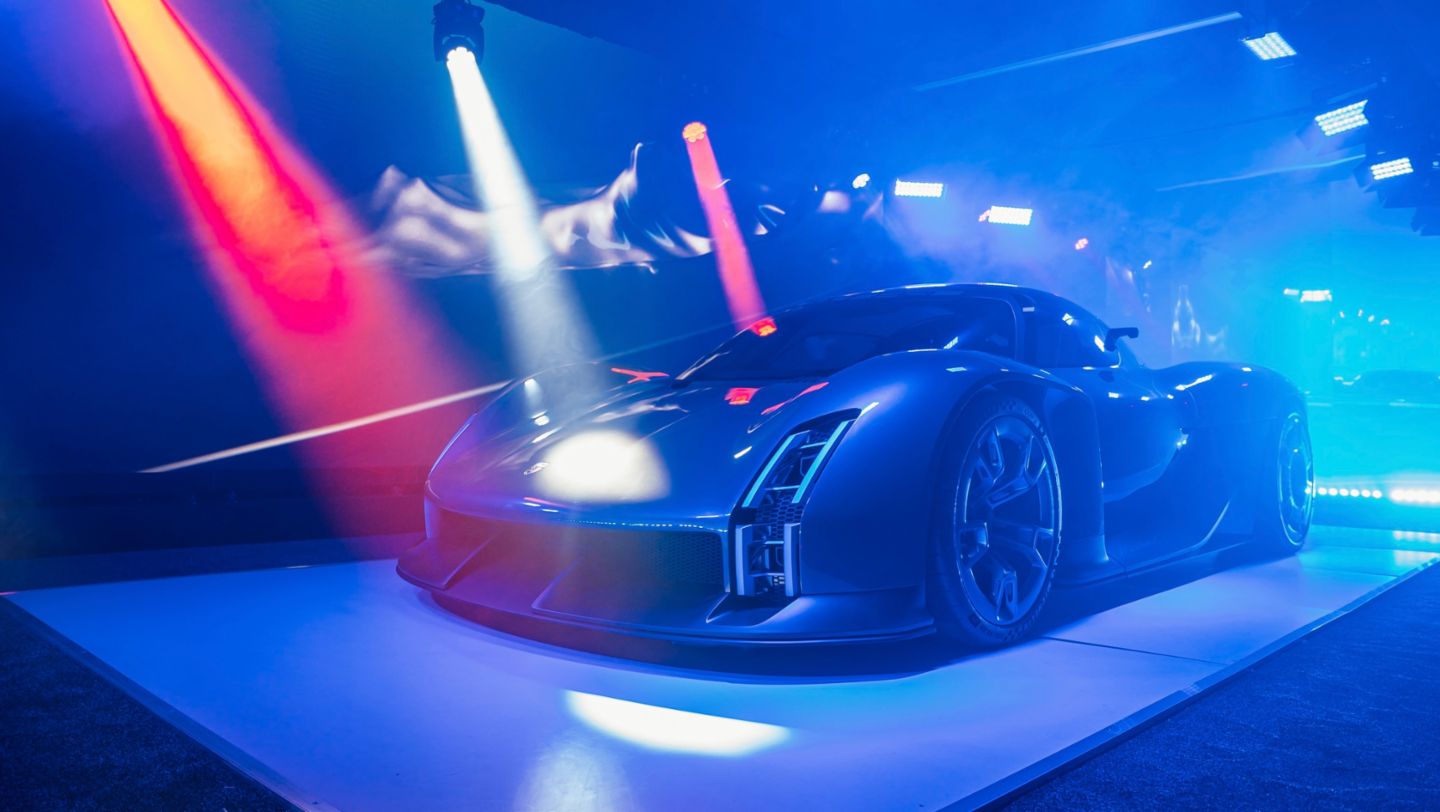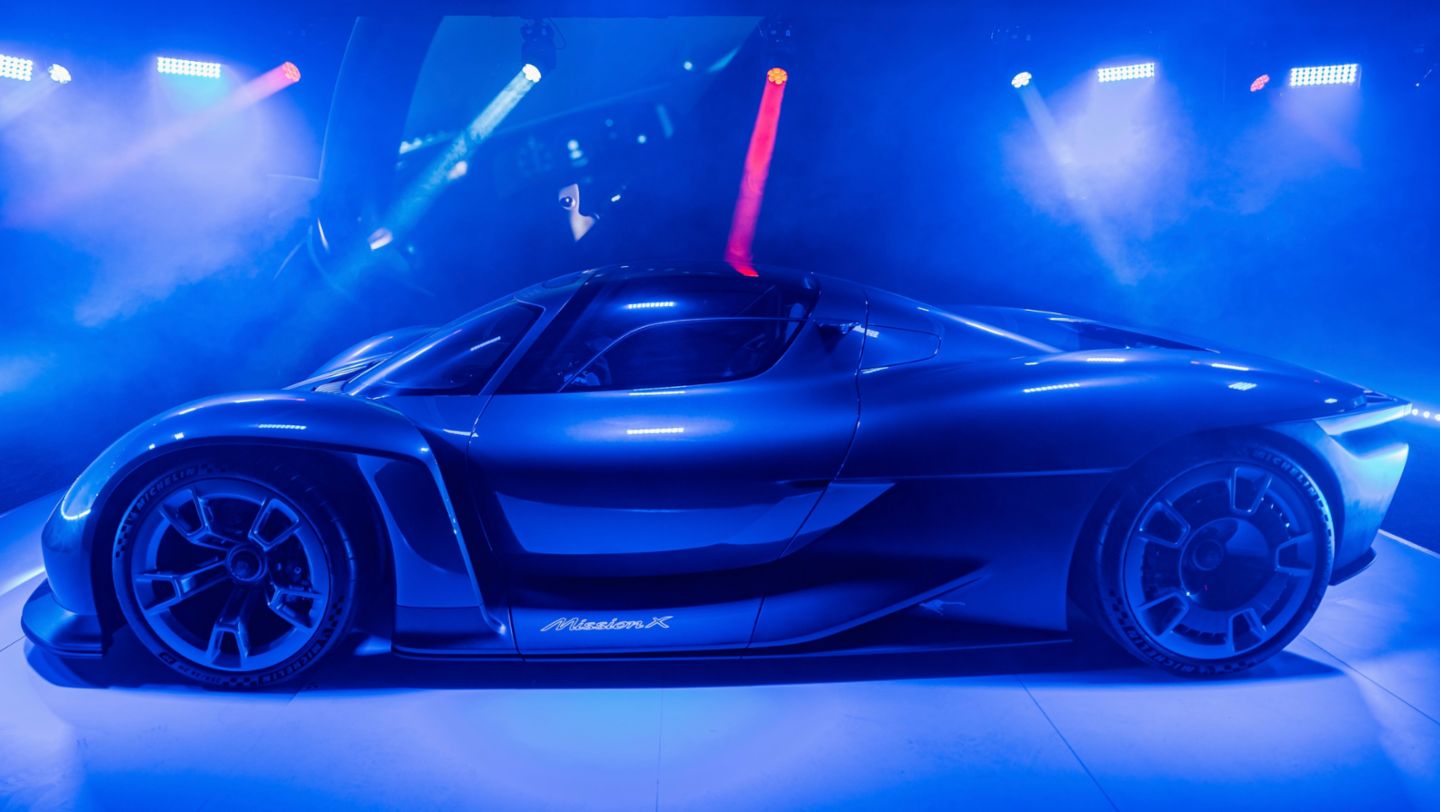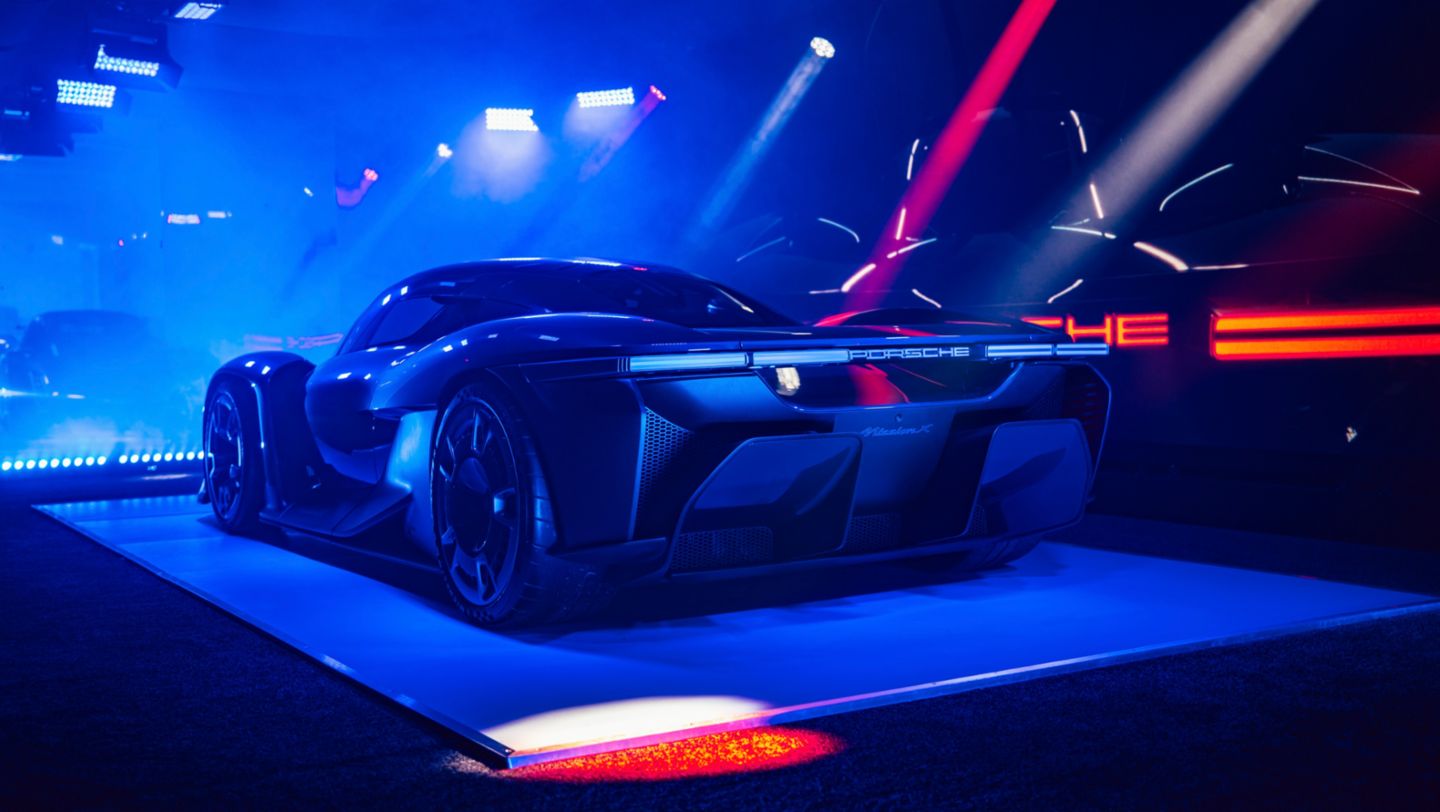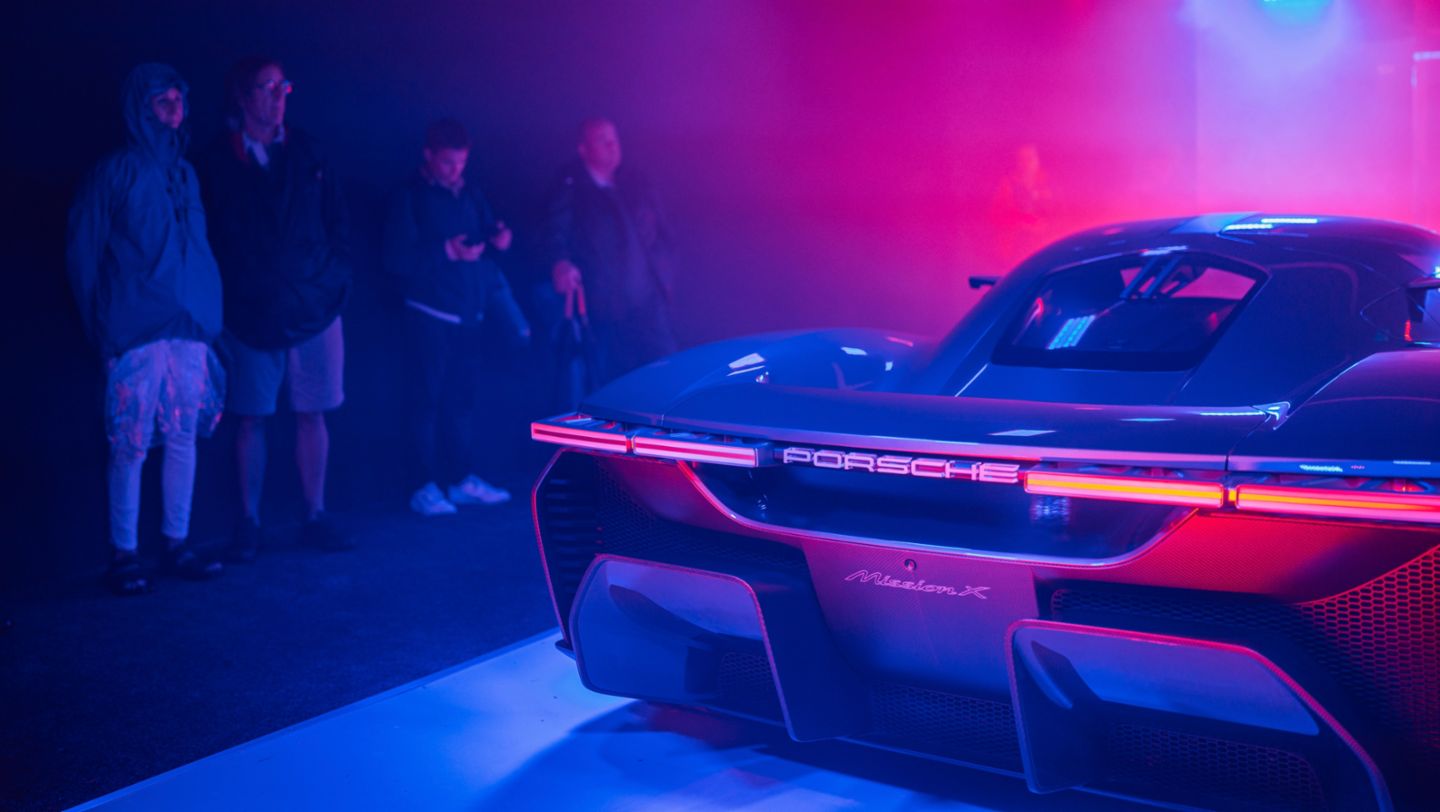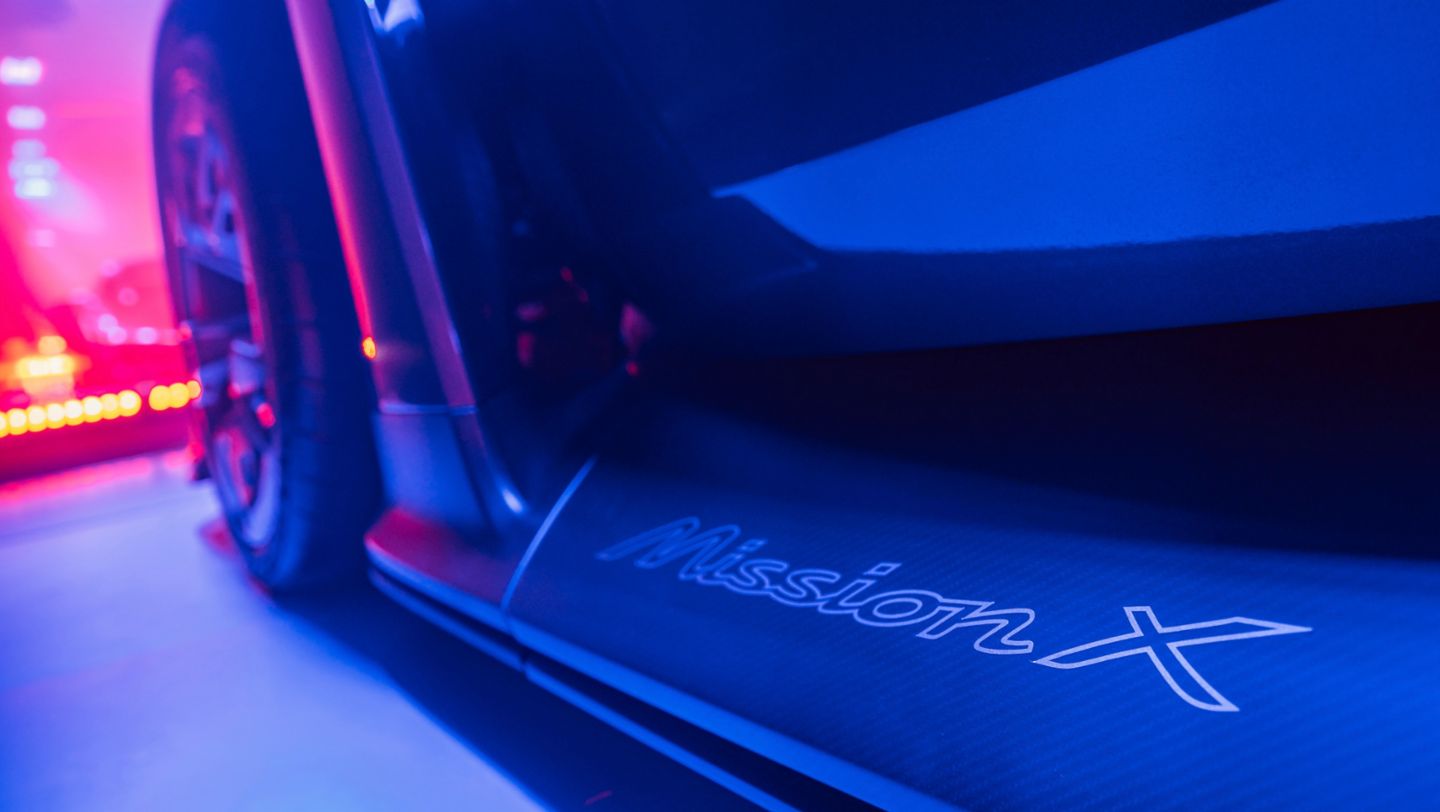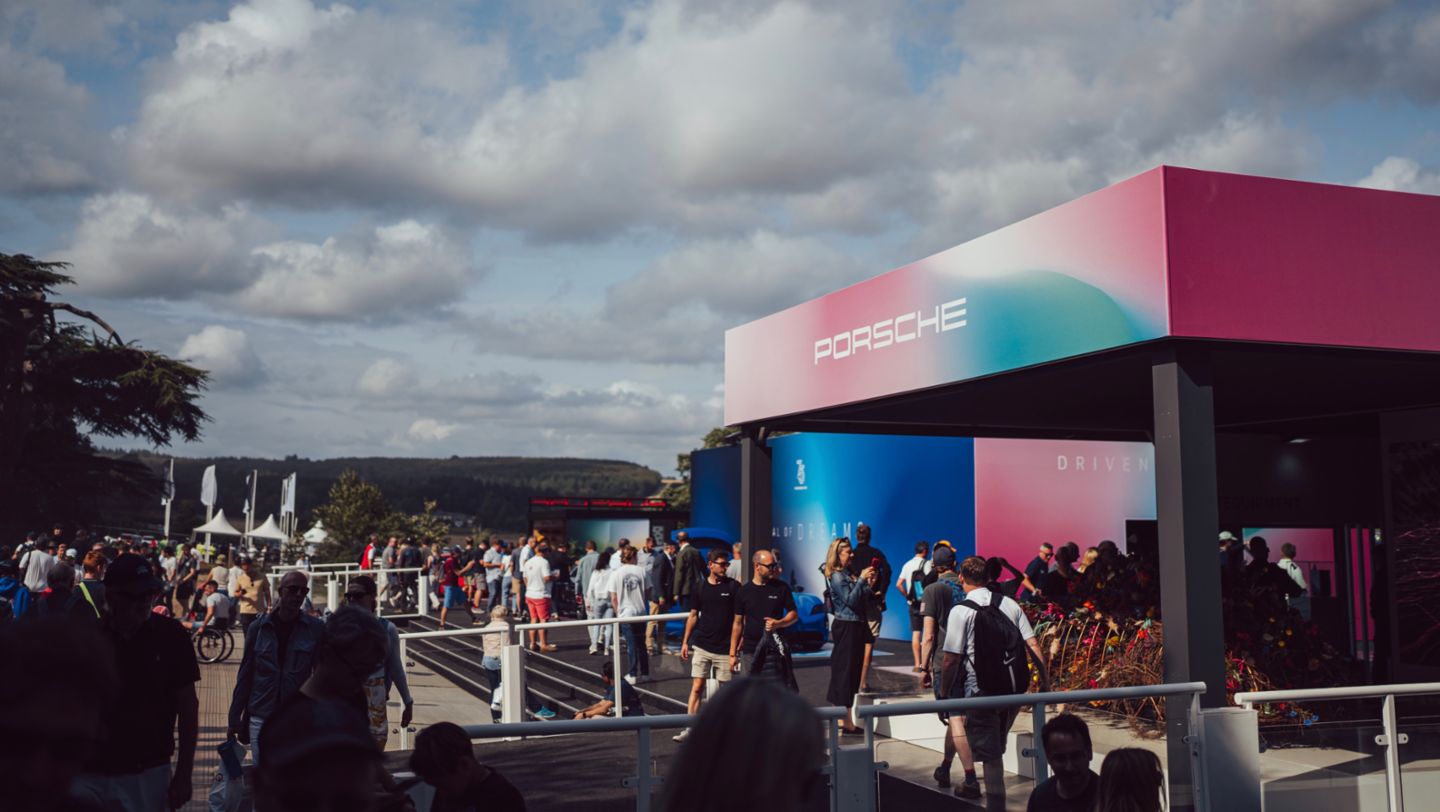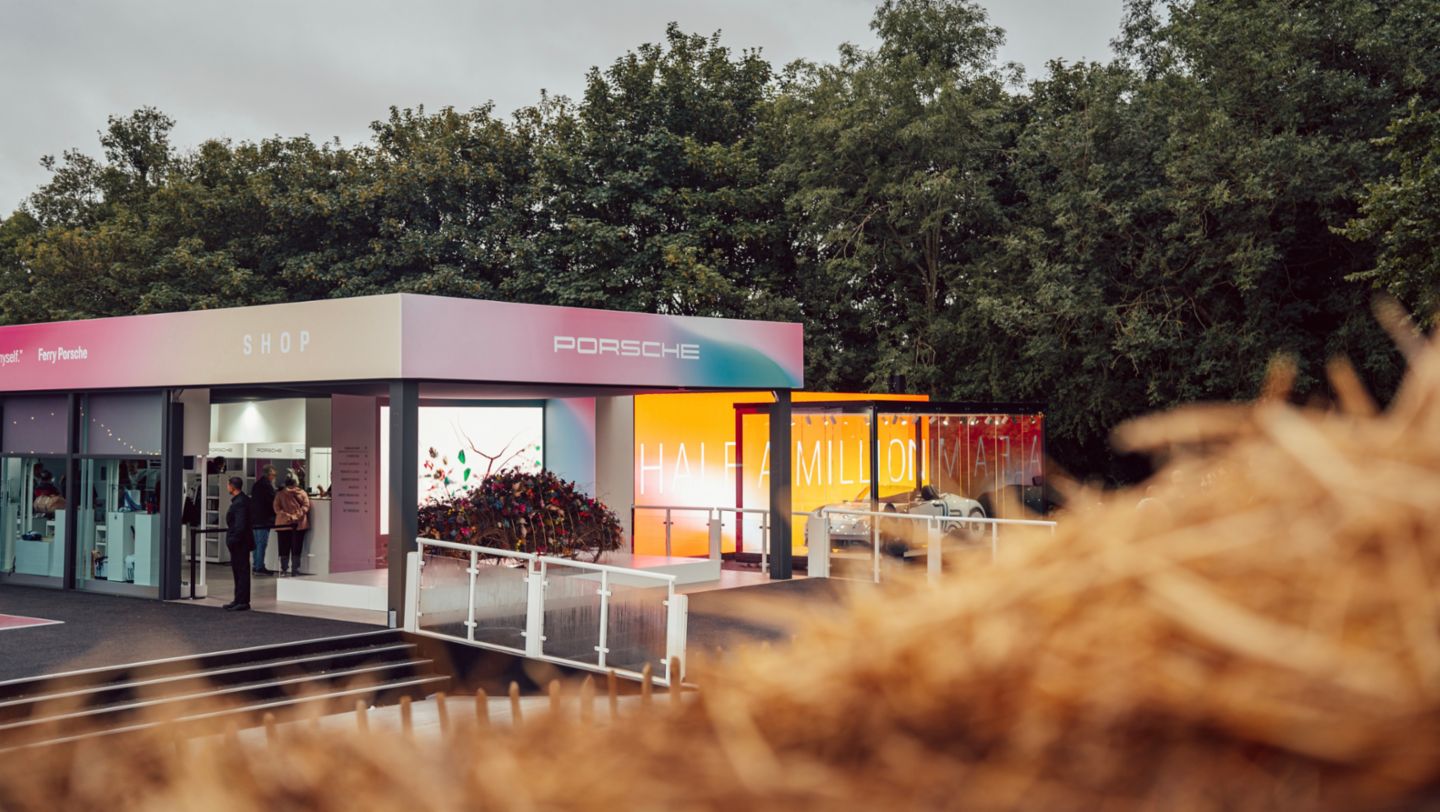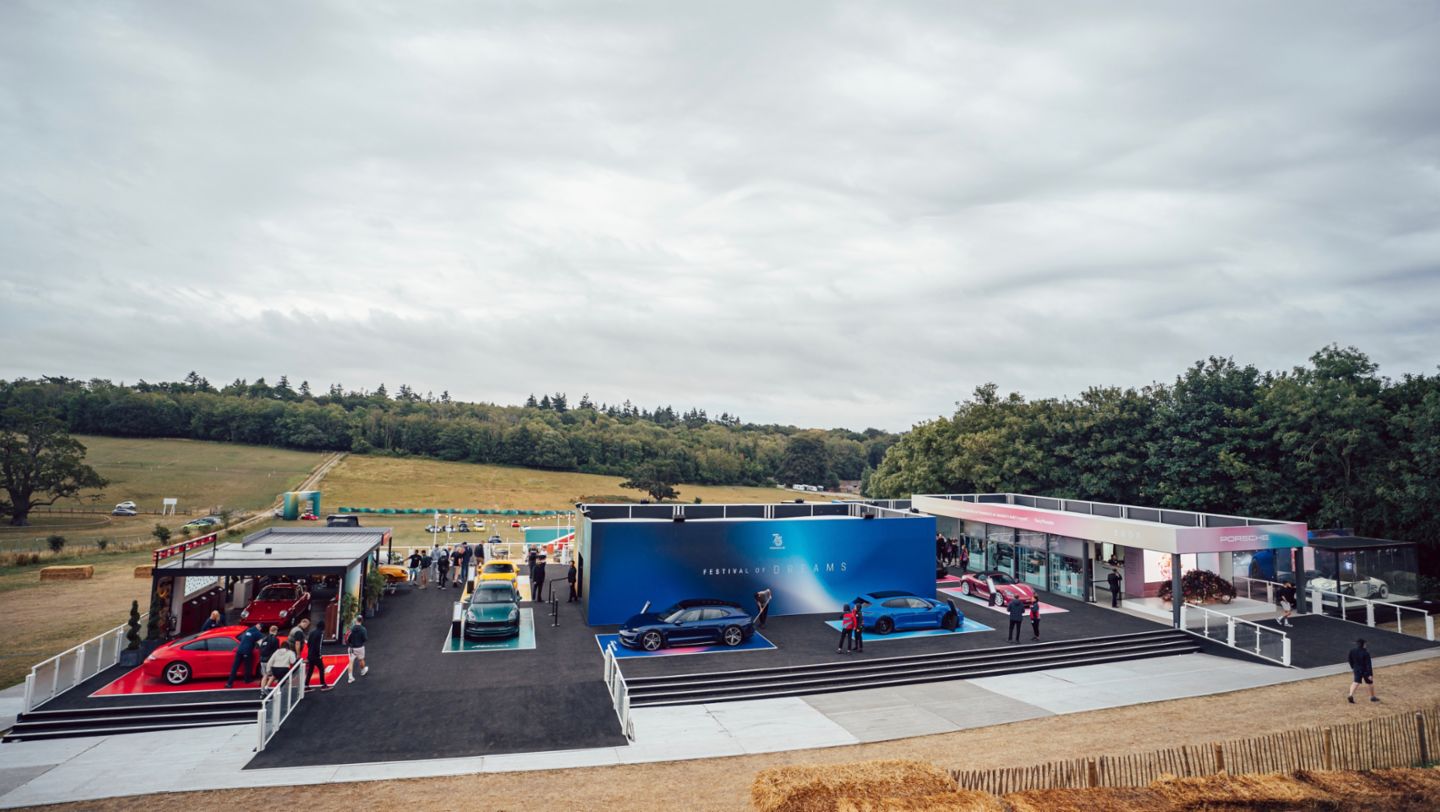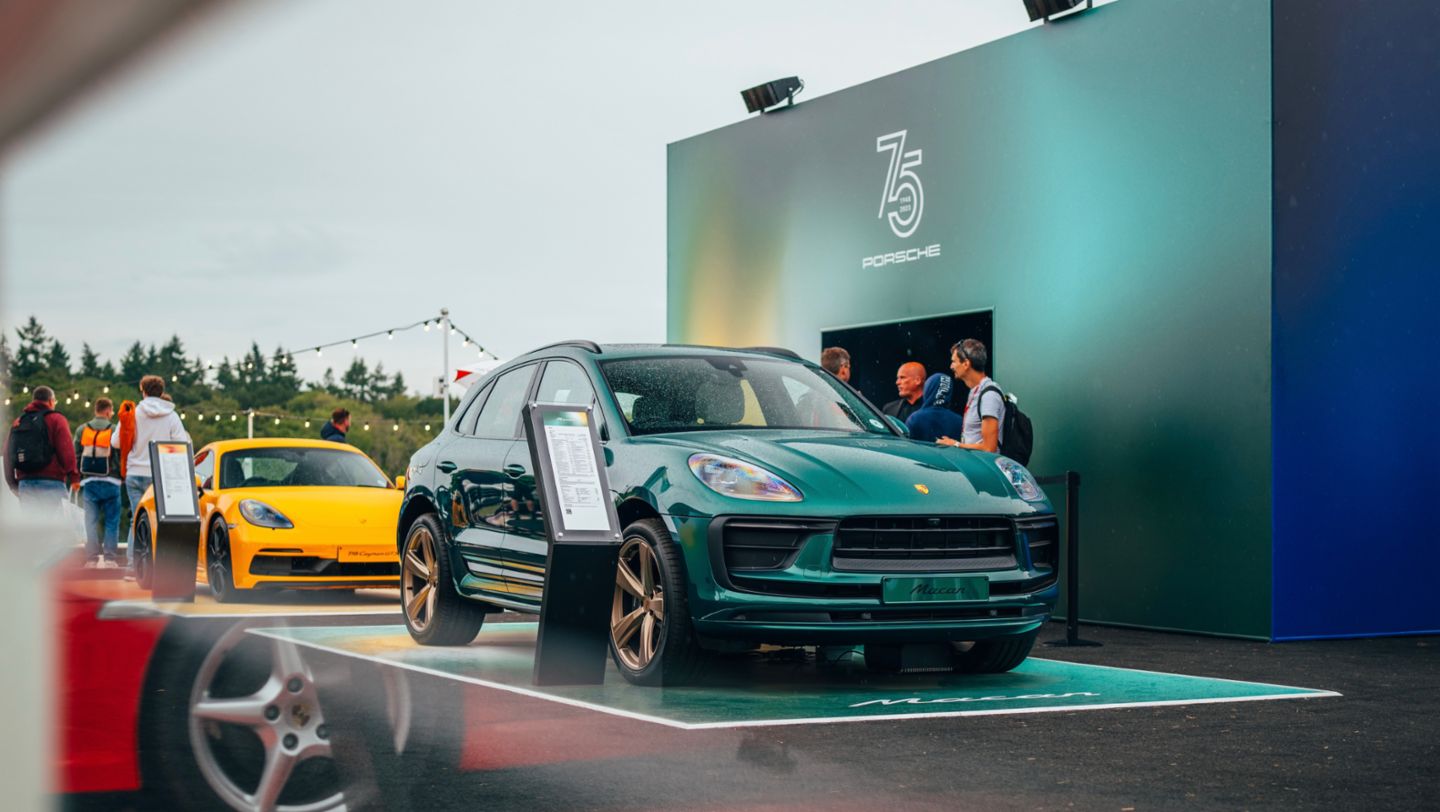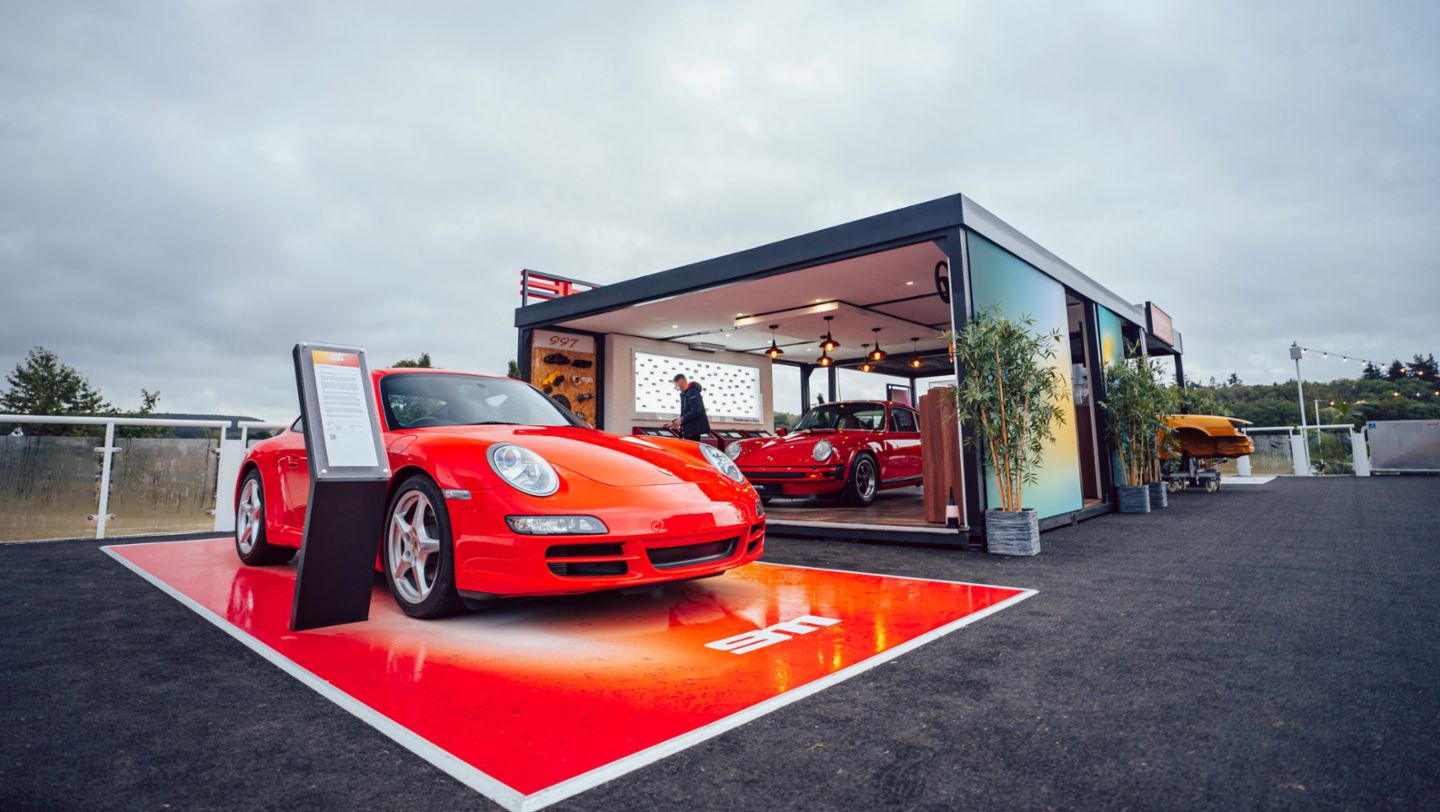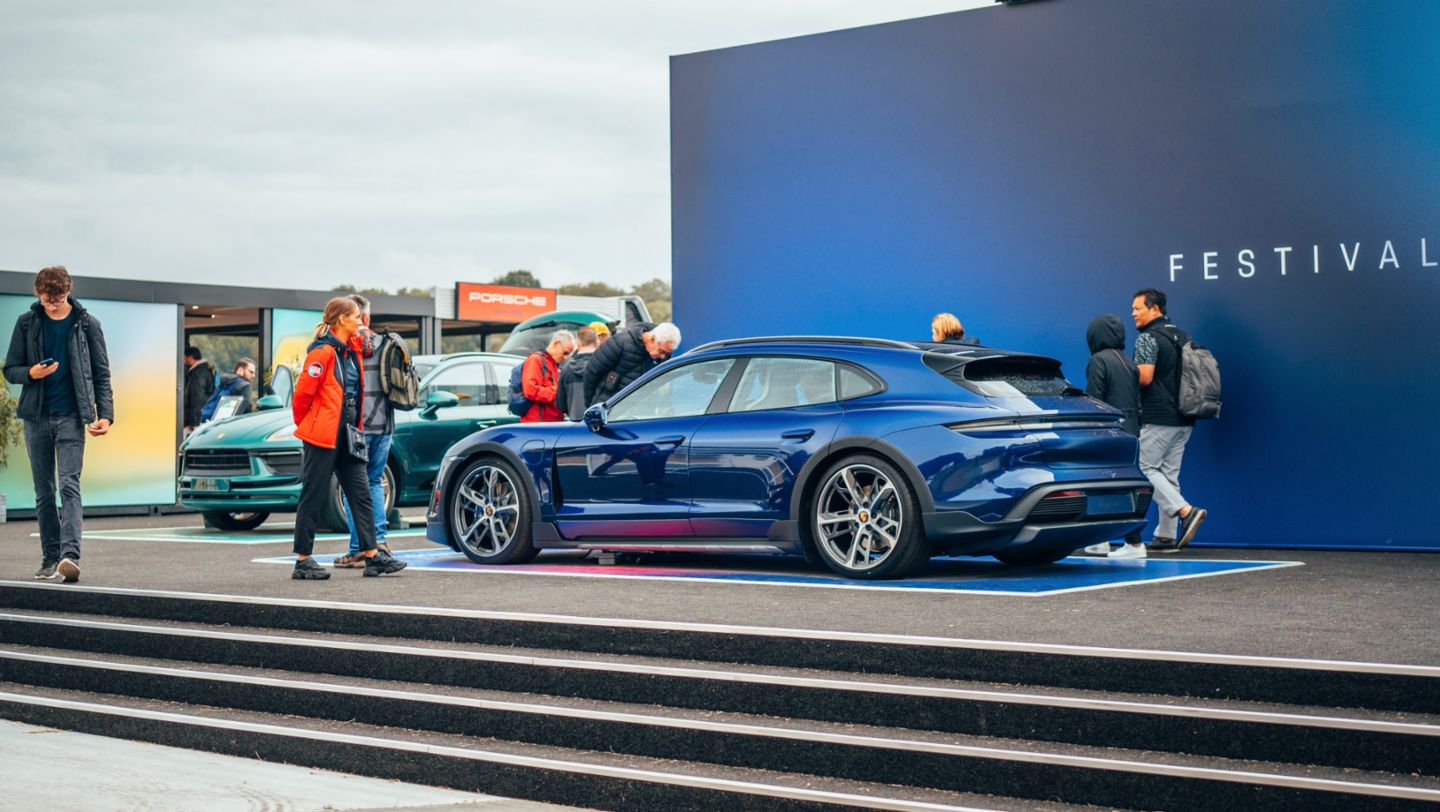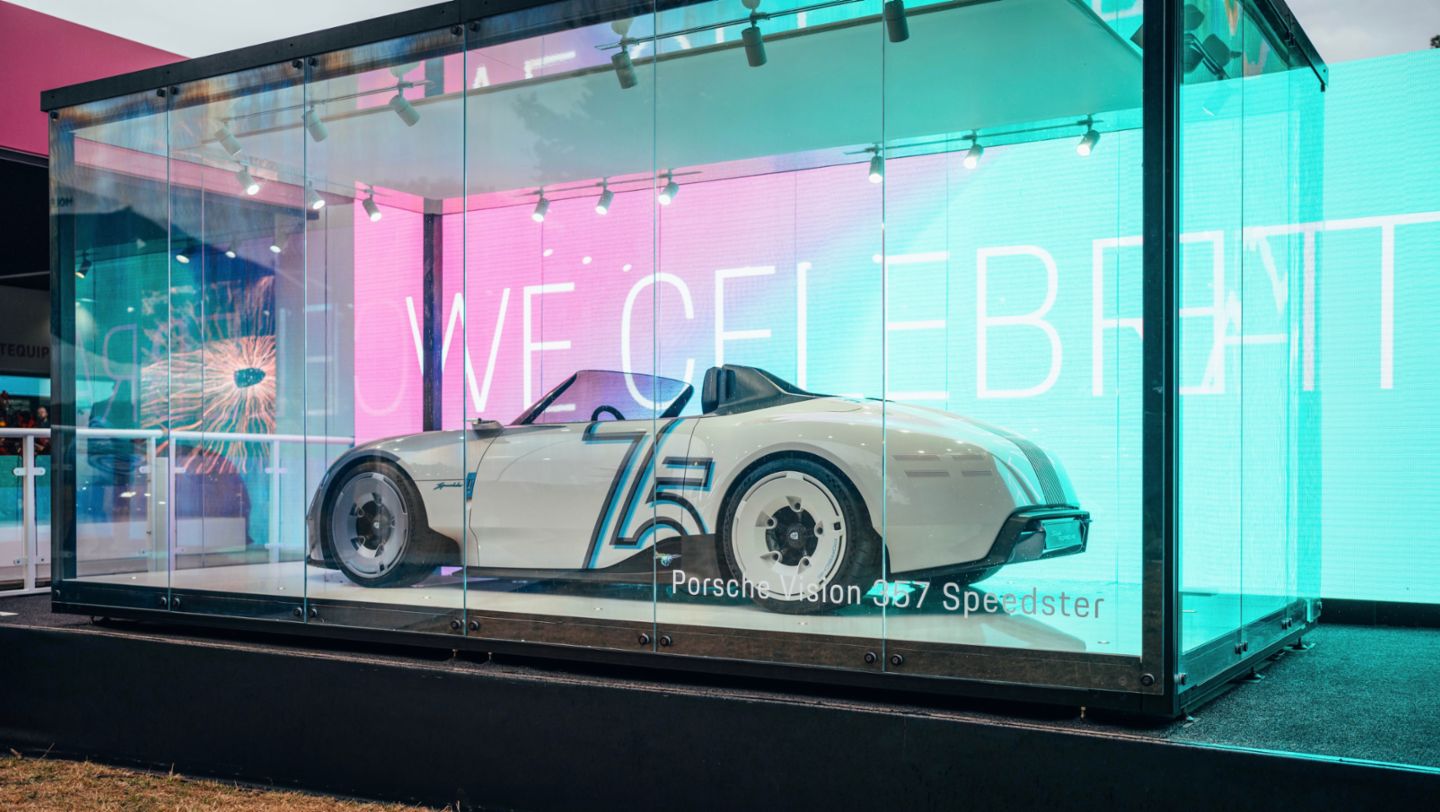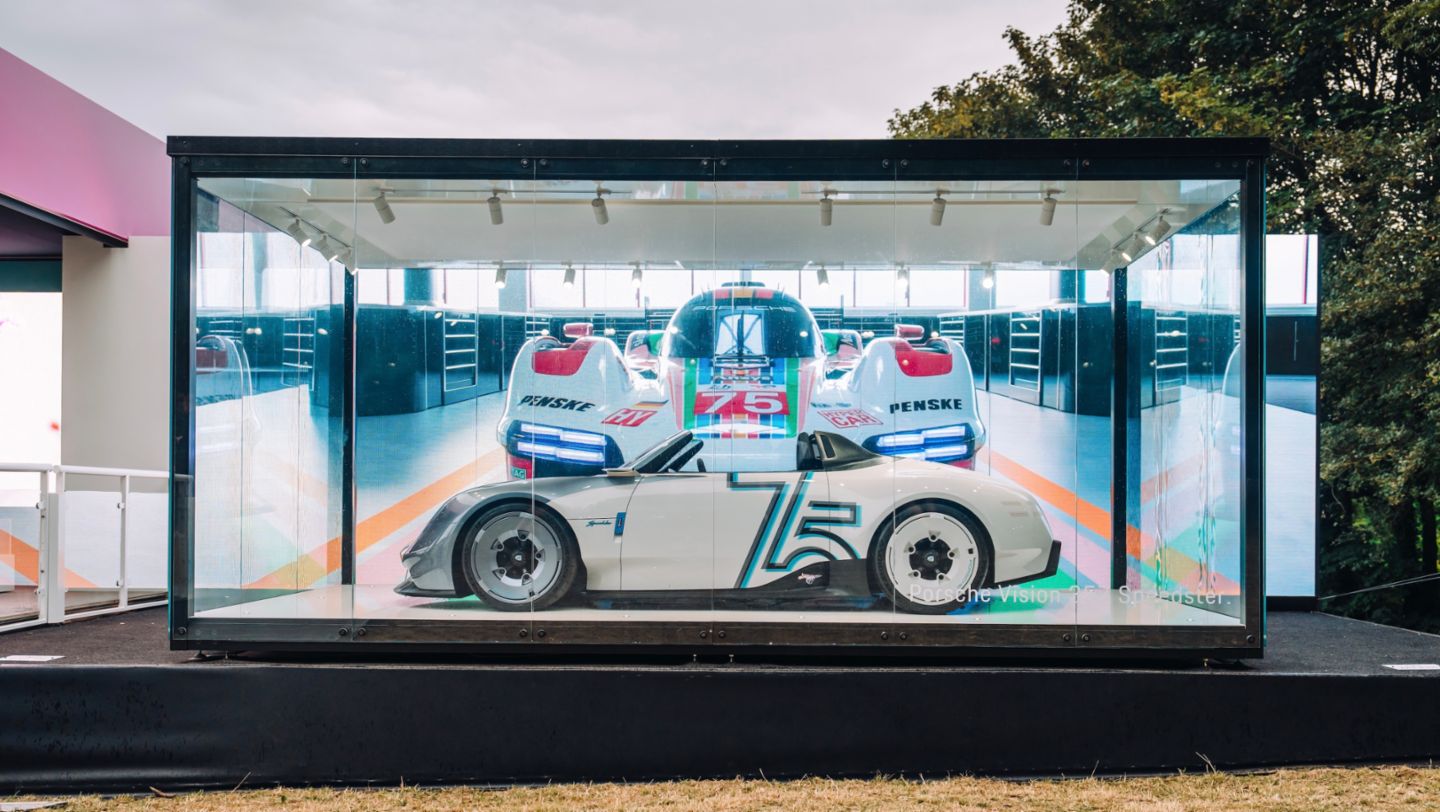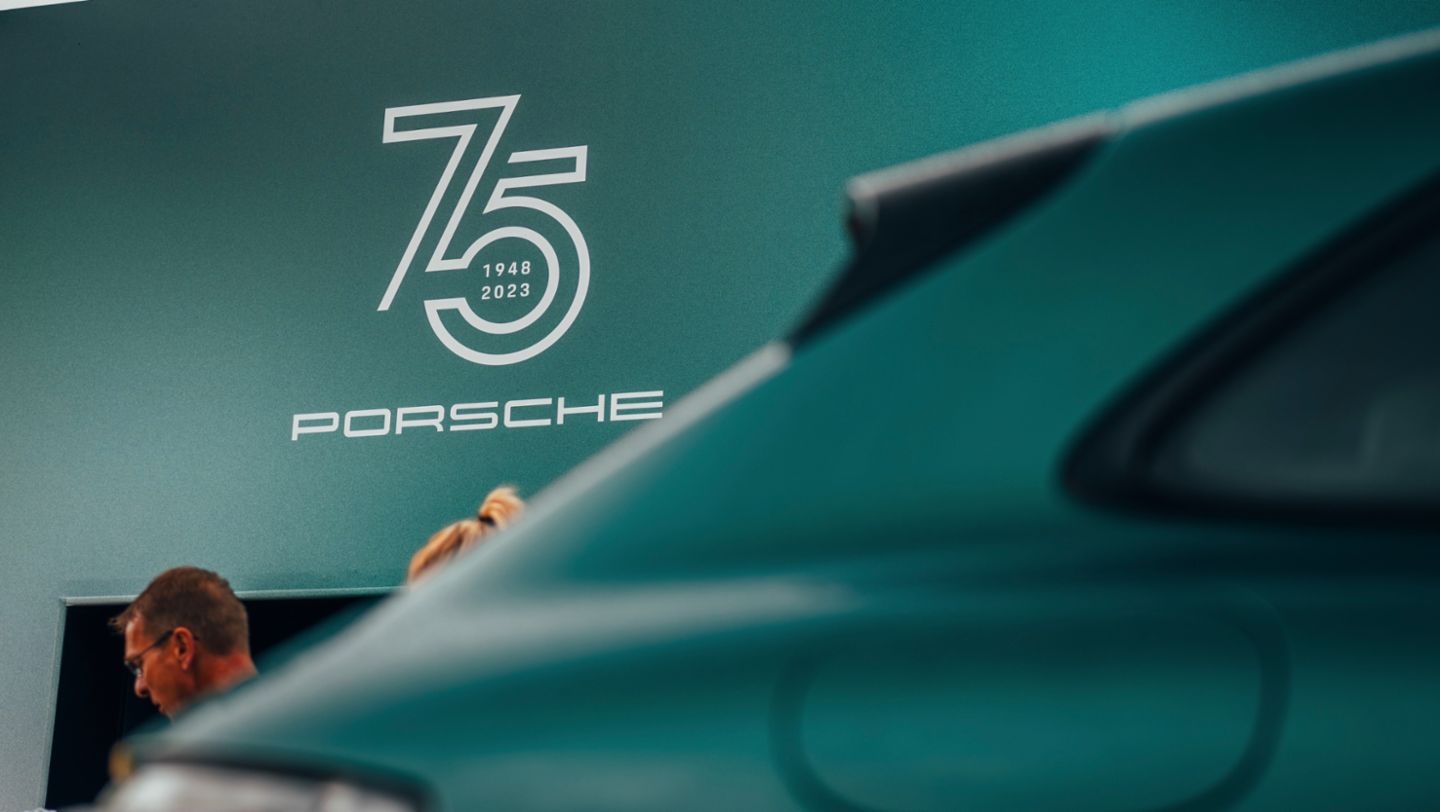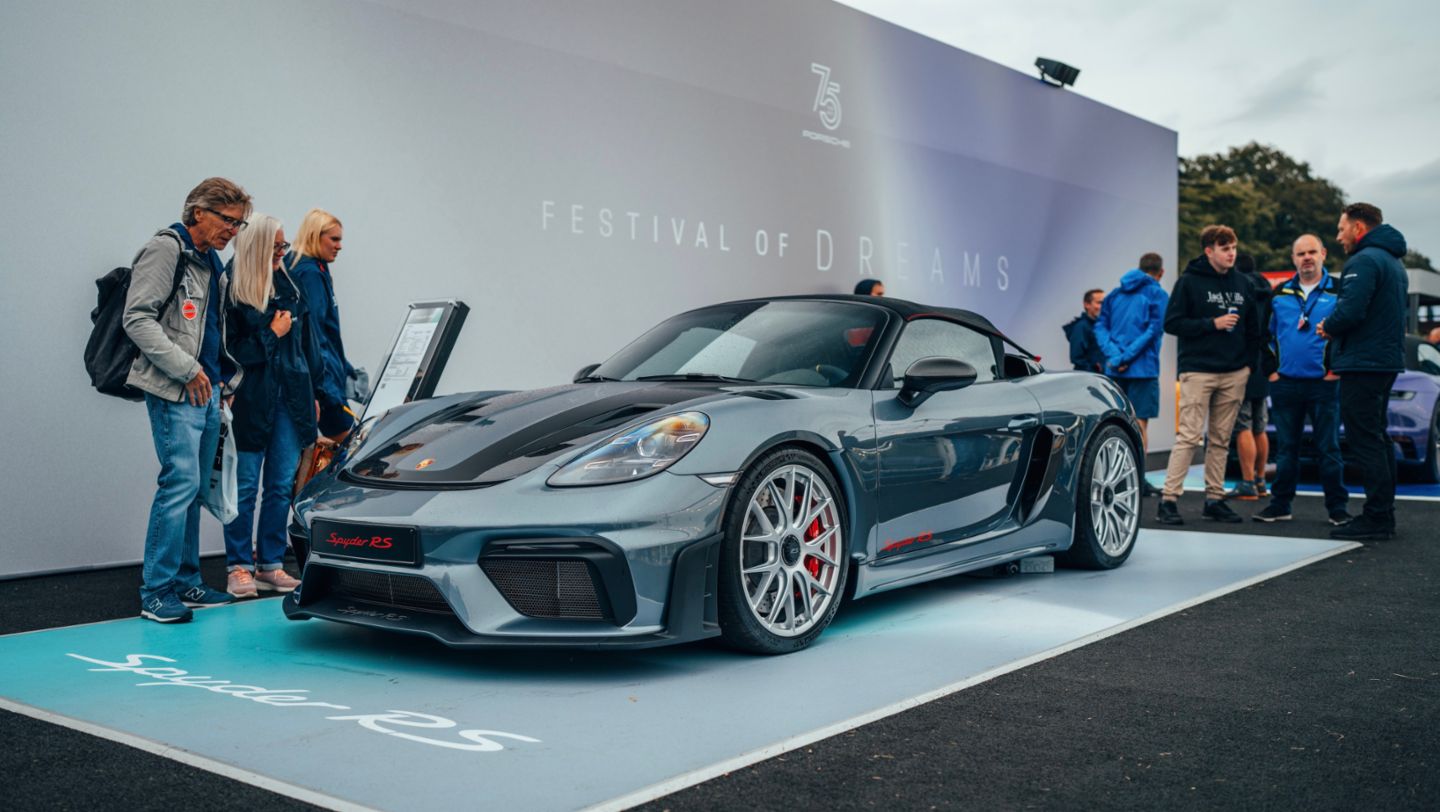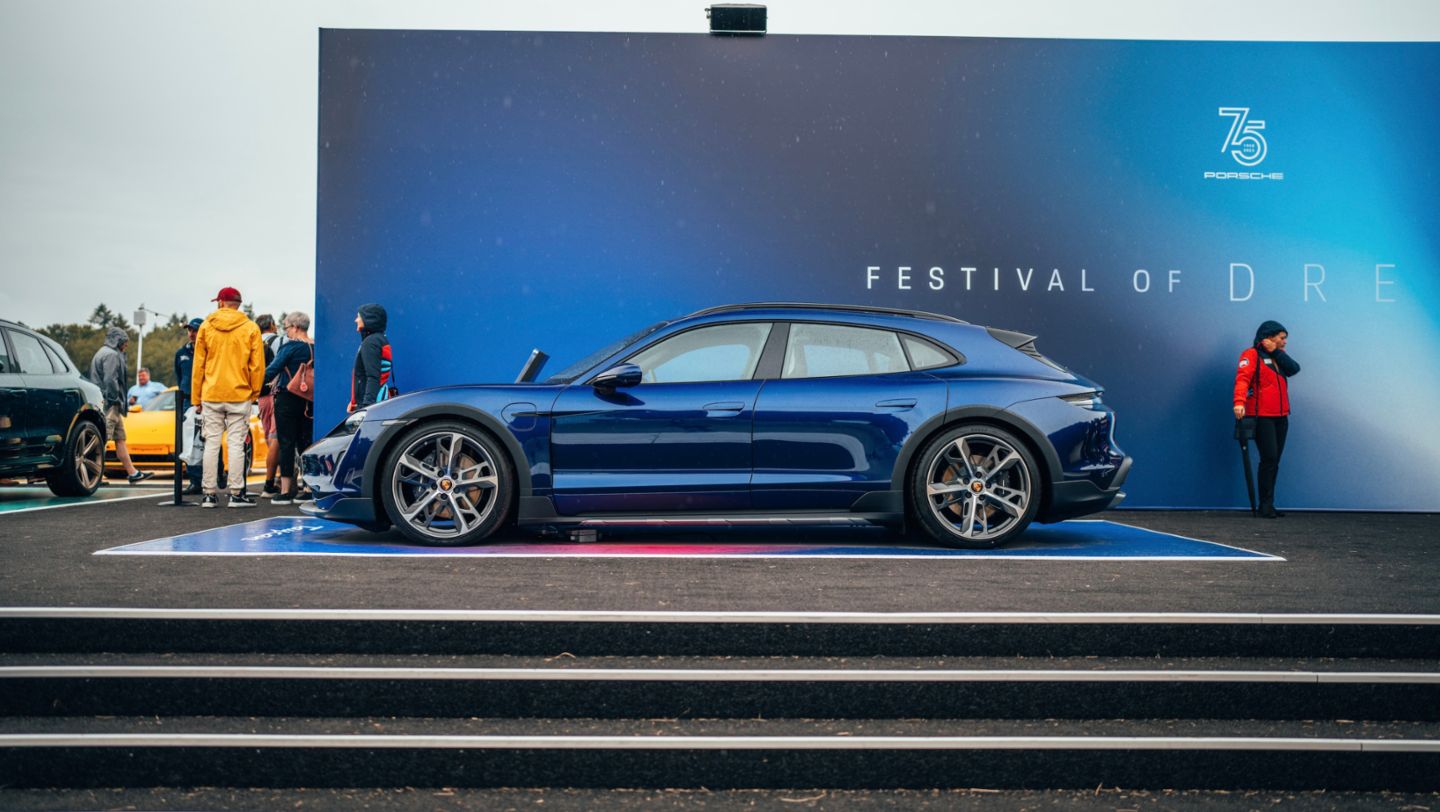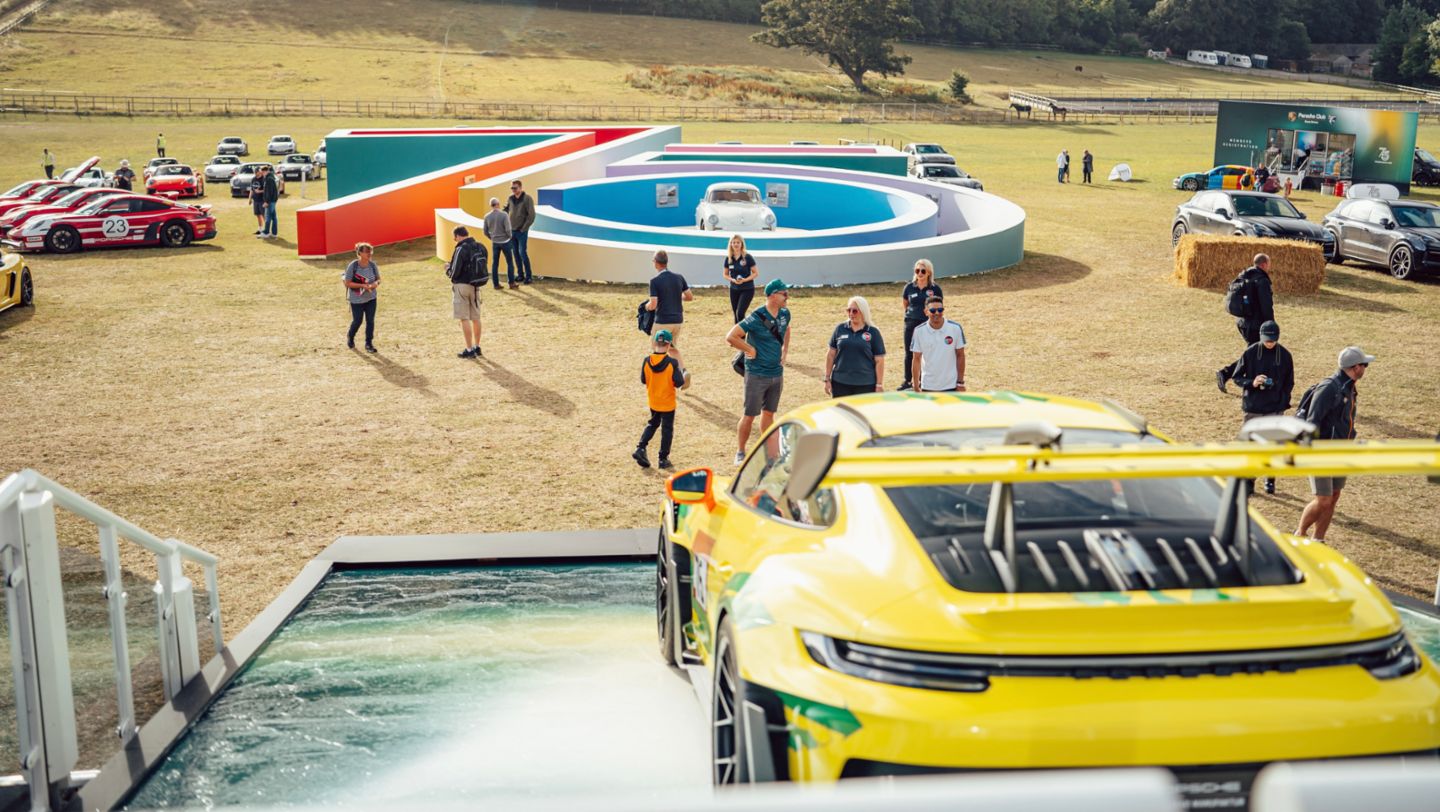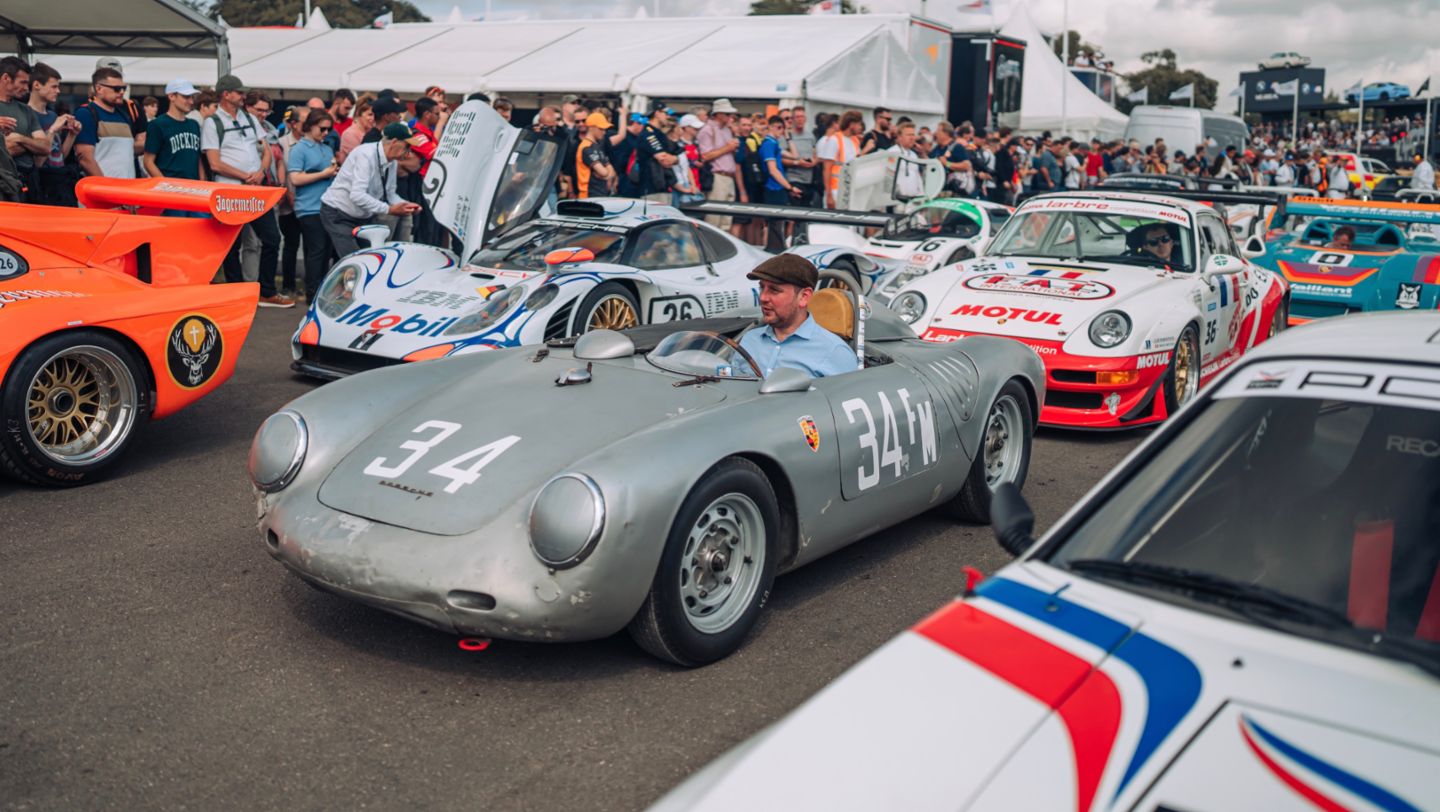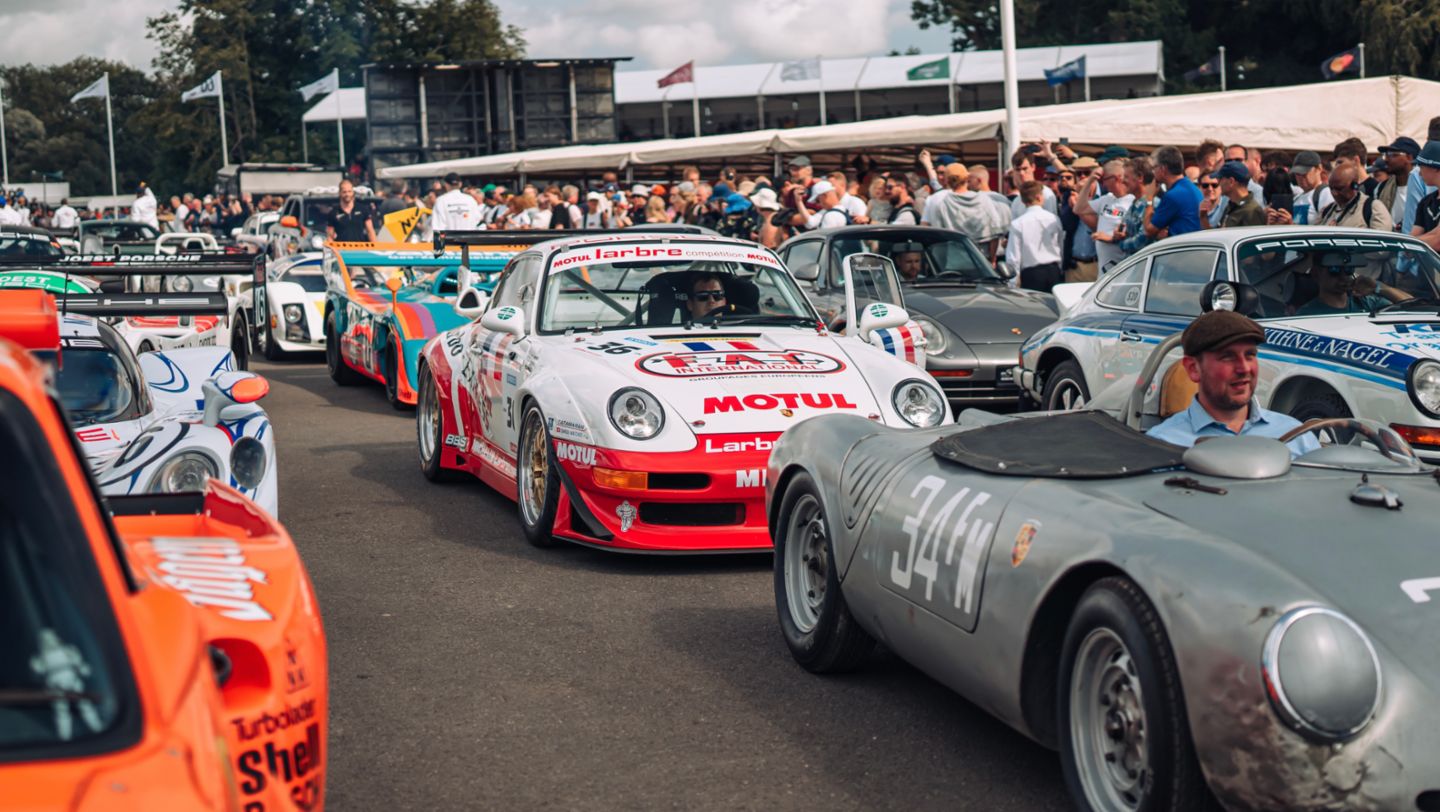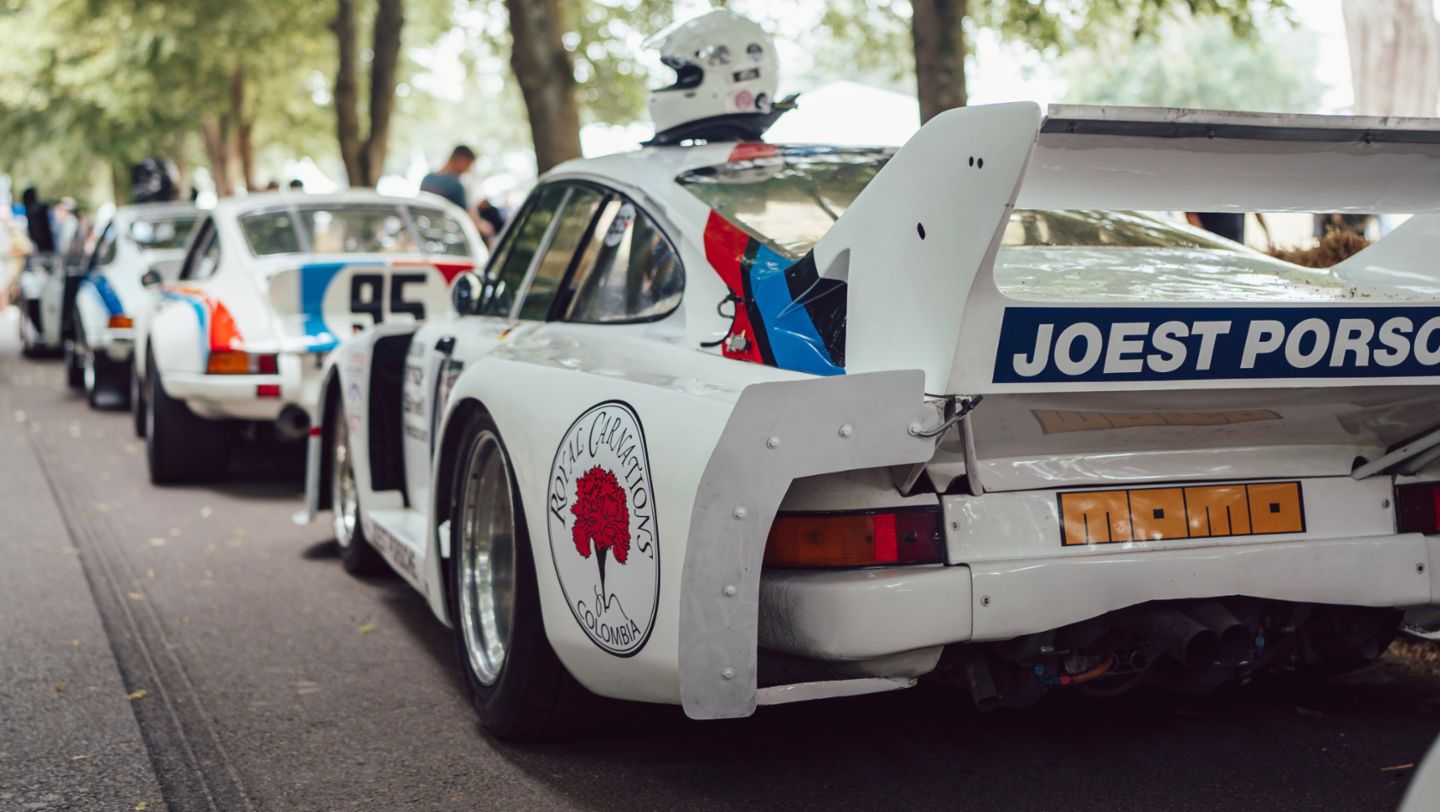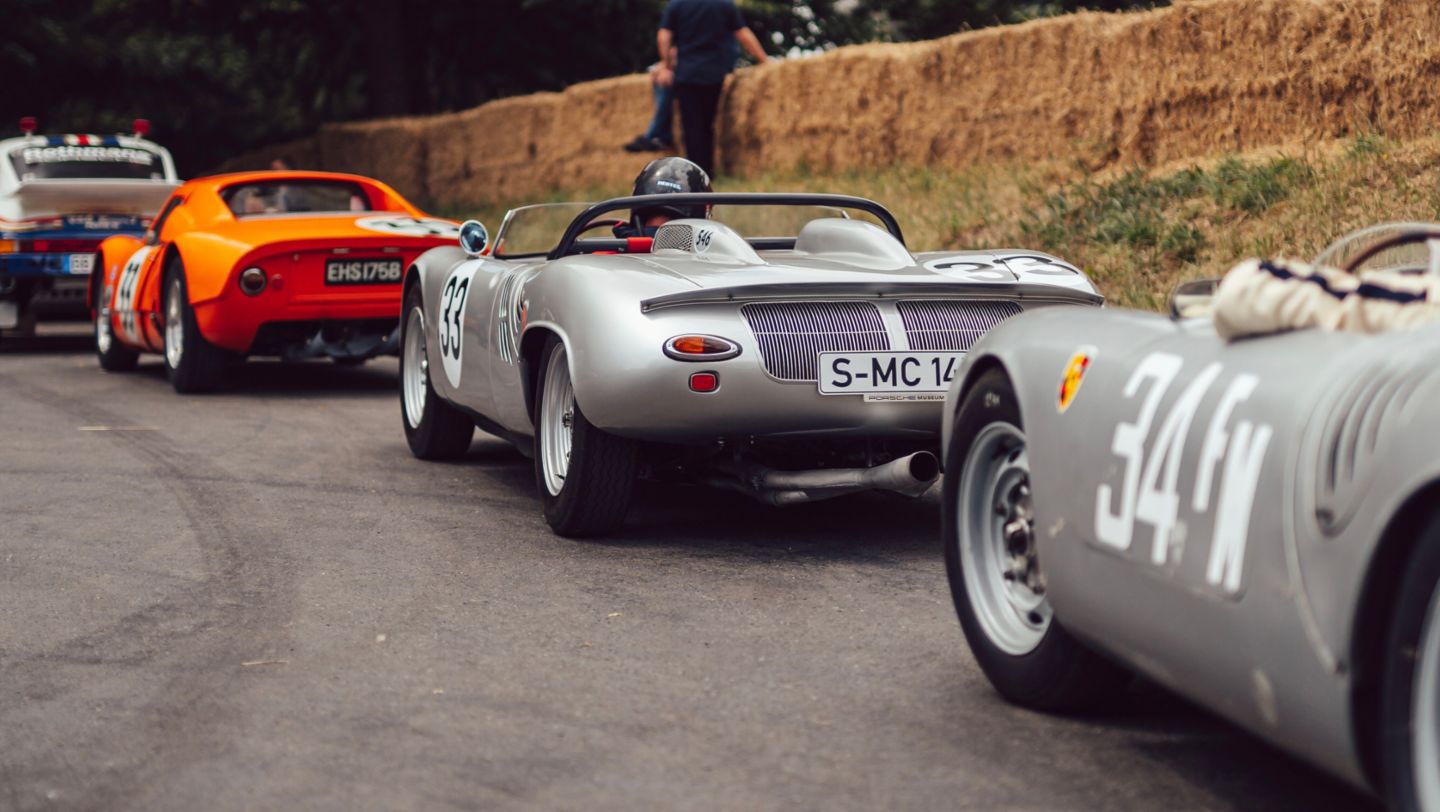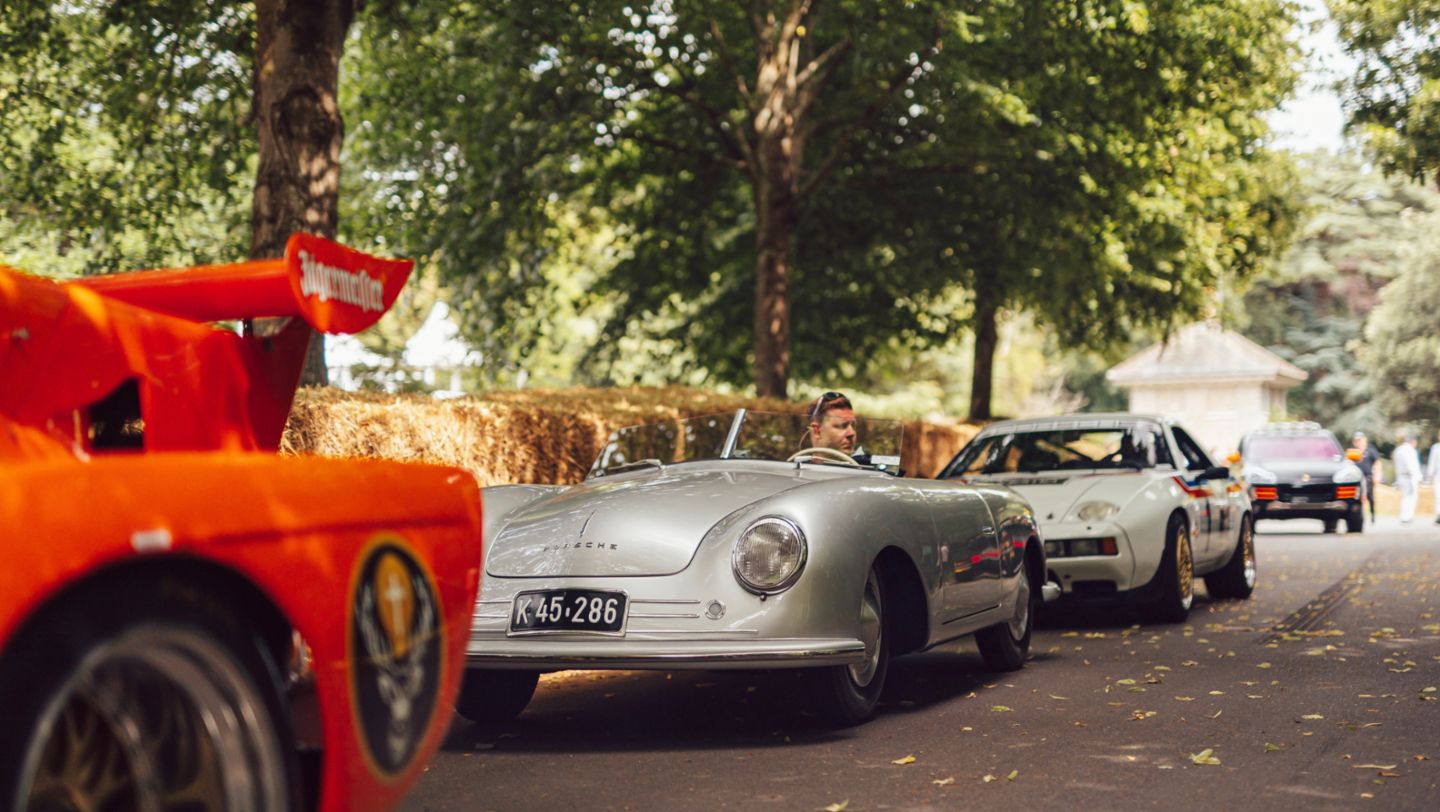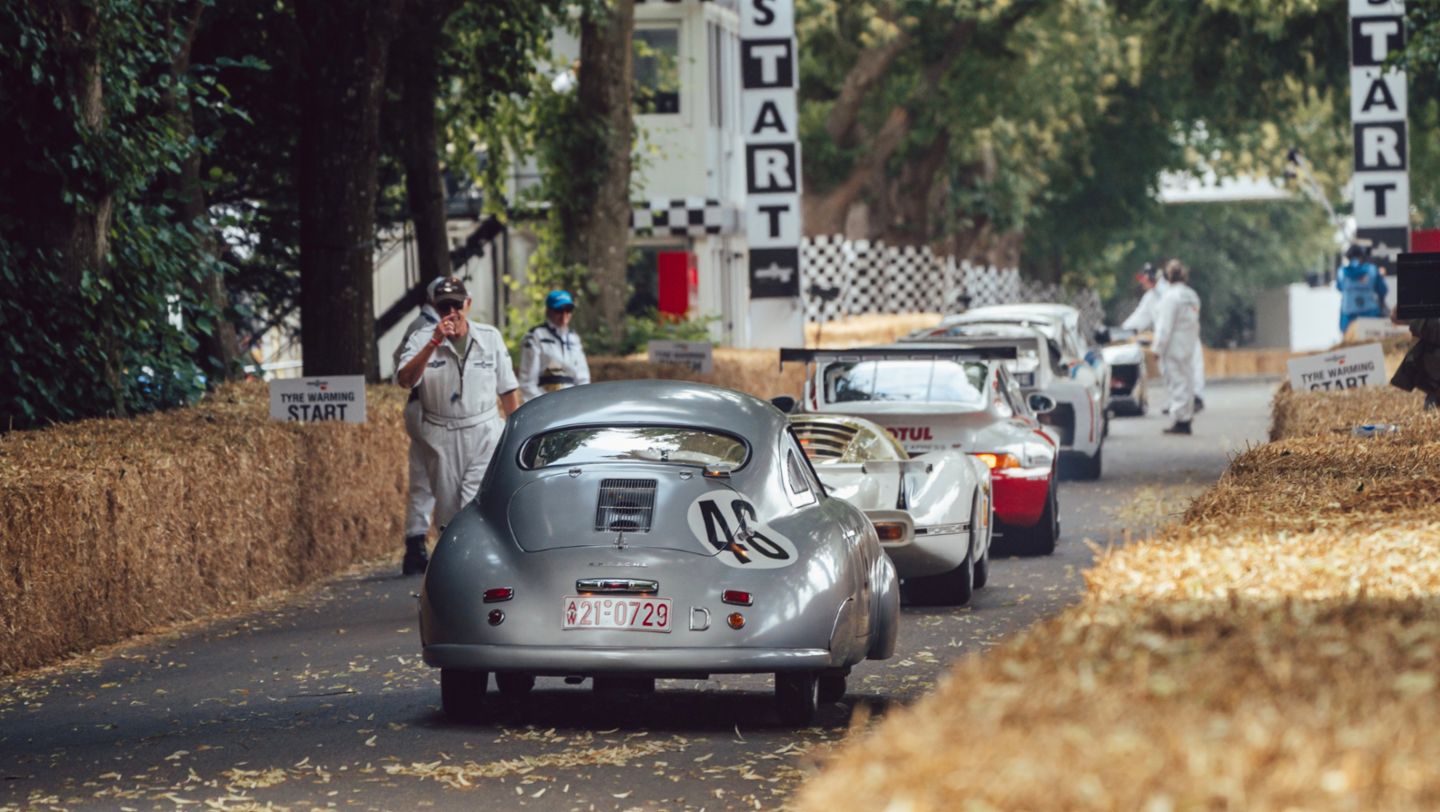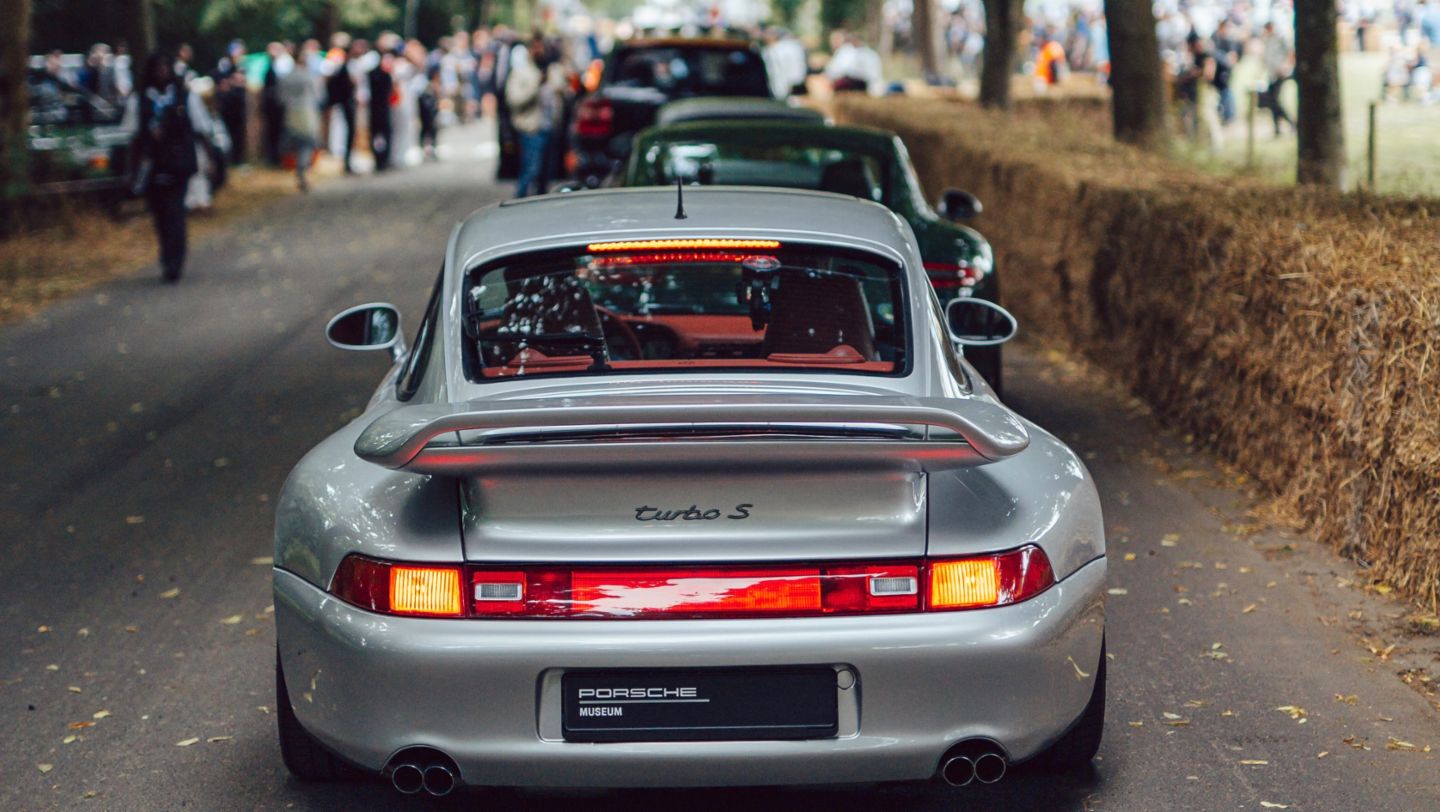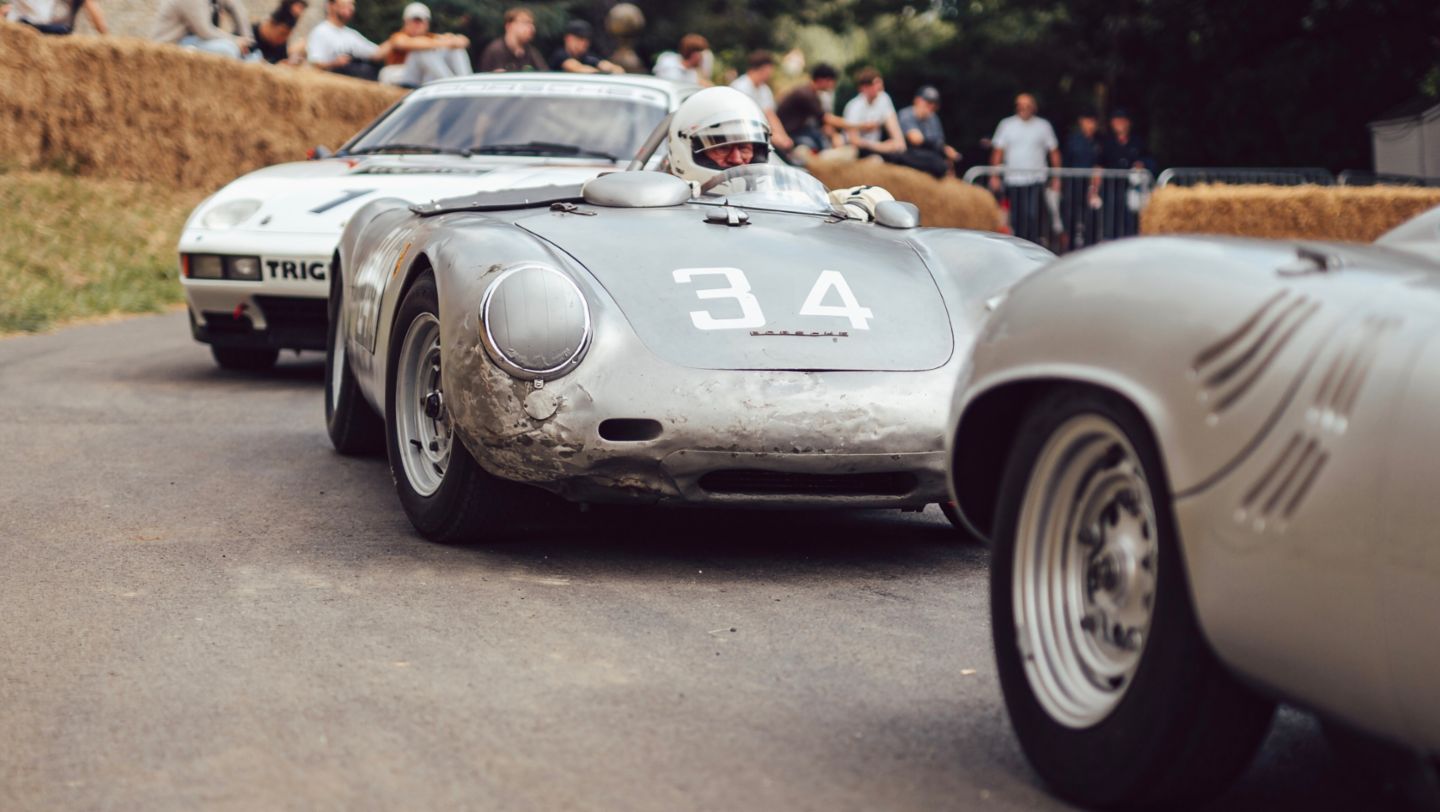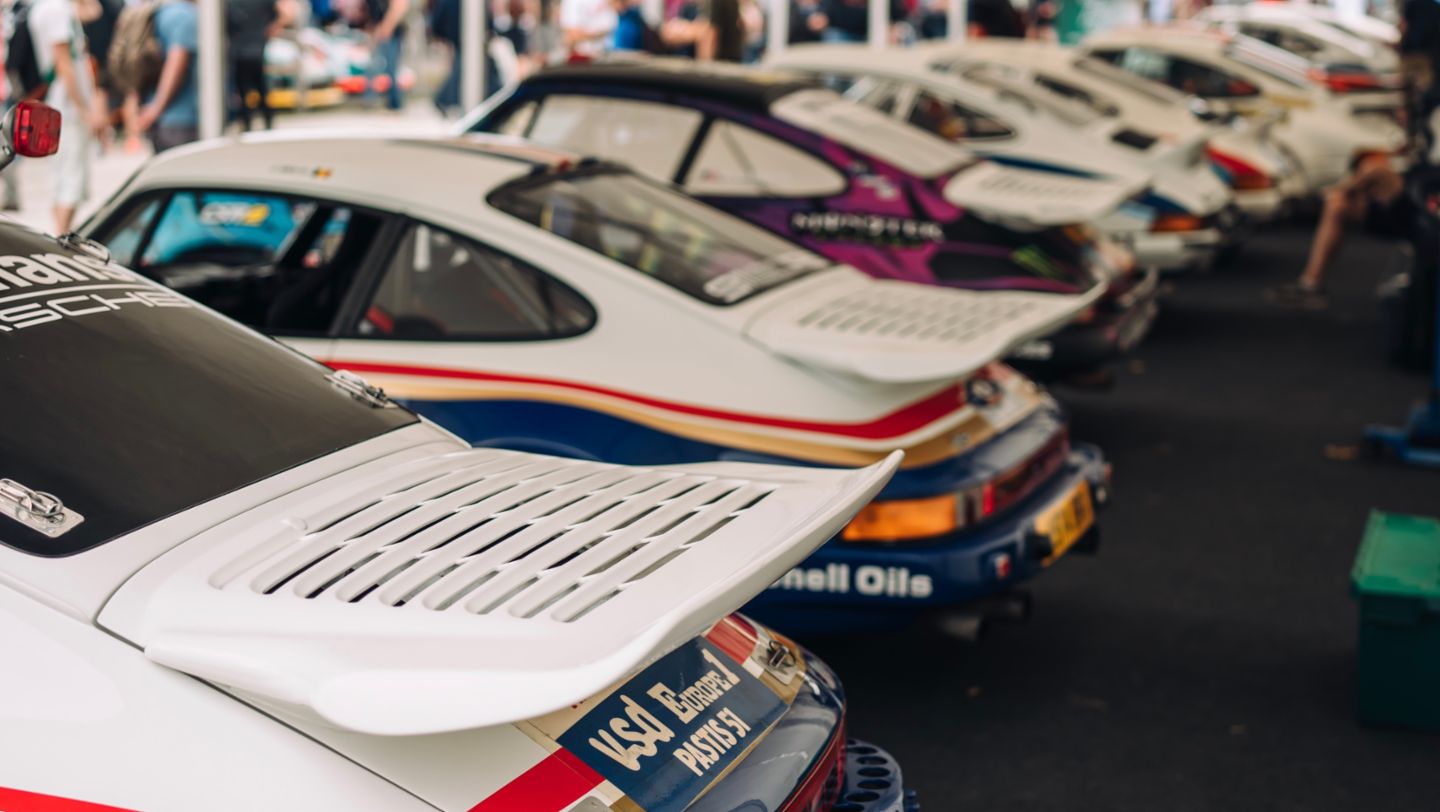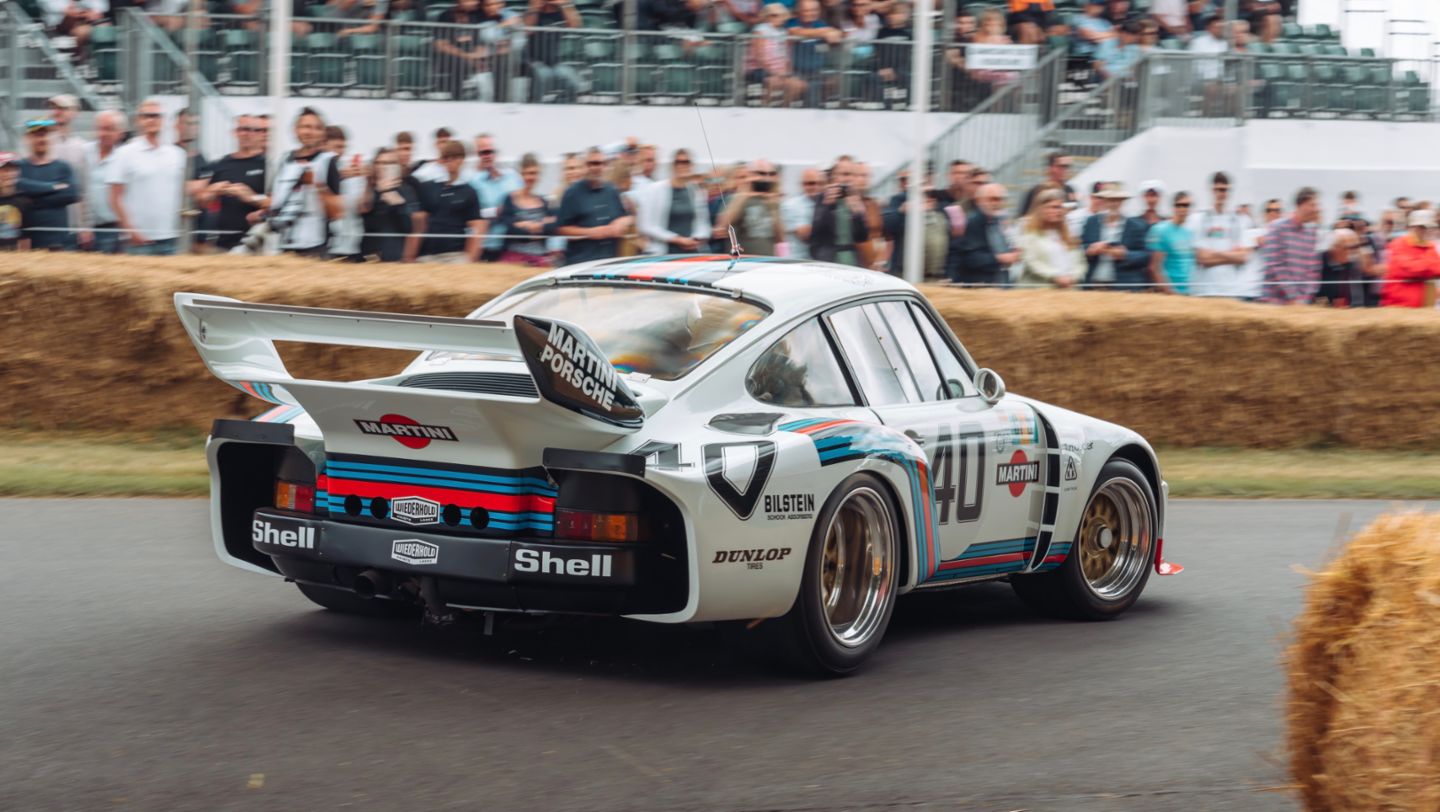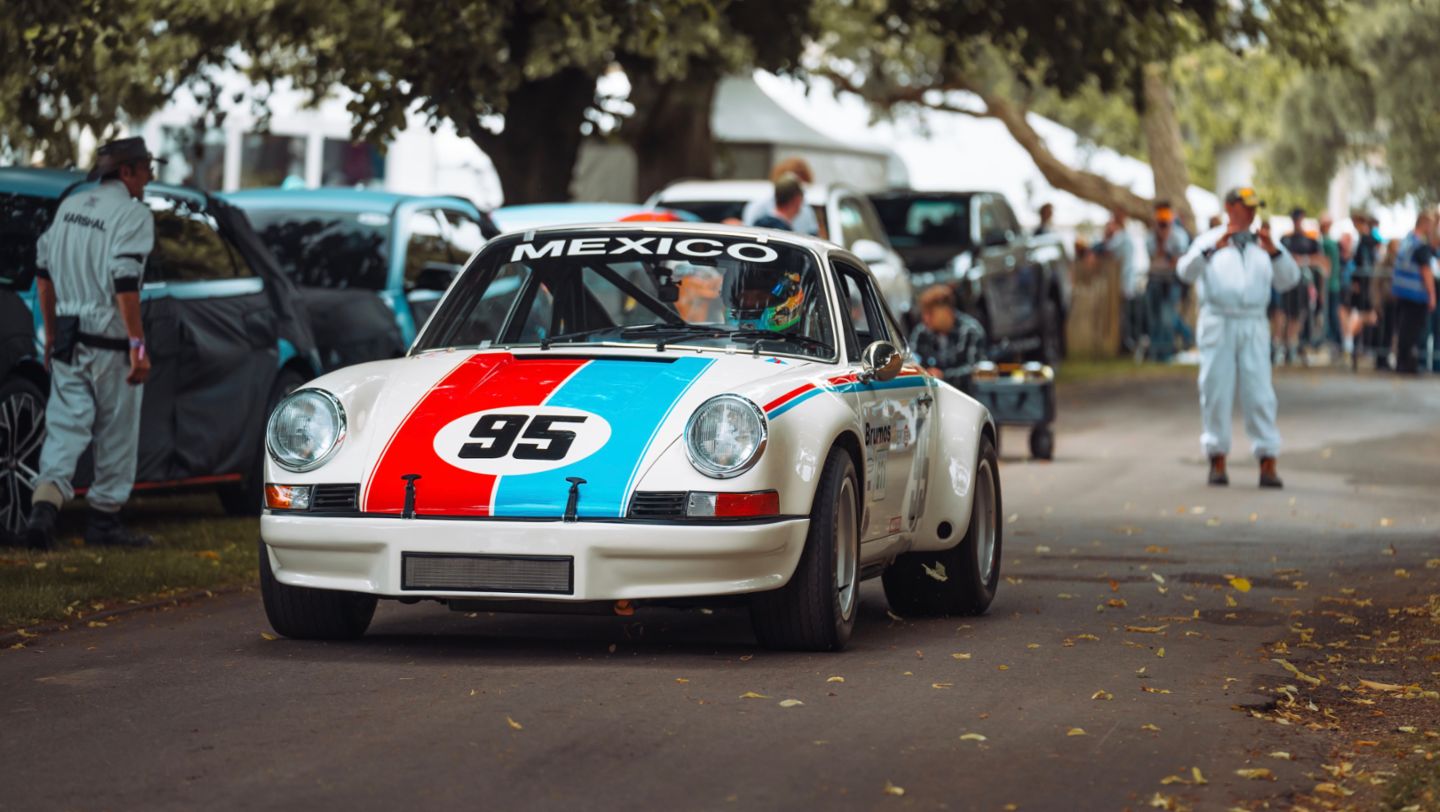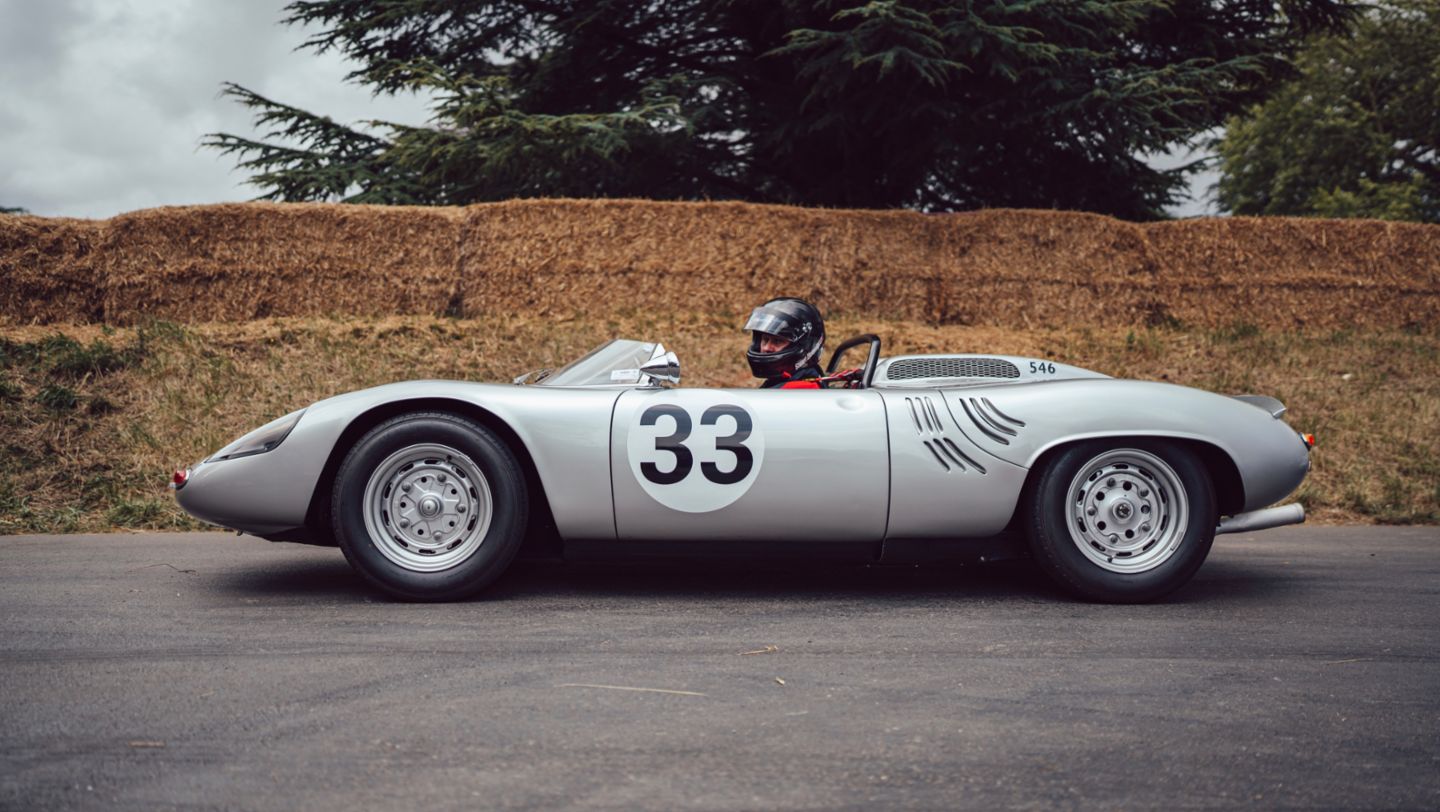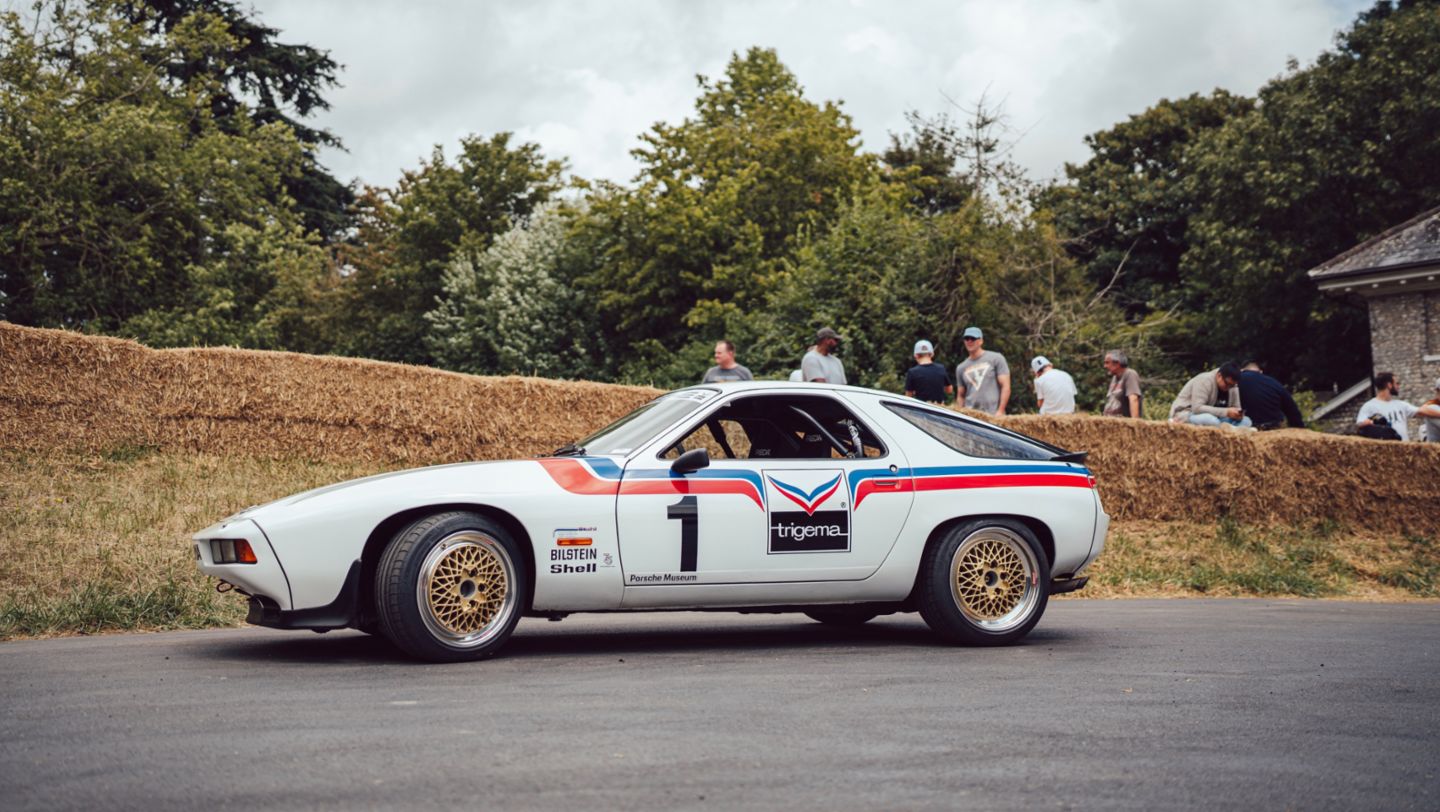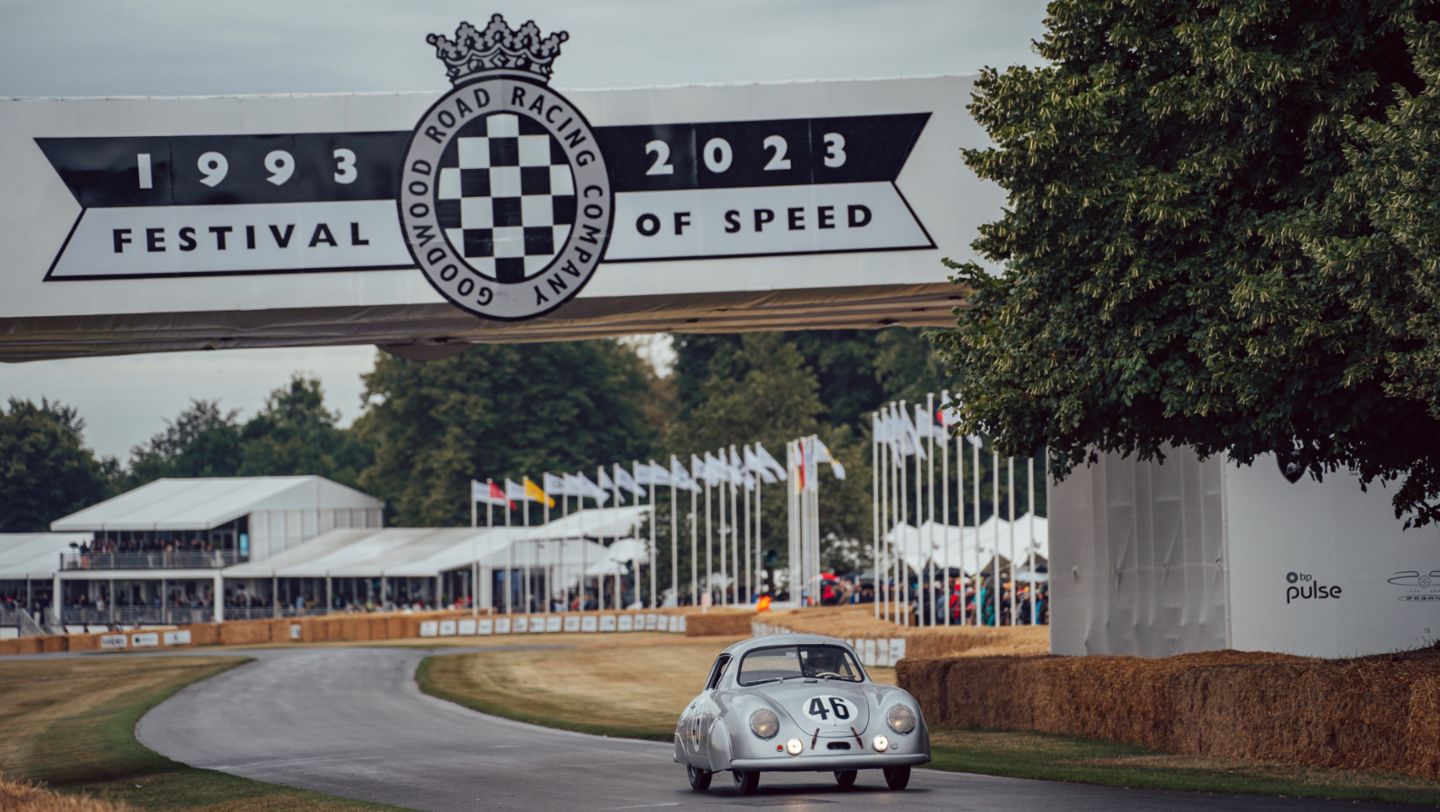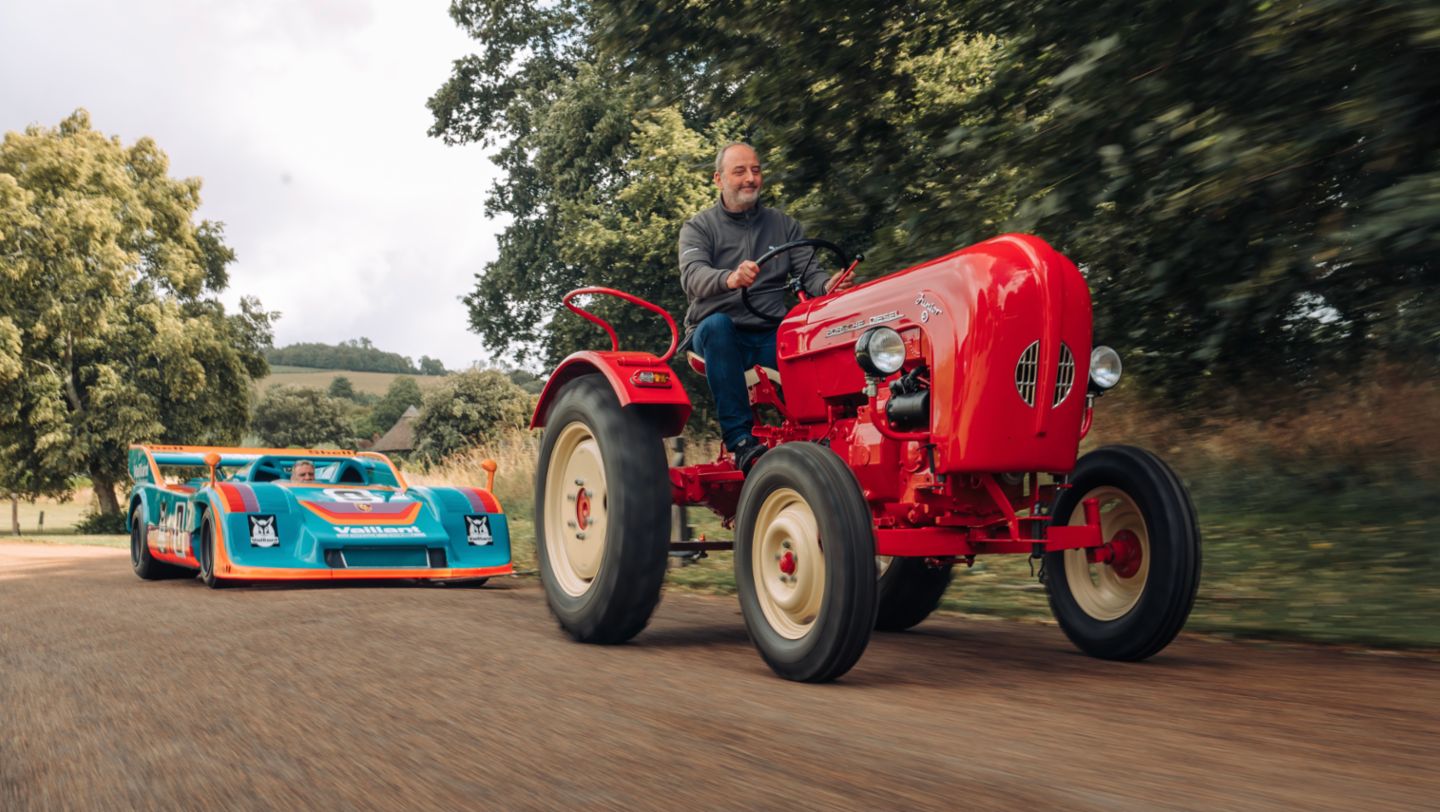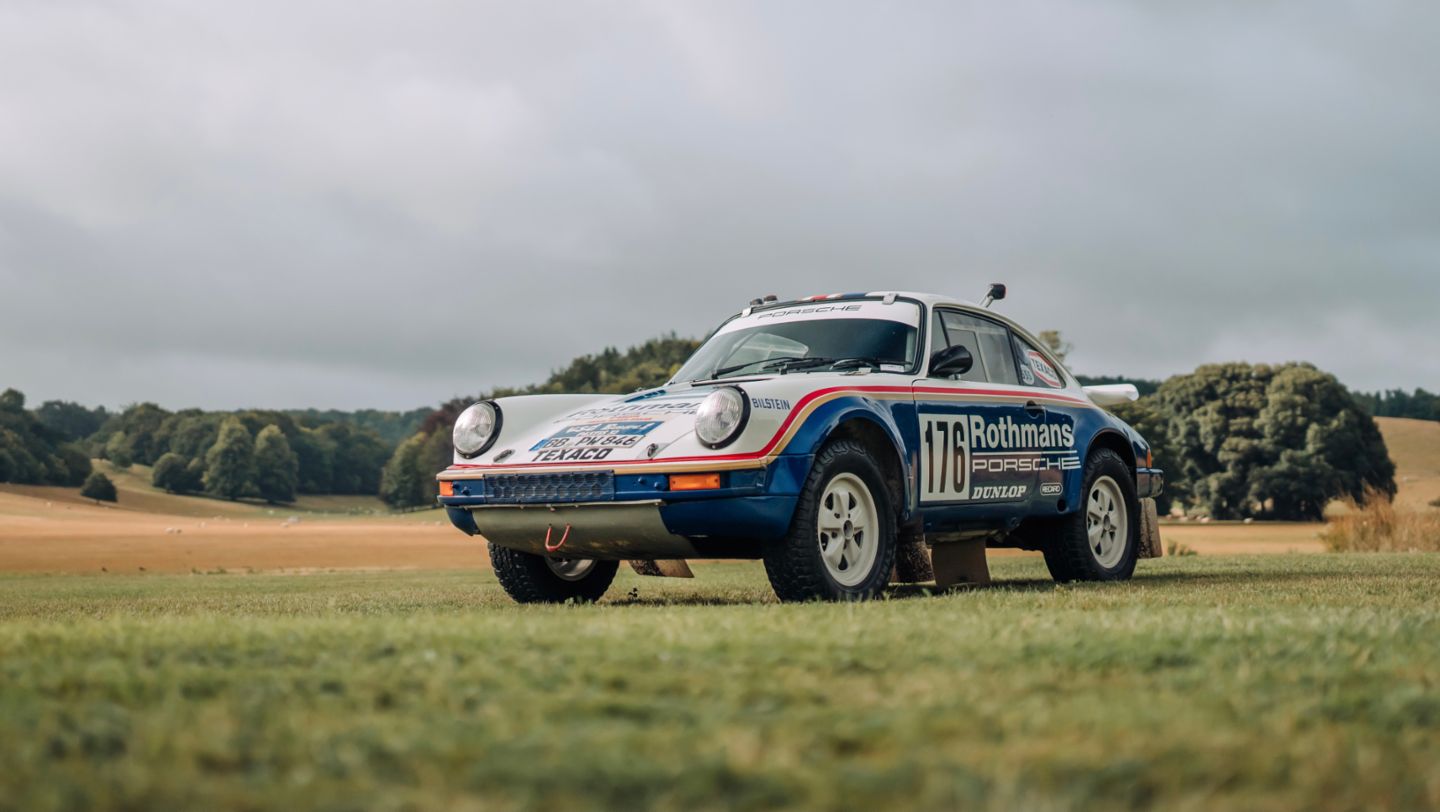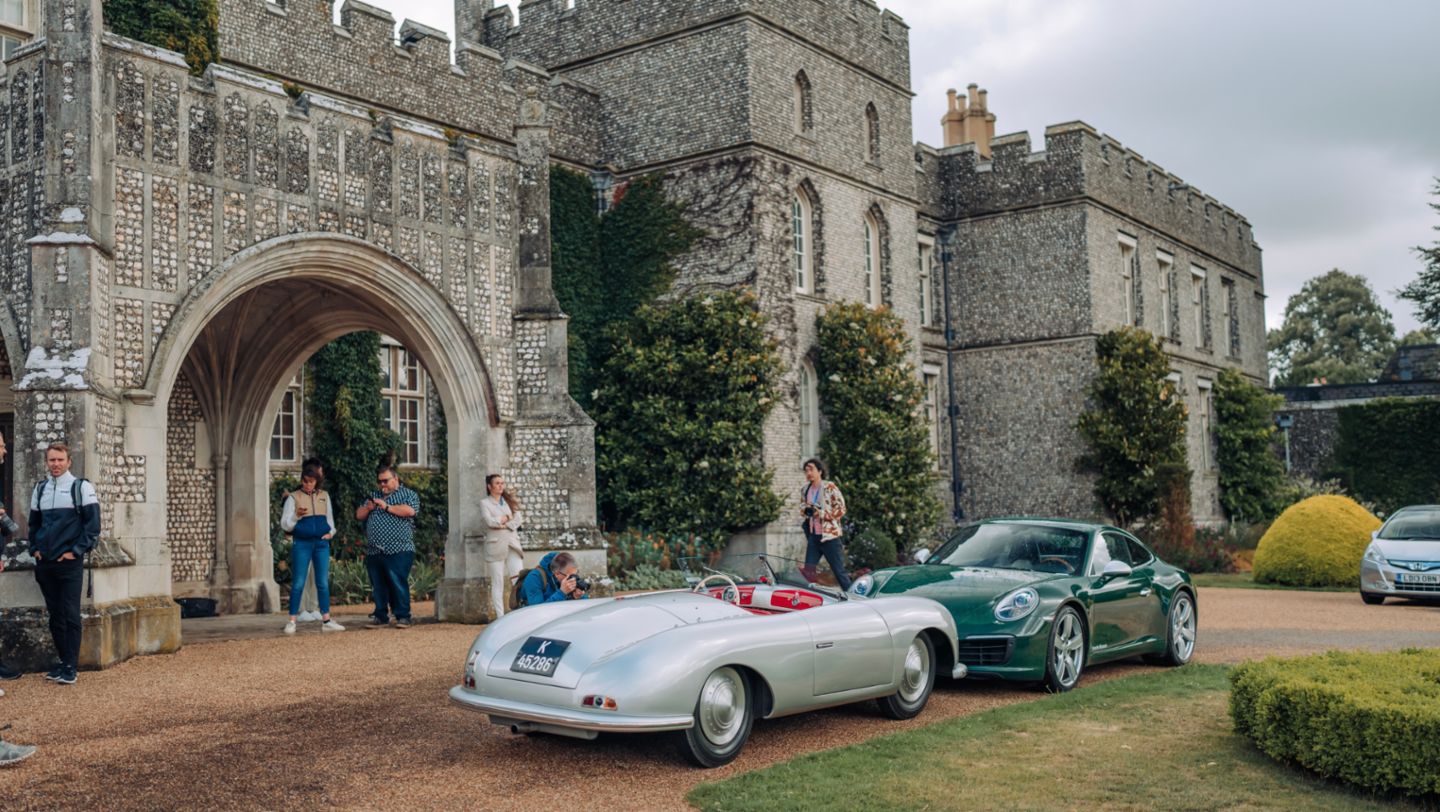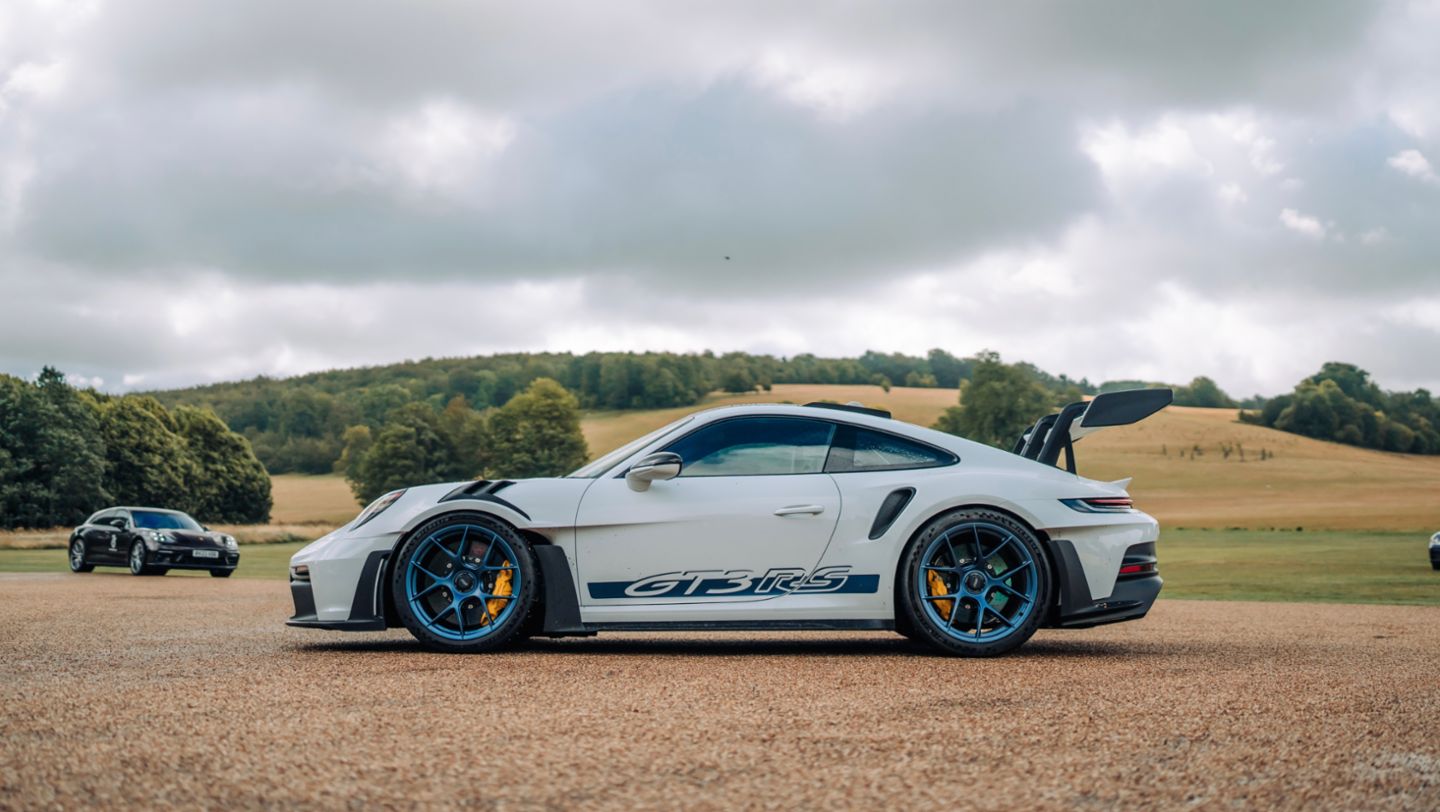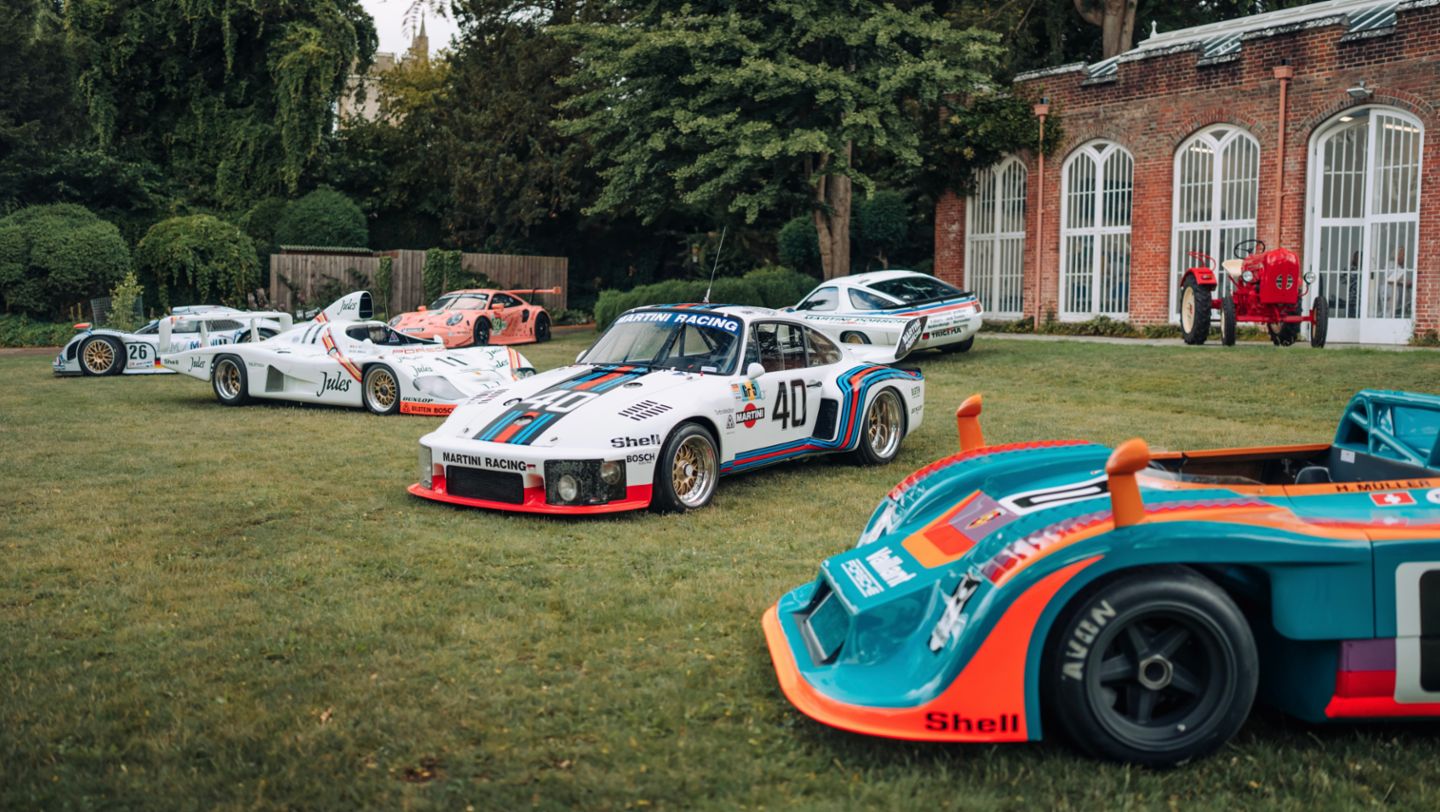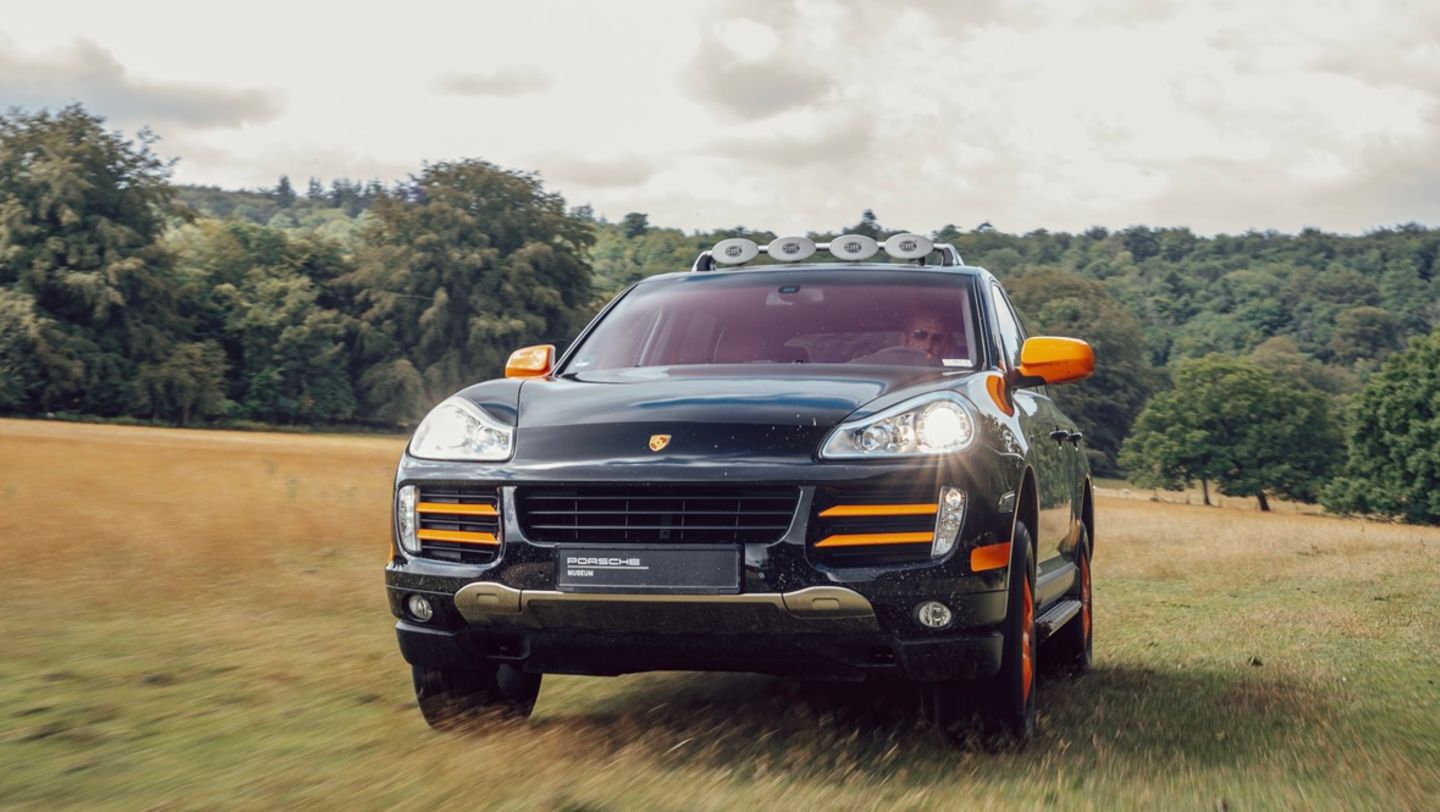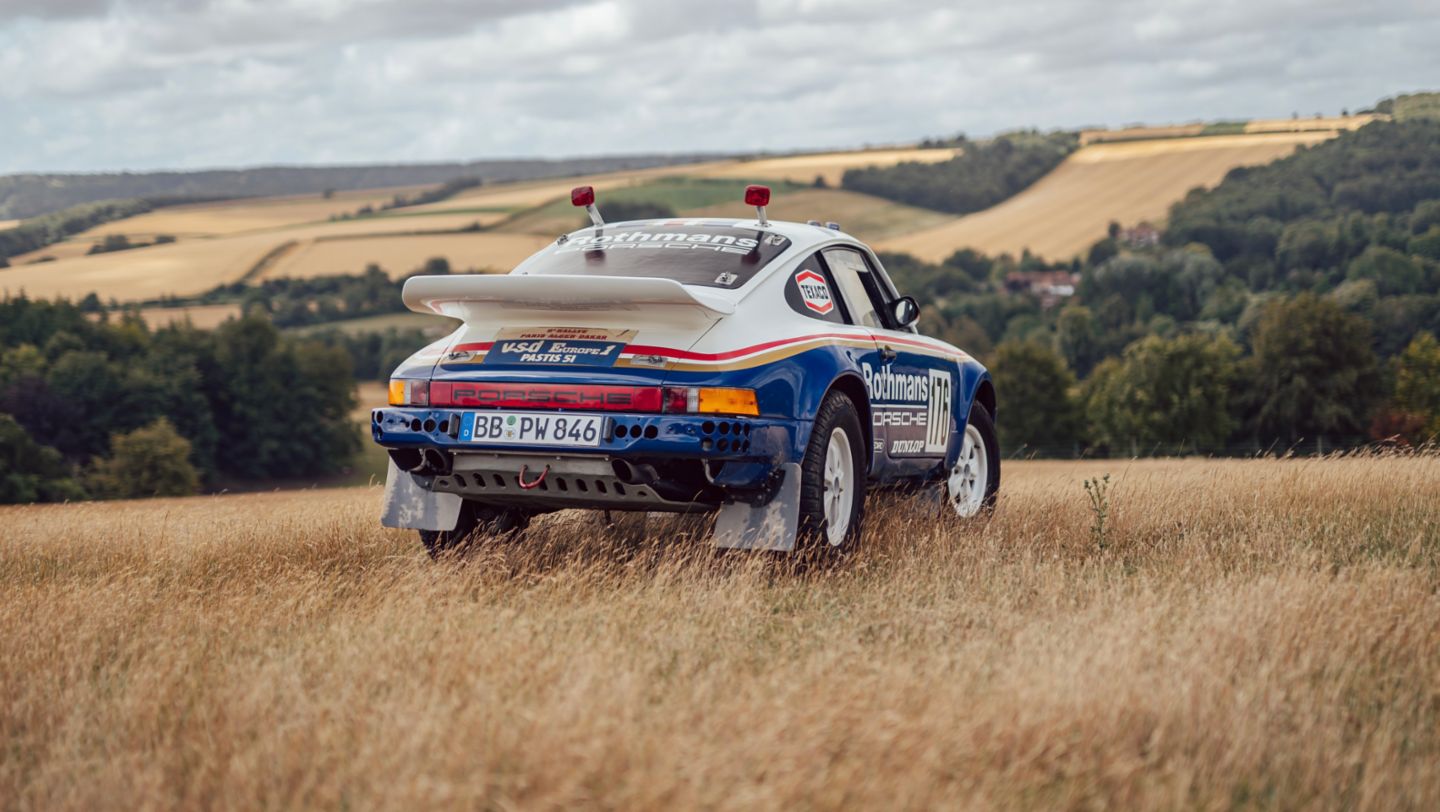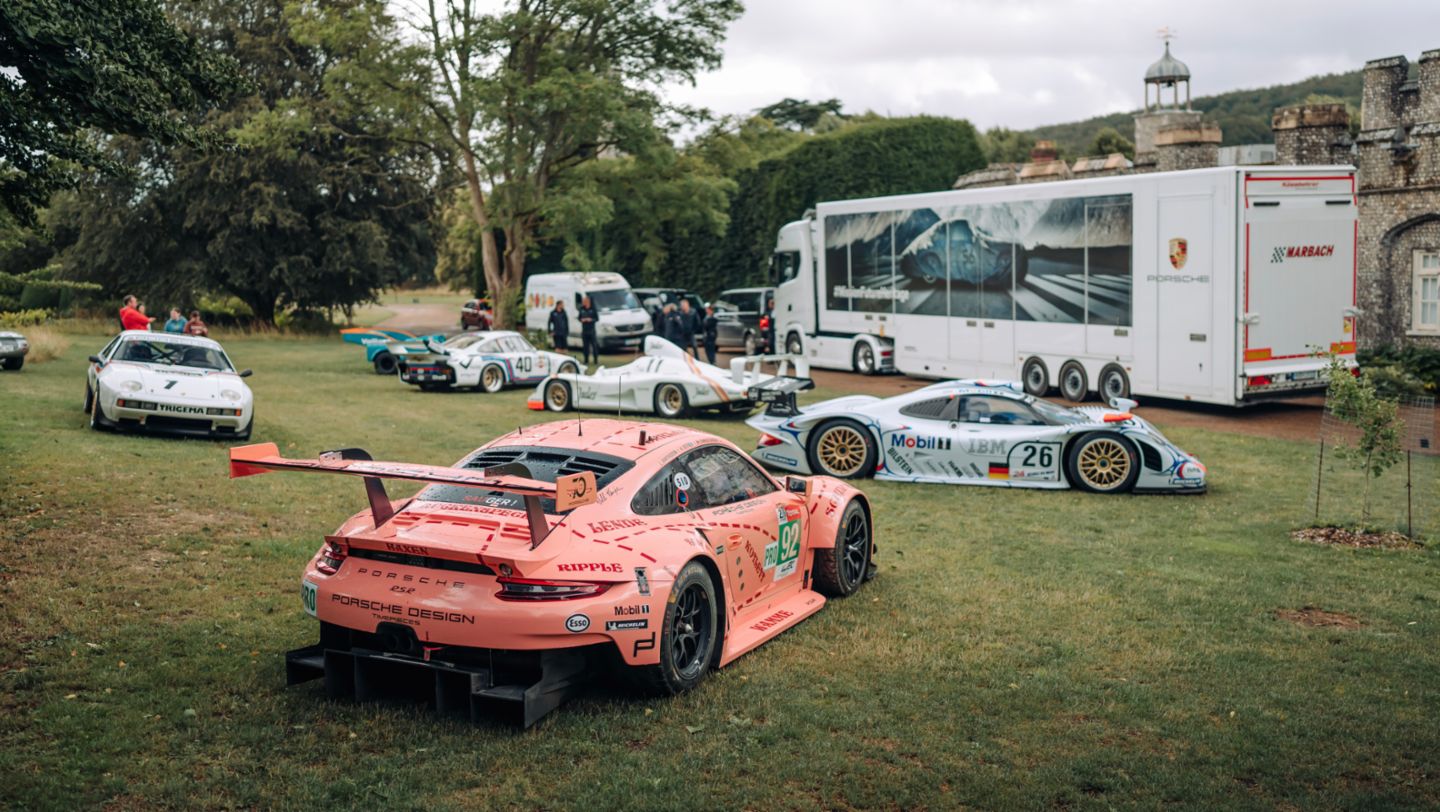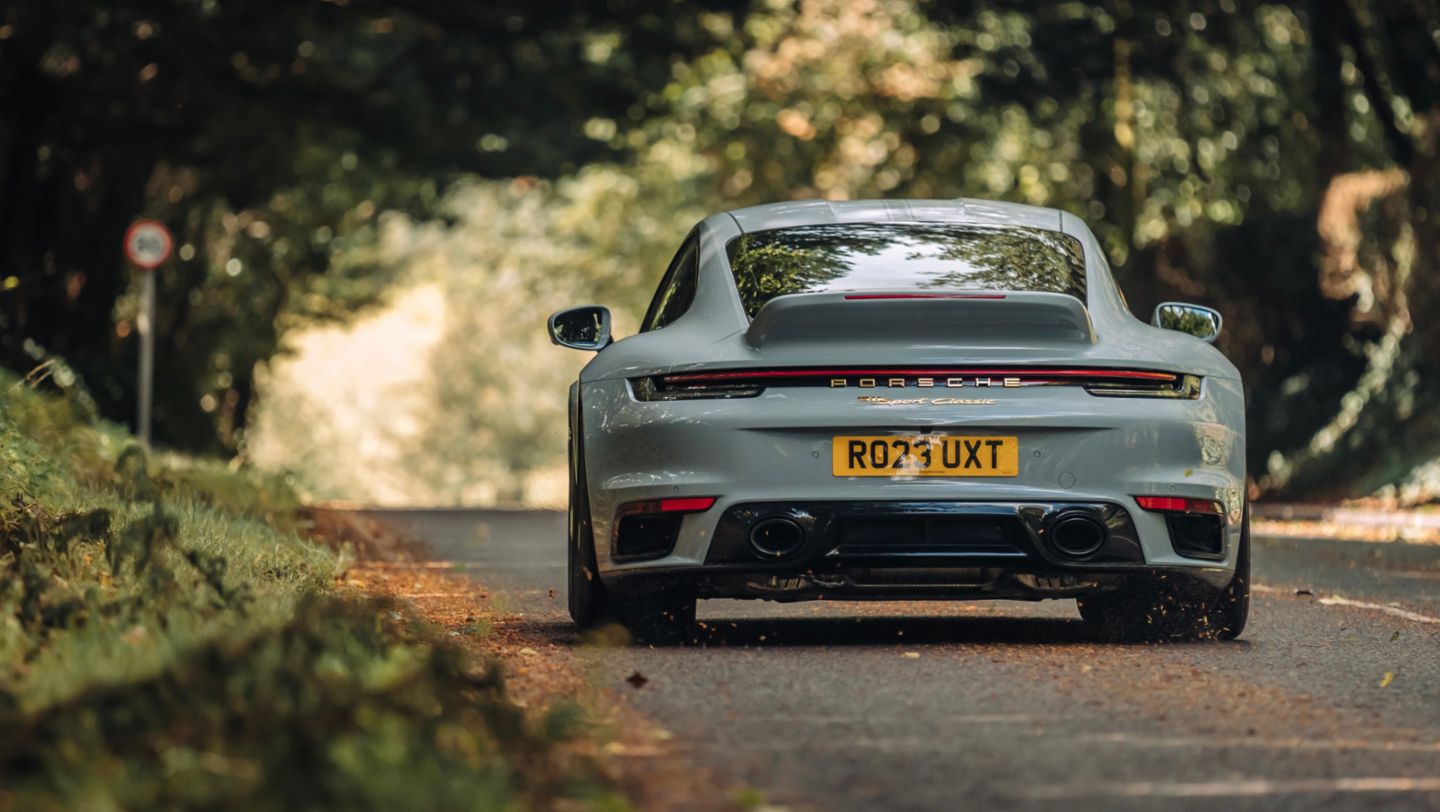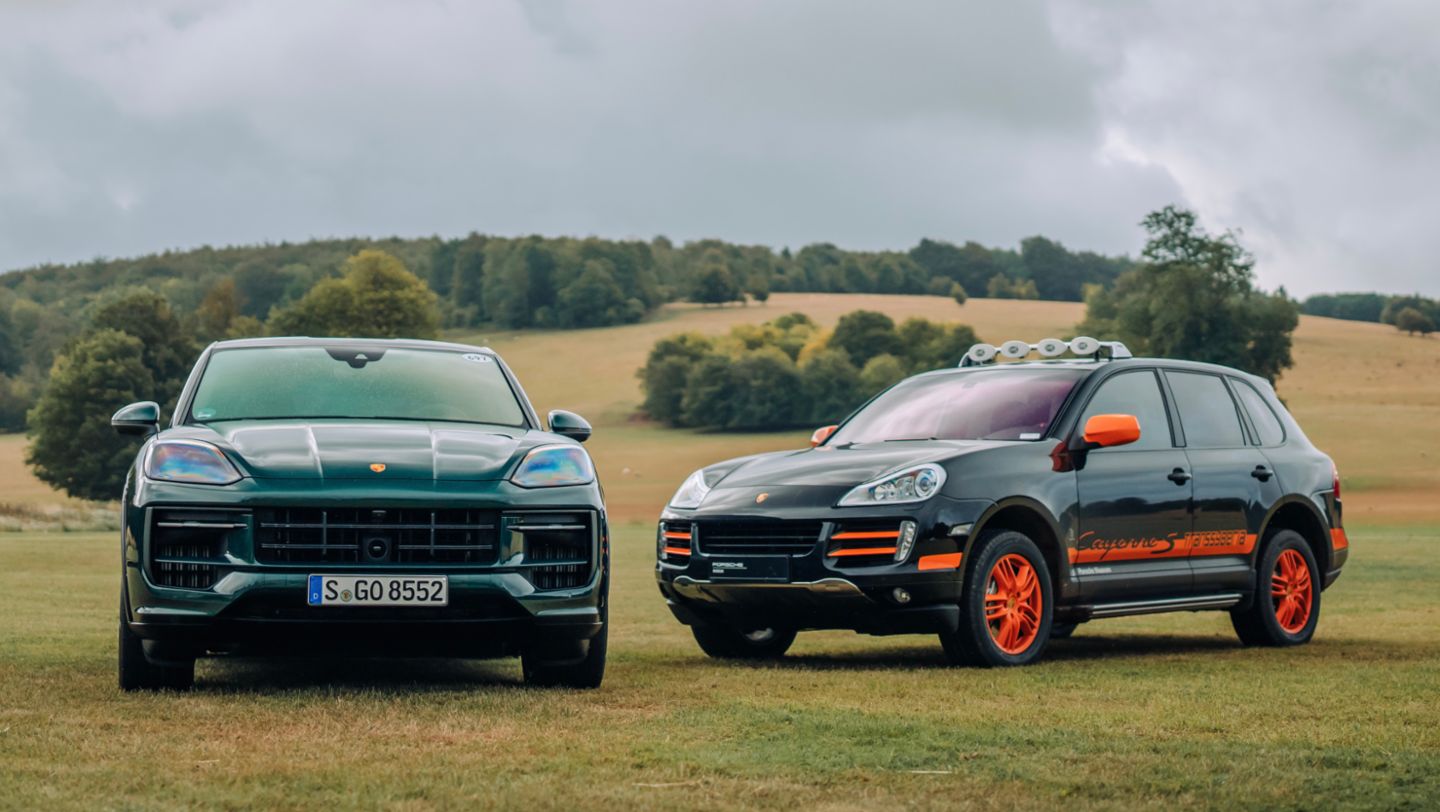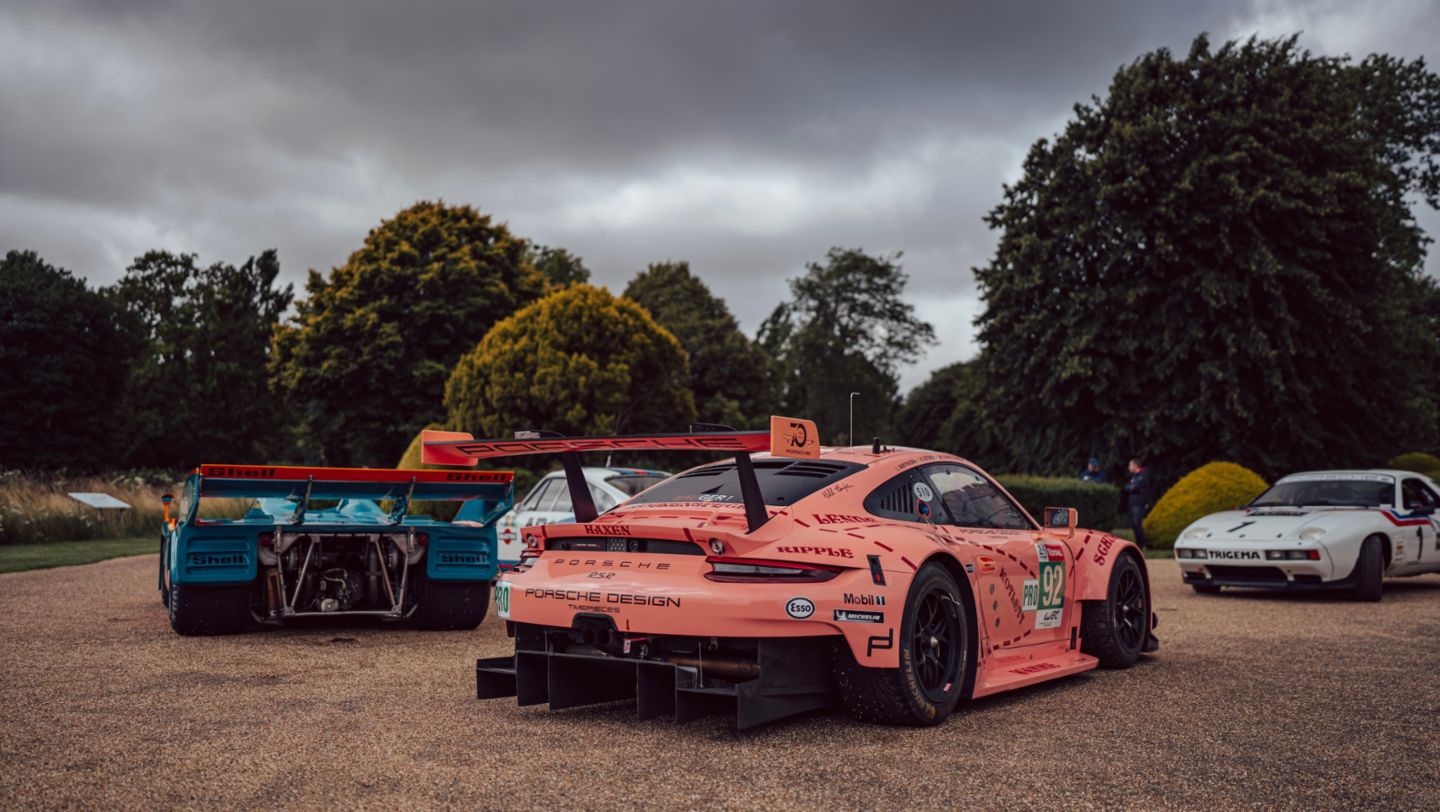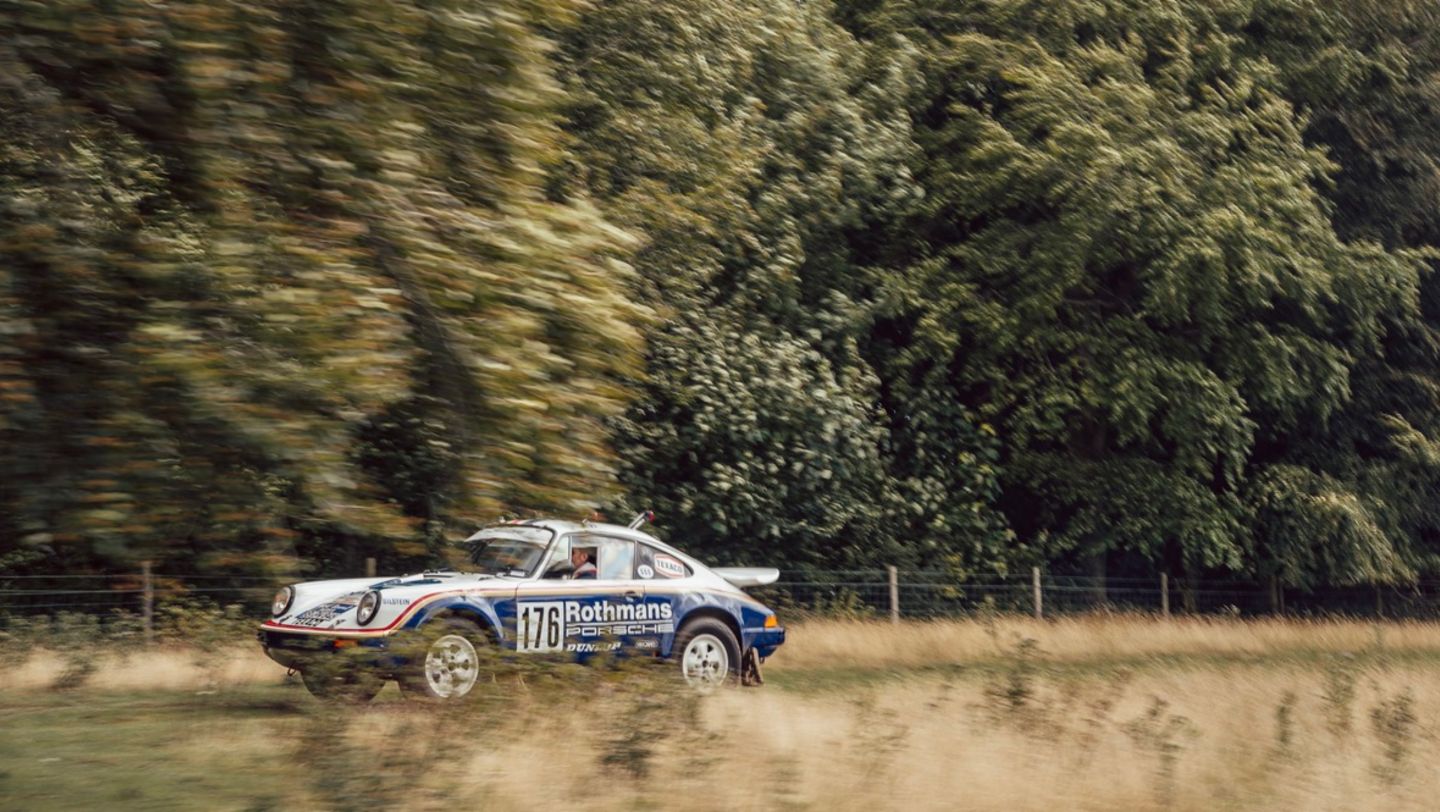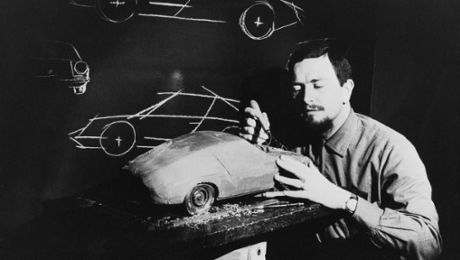As the honoured marque of this year’s Festival of Speed the sportscar manufacturer showed off with different actions. “We’re delighted that Goodwood gave us this brilliant opportunity to share our passion with enthusiasts, Porsche fans and owners here in the UK,” Krishan Bodhani, CEO, Porsche Cars Great Britain, commented.
“Porsche has been one of our most loyal and enthusiastic partners, supporting the Festival of Speed since 1995, and the Revival since 2010,” said the Duke of Richmond and Gordon, host of the Festival of Speed.
Global dynamic debut of the Porsche 718 Spyder RS
Porsche fans and owners enjoyed a whole host of action, with the focus on the challenging 1.16-mile hillclimb running through the centre of the venue. One of the many Porsche models mastering its way up Goodwood’s famous hillclimb was the very first Porsche sports car, the 1948 356 No 1. From the other end of the Porsche 75 Years spectrum was the recently announced 718 Spyder RS, which made its global dynamic debut on the Goodwood hill.
Other modern road-going cars to feature on the hill, each inspired by the ethos of Ferry’s original dream, included the latest 911 GT3 RS, the 911 Dakar, the latest version of the mid-engined 718 GT4 RS fitted with circuit-optimised Manthey Kit, and the new Cayenne S.
Alongside the action, Porsche offered an unparalleled range of static exhibits and immersive displays around the Goodwood site.
Honoured marque at the Festival of Speed
For the fourth time, Porsche was the honoured marque at the Festival of Speed, an honour that includes the construction of a bespoke sculpture outside Goodwood House. Designed by London-based Gerry Judah, this year’s sculpture was made from 50 tonnes of steel and included six cars representing Porsche’s 75 years. These were a 1951 356, the 1960 718 Formula 2, the 1990 962C, the 2009 911 type 997 Sport Classic, the 963 and the latest 911 type 992.
On the Porsche Experience stand, among displays of the latest Porsche models, fans got to see the Mission X concept, a spectacular reinterpretation of a hypercar, with Le Mans-style doors that open upwards to the front and a high-performance, efficient electric powertrain. Making its global debut on the Porsche stand was the Vision 357 Speedster, a roofless all-electric machine with influences from the 356.
Also influenced by the 356 was the floral 356 ‘Art Car’ capturing the essence and realisation of Ferry’s dream. Digital artist Lusion created an immersive digital artwork to depict the original vision of Ferry Porsche through three distinct stages. The opening scene where ideas are random and free flowing, swiftly shifts to the phase where thoughts begin to take shape. The artwork culminates with a seed blossoming into hundreds of flowers that form the outline of a Porsche 356. Bringing the artist’s interpretation of this colourful metaphor to colourful life on the Porsche stand was ‘Flower 356’.
Various highlights on the Porsche stand
Other highlights on the stand included a display from Porsche Classic, a Porsche shop, a café, a children’s play area and a DJ.
Behind the Porsche stand was a large area of parking exclusively for members of the Porsche Club GB, as well as the ‘labryinth’ – a colourful realisation of the Porsche 75 Years logo through which visitors could walk.
‘Dream Big’, a distinctive art installation from artist Chris Labrooy, took pride of place on Goodwood’s cricket pitch. Featuring a 911 Carrera appearing in the hand of a larger-than-life figure with a racing driver’s helmet, the coupé looks like a toy car as it is pushed along the ground.
A parade of Porsche cars
Some of the greatest racing cars from the past 75 years of Porsche also featured on the hill, from the 917 – driven by 1970 Le Mans winner Richard Attwood to the 935/76 to the 919 Hybrid, driven by Timo Bernhard. Around 20 cars were sent from Zuffenhausen to Goodwood by the Porsche Heritage and Museum team.
Also joining the Goodwood celebrations was Porsche factory race driver Nick Tandy, winner of Le Mans in 2015 in the 919 Hybrid, Kévin Estre and Michael Christensen from the current Porsche 963 driver line-up, and Porsche Ambassador, 2015 WEC Drivers’ Champion and former Grand Prix winner Mark Webber.
A special celebratory Porsche parade congregated around the central sculpture and climbed the famous hill twice each day – led by the 356 No 1, the parade included the experimental 928 ‘Trigema’ racing version from 1983, the Cayenne Transsyberia, a 959, a 911 ‘Type 993’ Turbo S and a very special 911 ‘Type 991’ which was the millionth 911 to be produced since the model was introduced in 1963 – driven up the hill on the Thursday of the Festival by golfer and Porsche Ambassador Paul Casey.
An impromptu festival outside the Festival
For the first time ever, extremely high winds caused the Festival to be cancelled on the Saturday (it normally runs Thursday to Sunday), however it was back to running a full programme by Sunday.
With some 70 media from all around the world attending the event as guests of Porsche, some creative thinking was needed to come up with new activities on the Saturday. Thanks to the combined efforts of the teams from Porsche Heritage and Museum and Porsche Cars Great Britain PR department, a new programme was created overnight.
Around 15 cars (and a Porsche tractor!) were taken out of the Festival site to the media base at the beautiful and very accommodating West Dean College, a college of arts and further education, around 5 km away. Here media were able to drive many of the cars on the small private roads of the West Dean estate – or in the case of the 953, 911 Dakar, new Cayenne and Cayenne Transsyberia off the roads. Race cars including the 917/30 were demonstrated by the Heritage team. Thanks to the Museum teams model line experts (also attending as guests of Porsche Cars Great Britain) came to West Dean to hold interviews, while designer Ingo Bauer-Scheinhütte gave workshops on car design. A barista from local coffee roaster Cast Iron gave classes in making the perfect cup.
All the cars were returned to the Festival again overnight, ready for guests to enjoy a full day at the Festival on Sunday.
